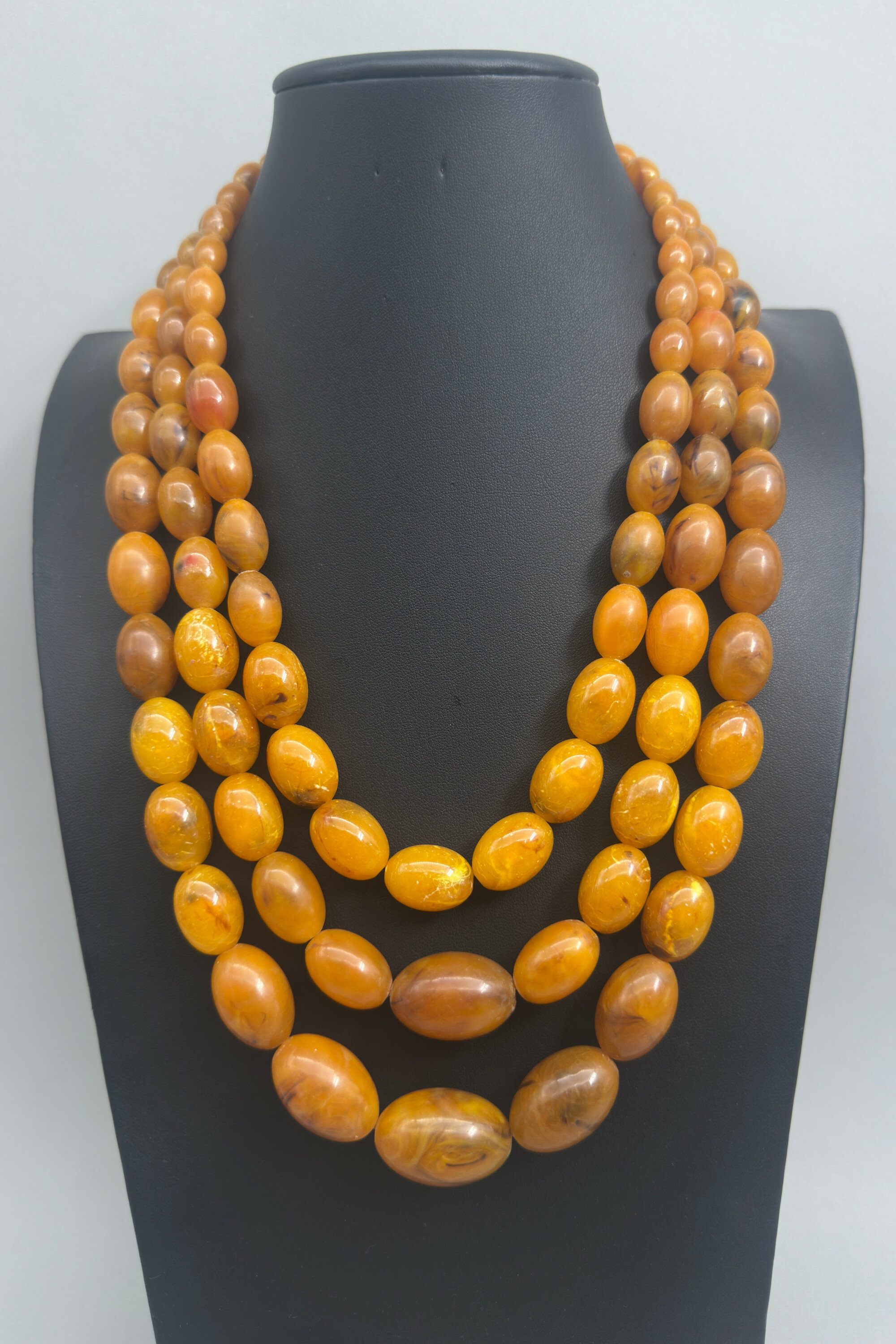
Triple strand of amber Bakelite beads, British 1930s
Price: £750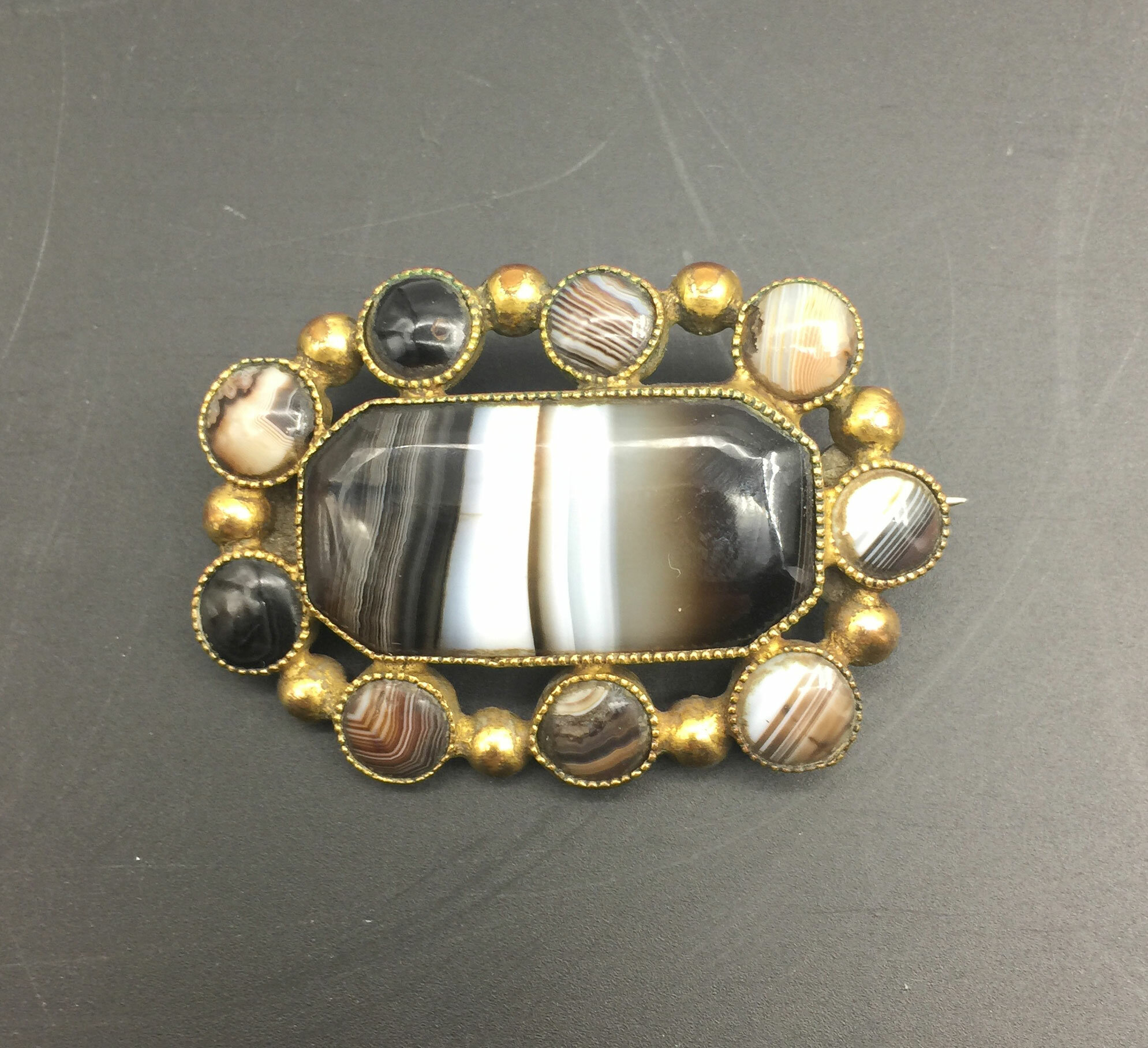
Victorian Scottish agate brooch
Price: £65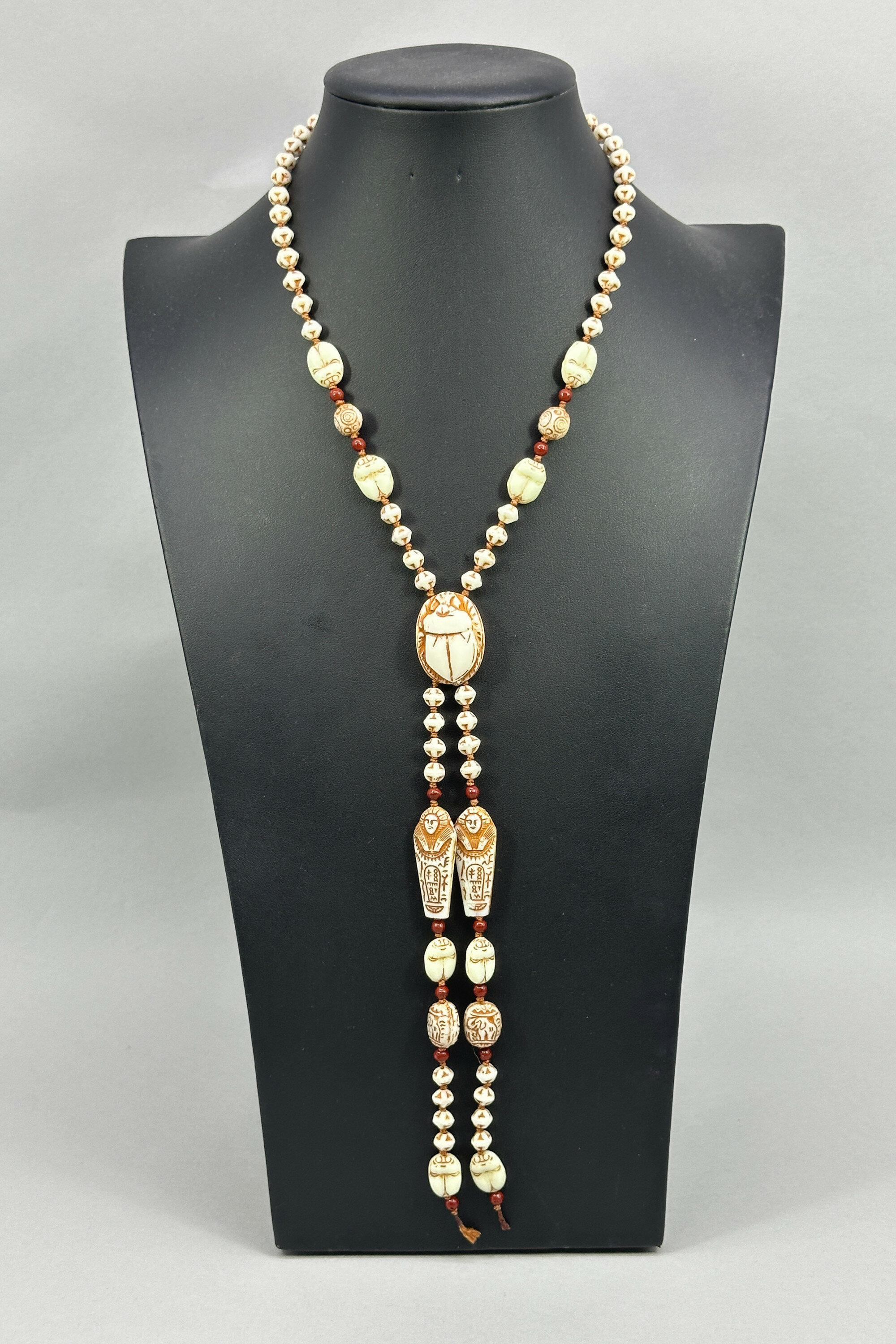
Neiger Brothers Egyptian Revival Uranium glass sautoir necklace 1930s
Price: £75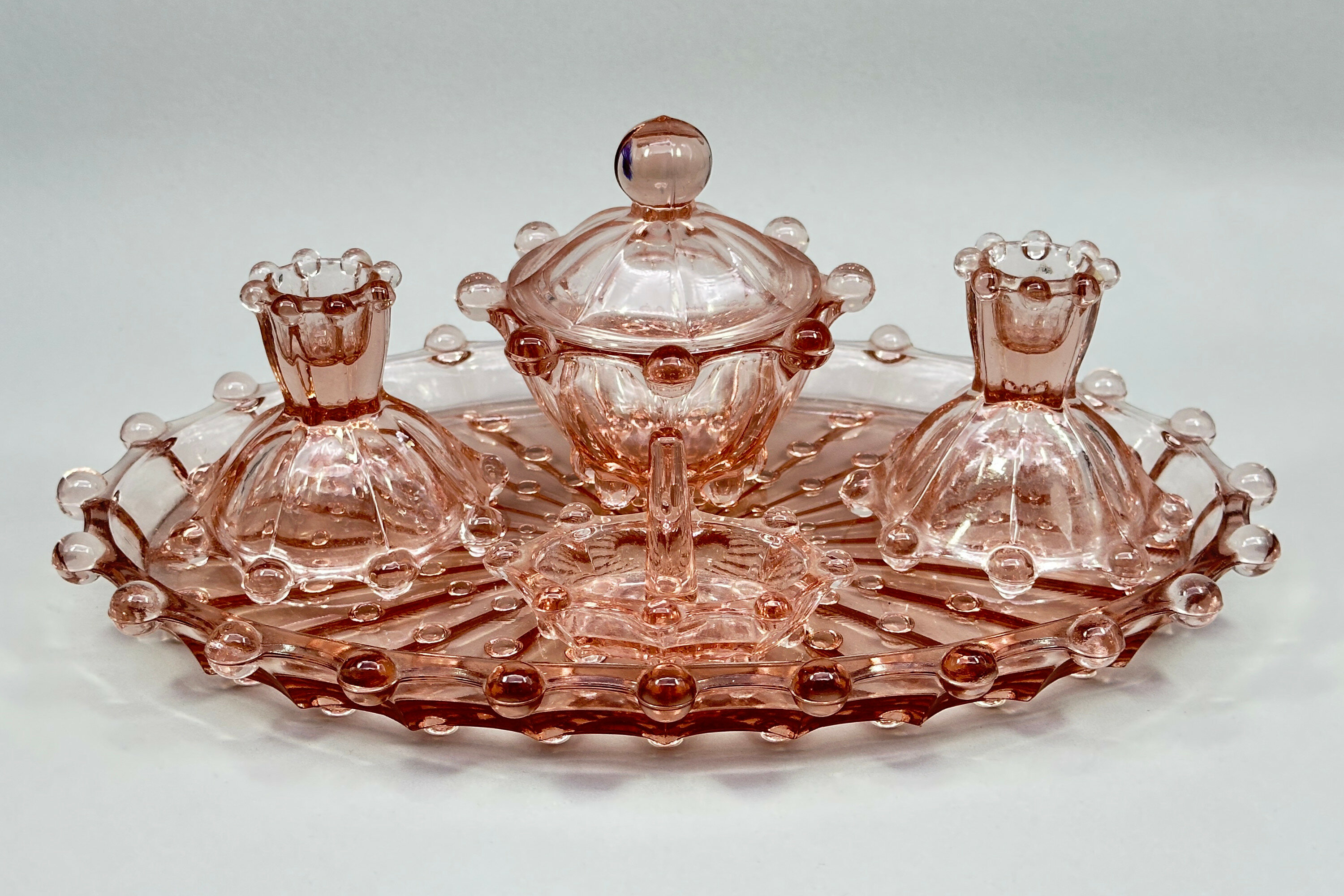
Pink pressed glass dressing table set, Libochoviche, Czech, 1950s
Price: £35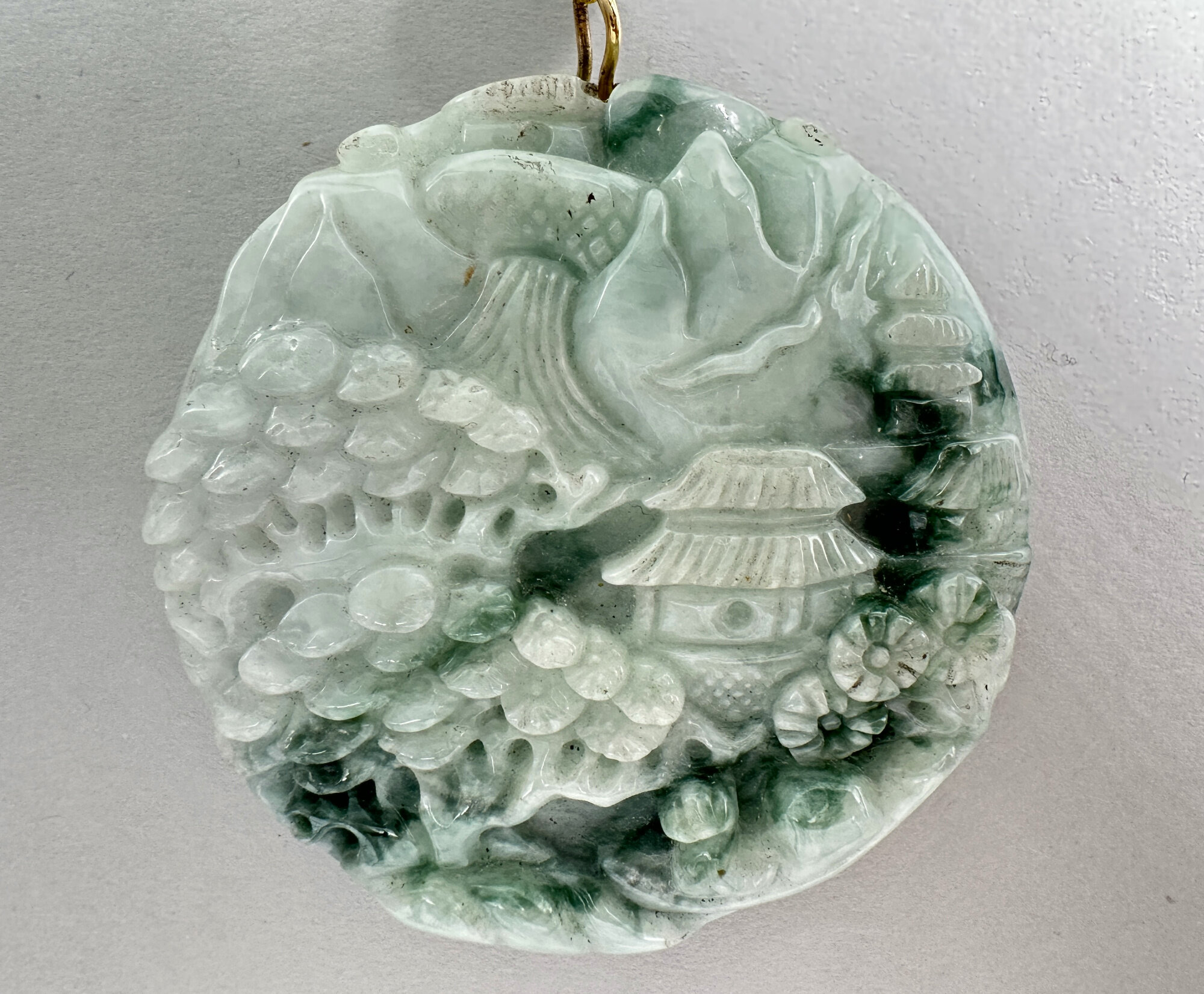
Floating Flower jade pendant on bead necklace
Price: £175
Pair of Beige Opaline Glass Vases, enamelled decoration, probably French late C19th
Price: £75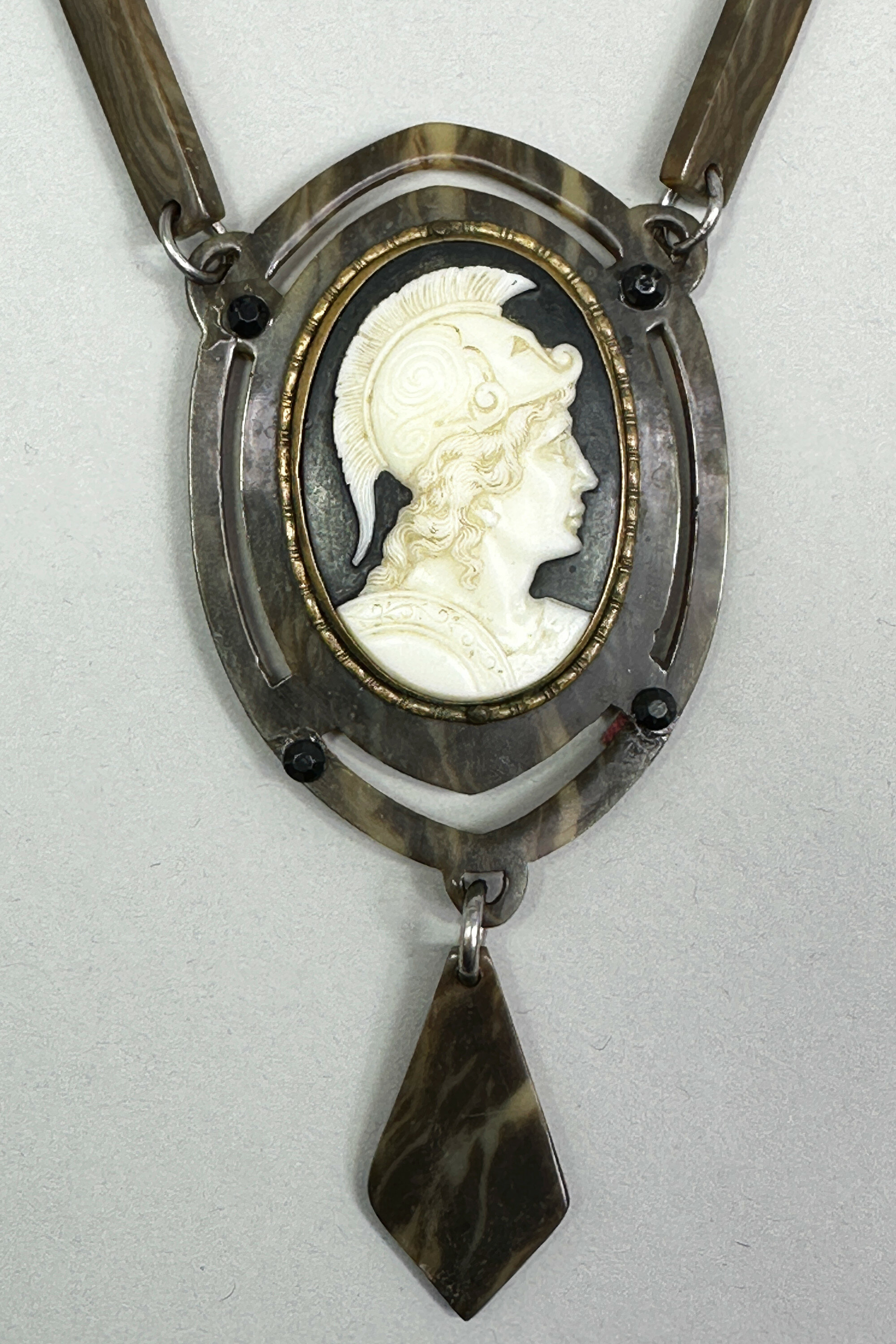
Outstanding brown swirl Bakelite Necklace with faux cameo, French 1920s
Price: £45
Scheurich West German Vase in Brutalist Style, late C20th
Price: £55Although not marked with their name (few pieces were until the later years of production) this vase has all the hallmarks of the Scheurich factory founded in 1954 by Alois Scheurich who had been a partner before then in the firm ‘Scheurich and Greulich’ (S&G) since 1927. While founded later than many of its competitors, Scheurich grew to become the principal exporter of West German ceramics through until the 1980s and beyond, making vases in a wide variety of shapes and designs. This piece is rather more austere than many of their productions and the clean lines of the form combined with the rather stark decoration perhaps make it particularly suitable for a contemporary interior.

Two American Polychrome Enamel Bracelets decorated with Kabuki Masks, 1980s
Price: £20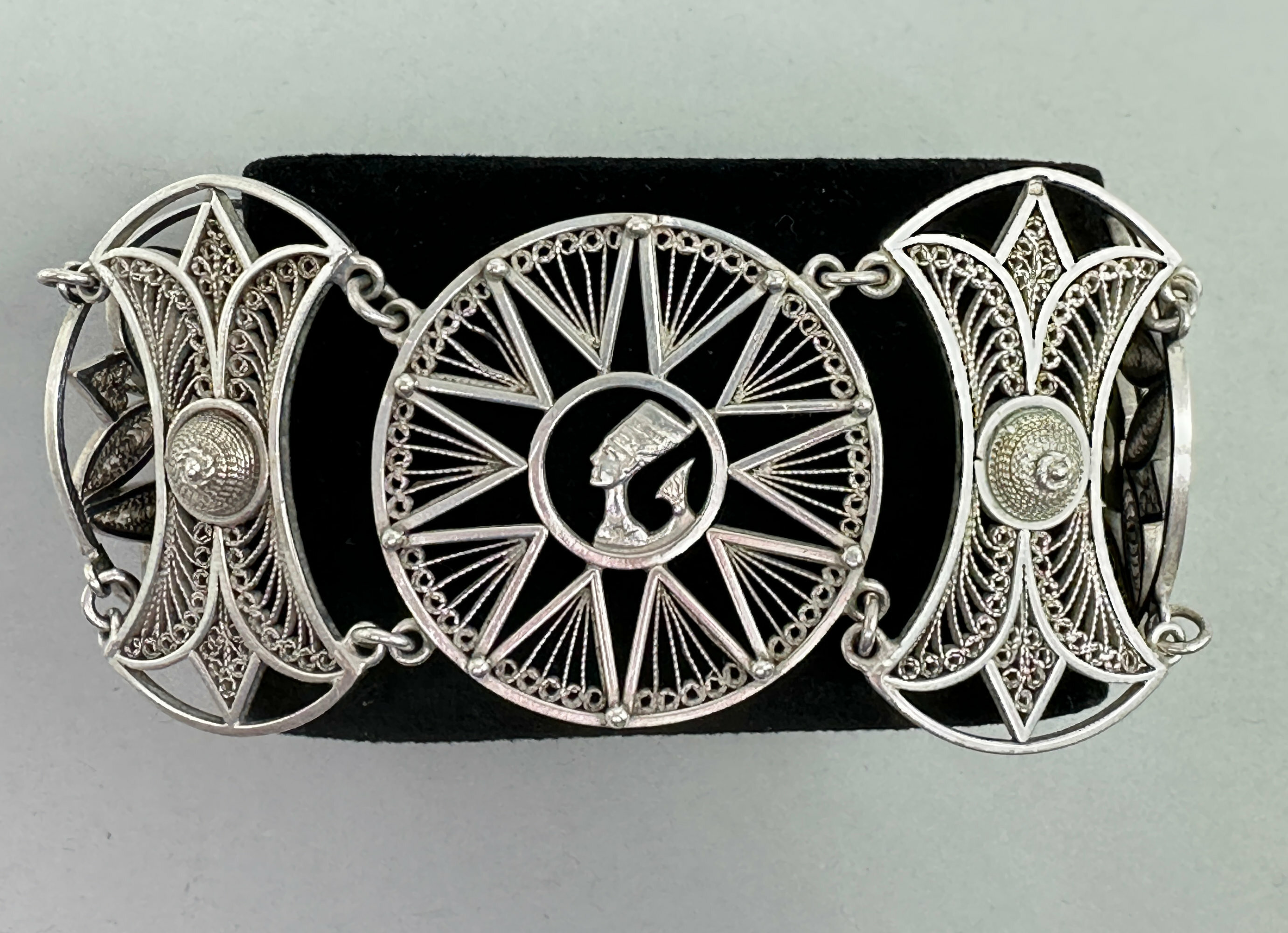
Egyptian Revival filigree cuff bracelet 1930s
Price: £95
Striking amber modernist brooch c1970
Price: £35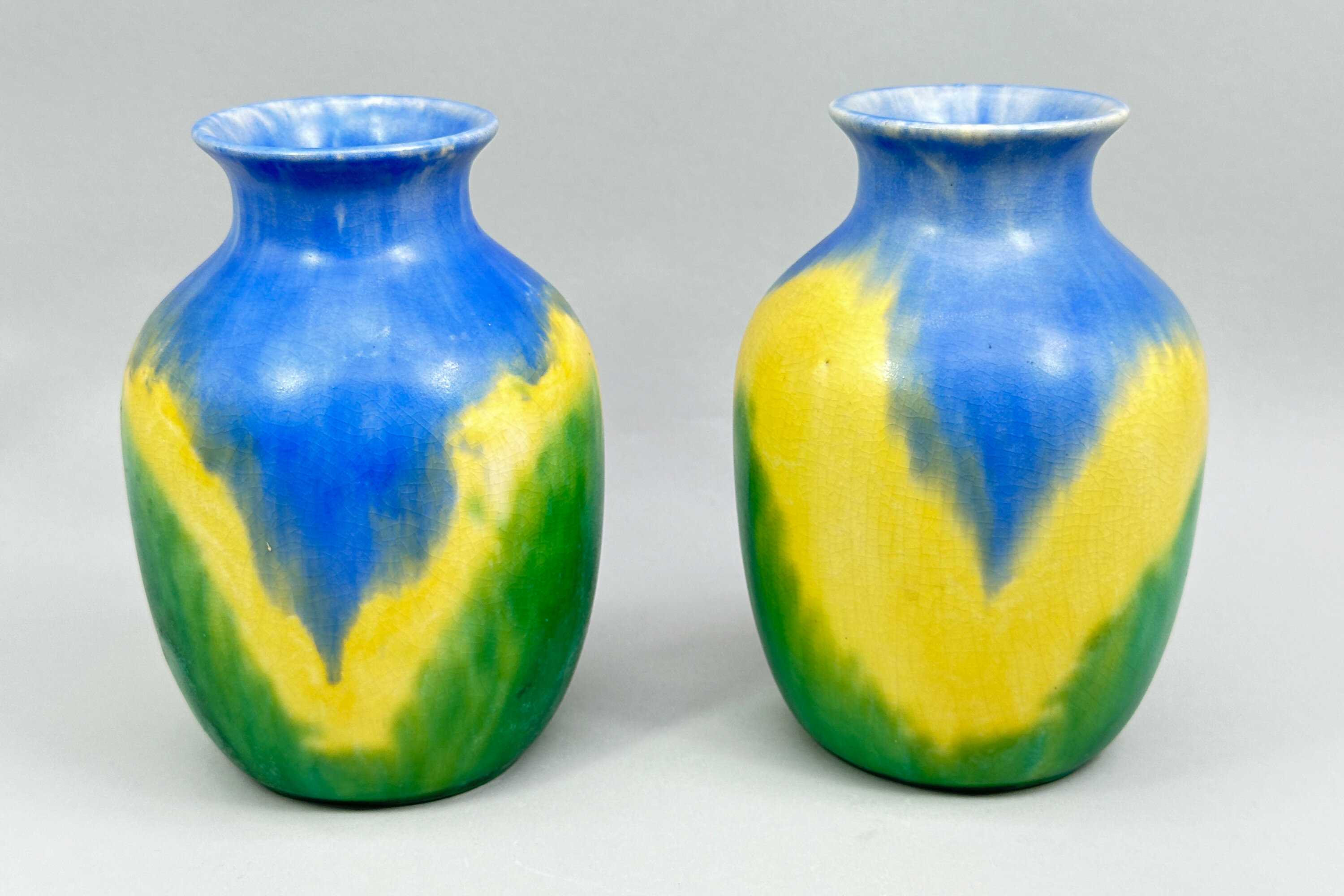
Pair of Art Deco style Avon Ware Vases, 1930s
Price: £45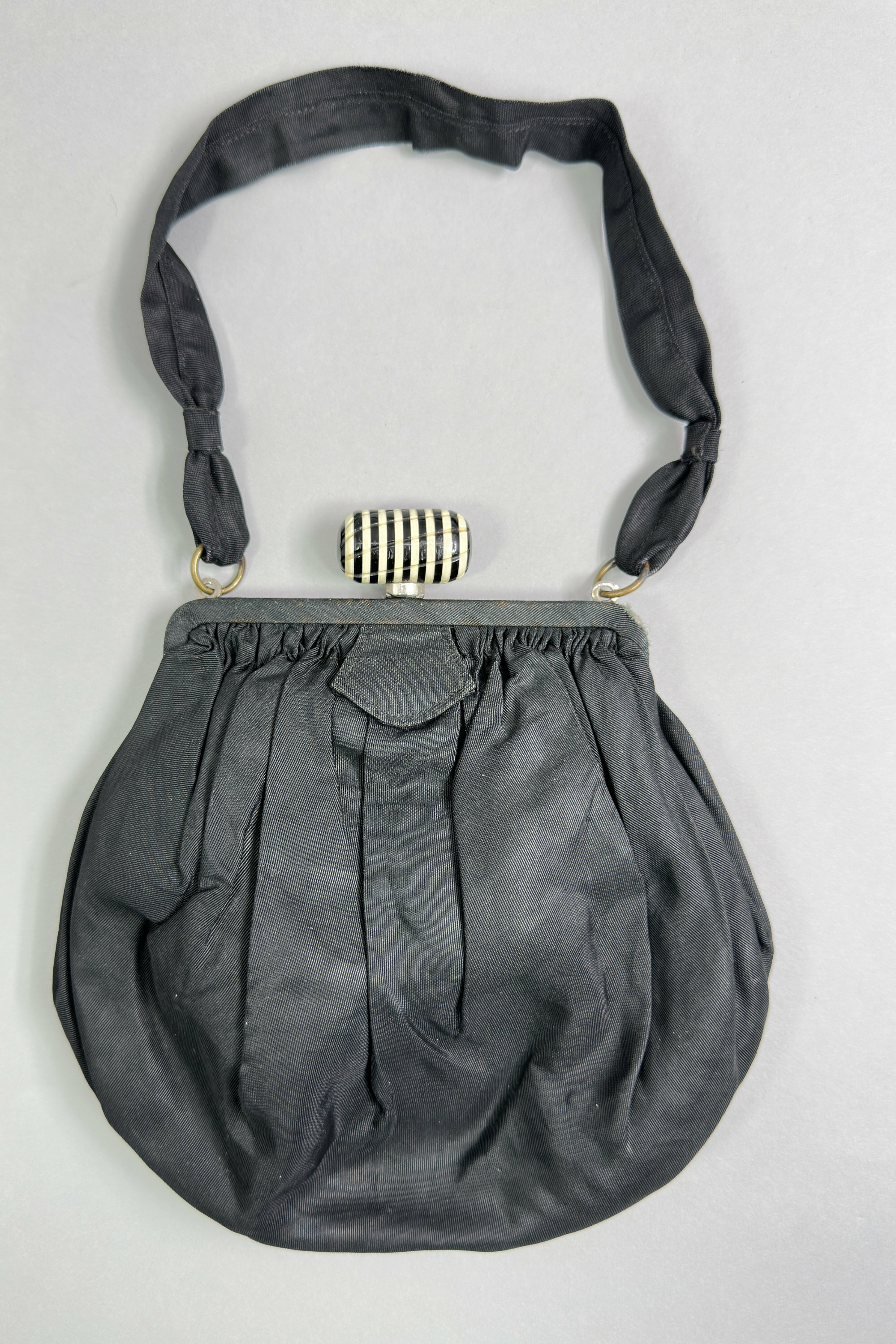
Small Art Deco wrist bag with Bakelite closure, French 1920s
Price: £35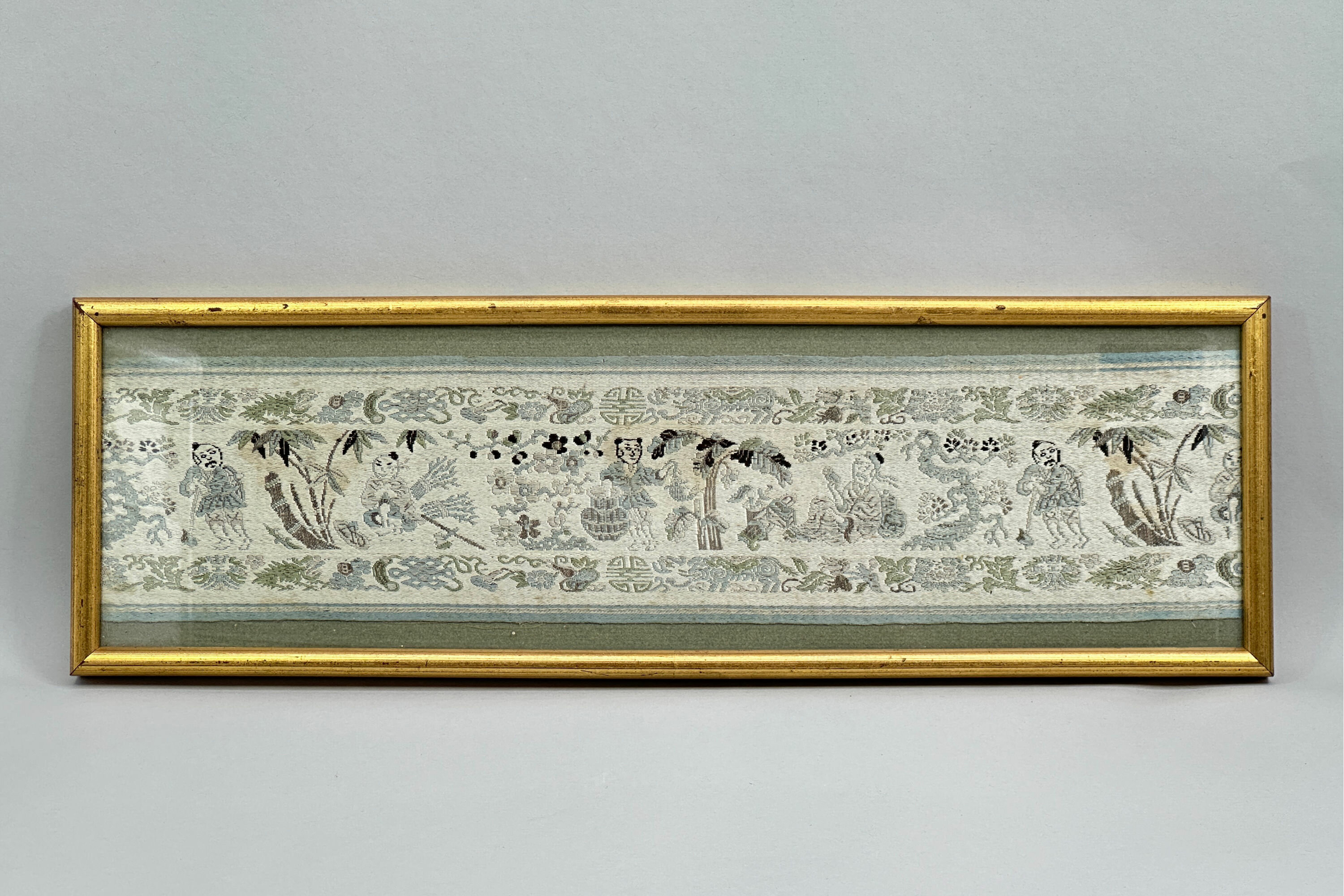
Framed Chinese Silk Embroidered Runner Panel, garden scenes, C20th
Price: £15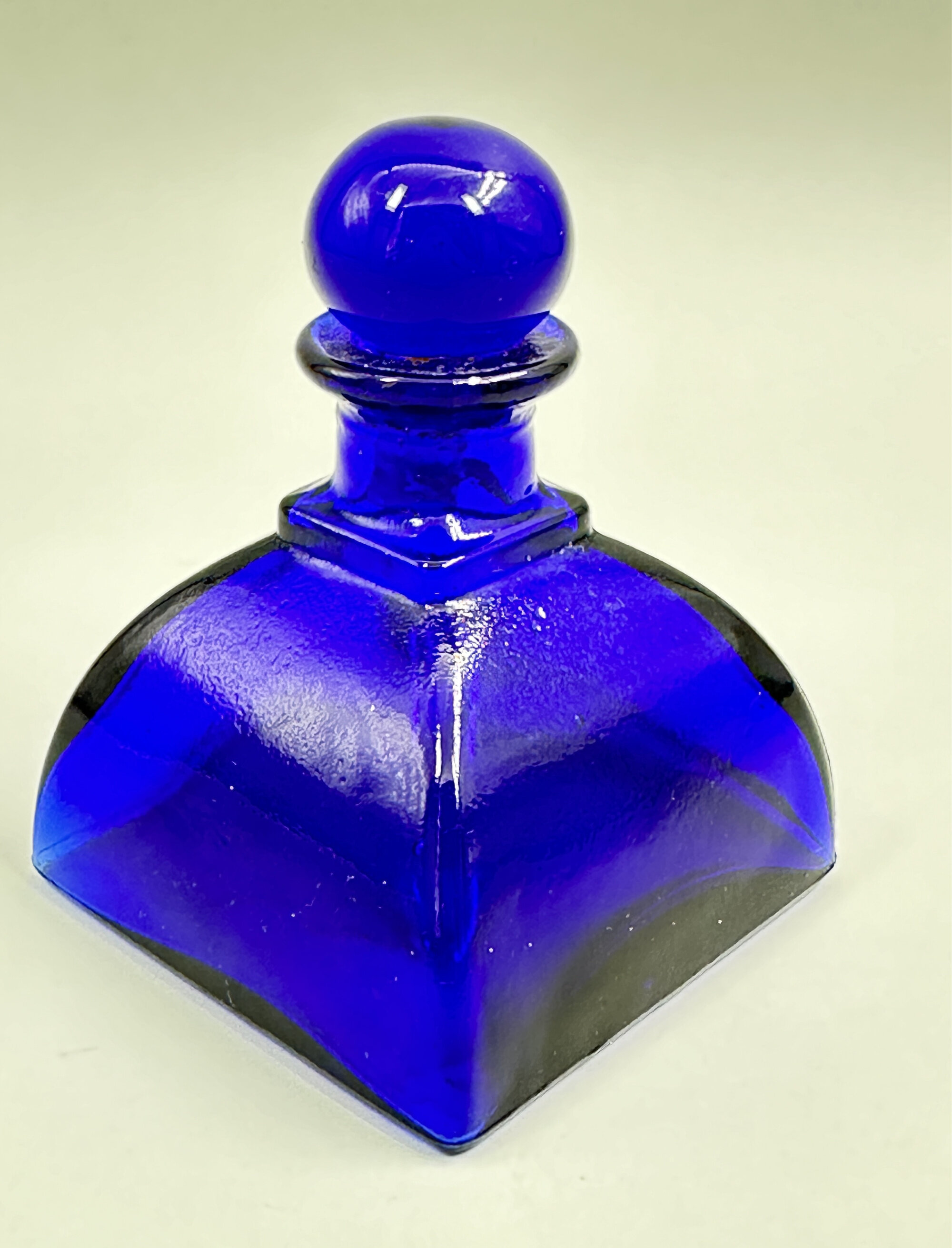
Vintage Cobalt Blue Glass Perfume Bottle and Stopper, 1930s
Price: £25
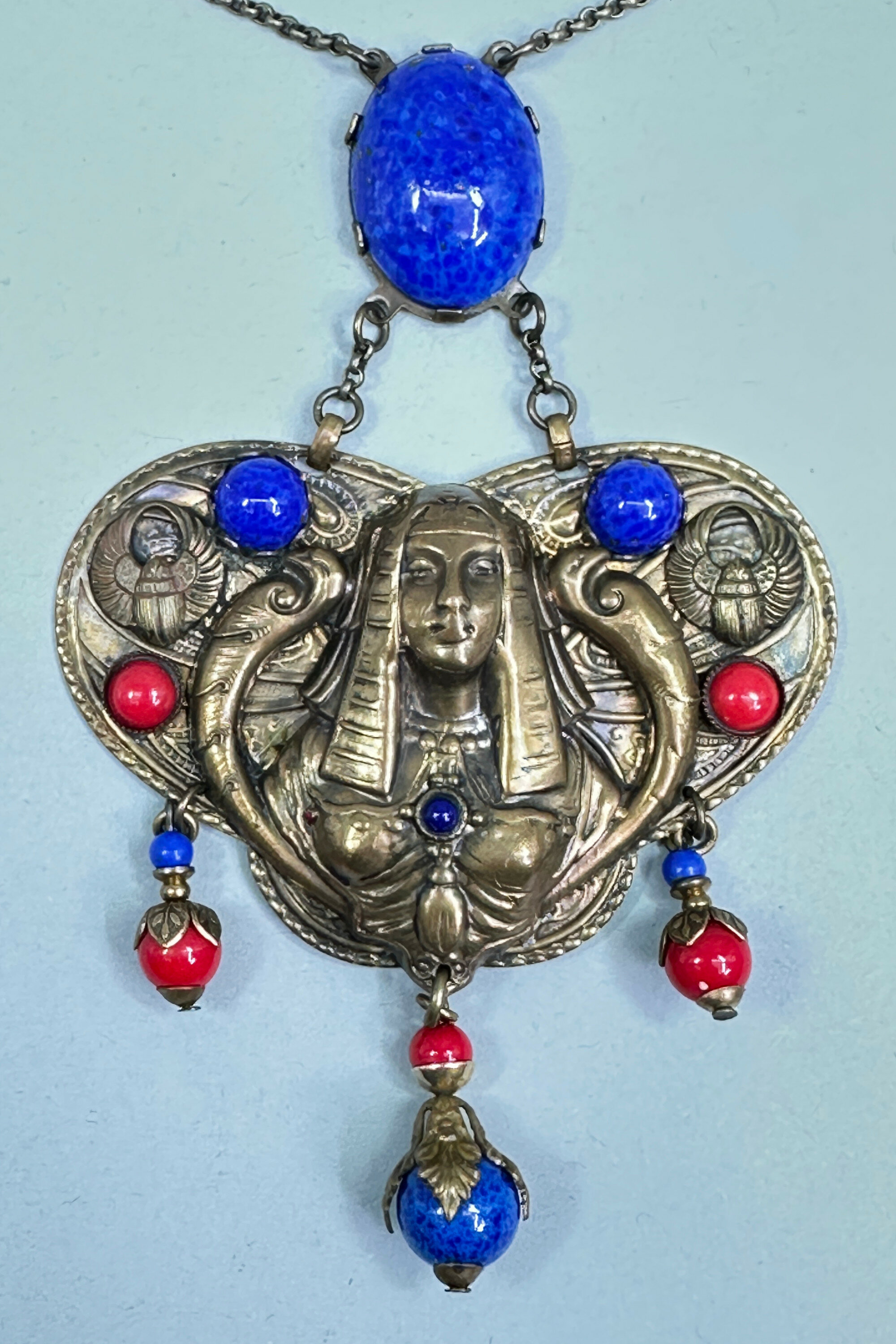
Czech Egyptian Revival Necklace with glass mounts and drops, Edwardian circa 1910
Price: £150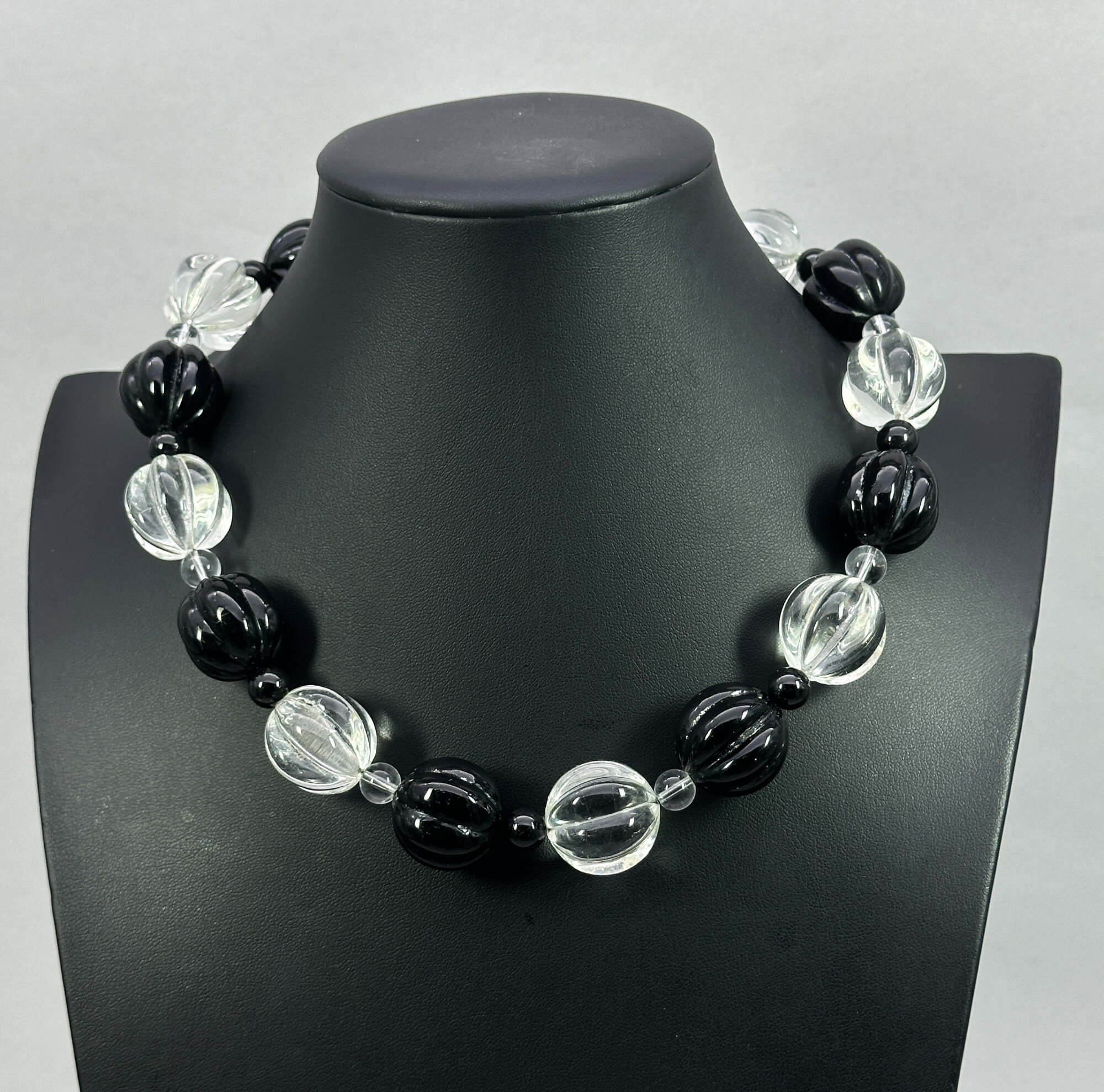
Stunning Art Deco onyx and rock crystal necklace
Price: £250
A pair of Mughal style carved wood miniature screen picture frames, C20th
Price: £55
Figure of a Seated Ballerina, Royal Dux, late C20th
Price: £75Duxer Porzellanmanufaktur, or the Dux Porcelain Manufactory, was started in 1860 by Eduard Eichler in what was then Duchov, Bohemia, later to become part of Czechoslovakia. Production was to continue until the beginning of the second world war and beyond and their later pieces are now generally referred to by the abbreviated name, ‘Royal Dux’. The distinctive pink triangle plaque mark was first used in the late nineteenth century but appears on pieces from all dates, the version found here indicating late twentieth century work which is also confirmed by the rather indistinct stamped mark comprising a triangle surrounded by the wording ‘Hand Painted Made in Czech Republic’. The artist is named as ‘V.David’ and there seem to be two other companion pieces in different poses. The quality is quite excellent and explains the original popularity of the firm when it began manufacturing in the nineteenth century and produced highly successful imitations of its contemporary rivals.
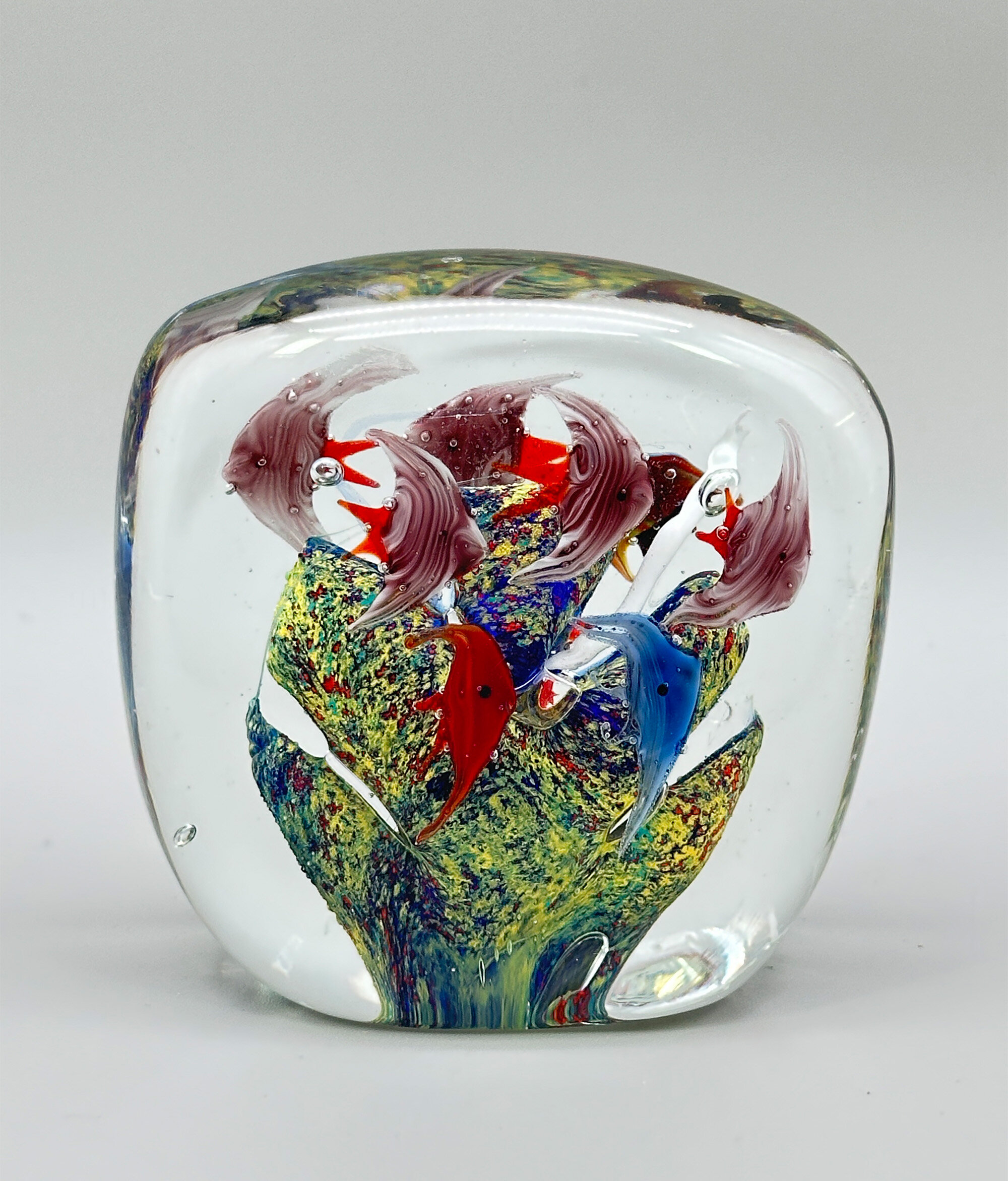
Glass Aquarium Paperweight, probably Murano second half C20th
Estimate: £30 – 40
Vintage Petit Point Tapestry Bag, Austria, 1920s
Price: £15
Edwardian Scottish bloodstone bar brooch c1910
Price: £30
Framed Oil Painting on Board of a Winter Landscape Scene, C20th
Price: £55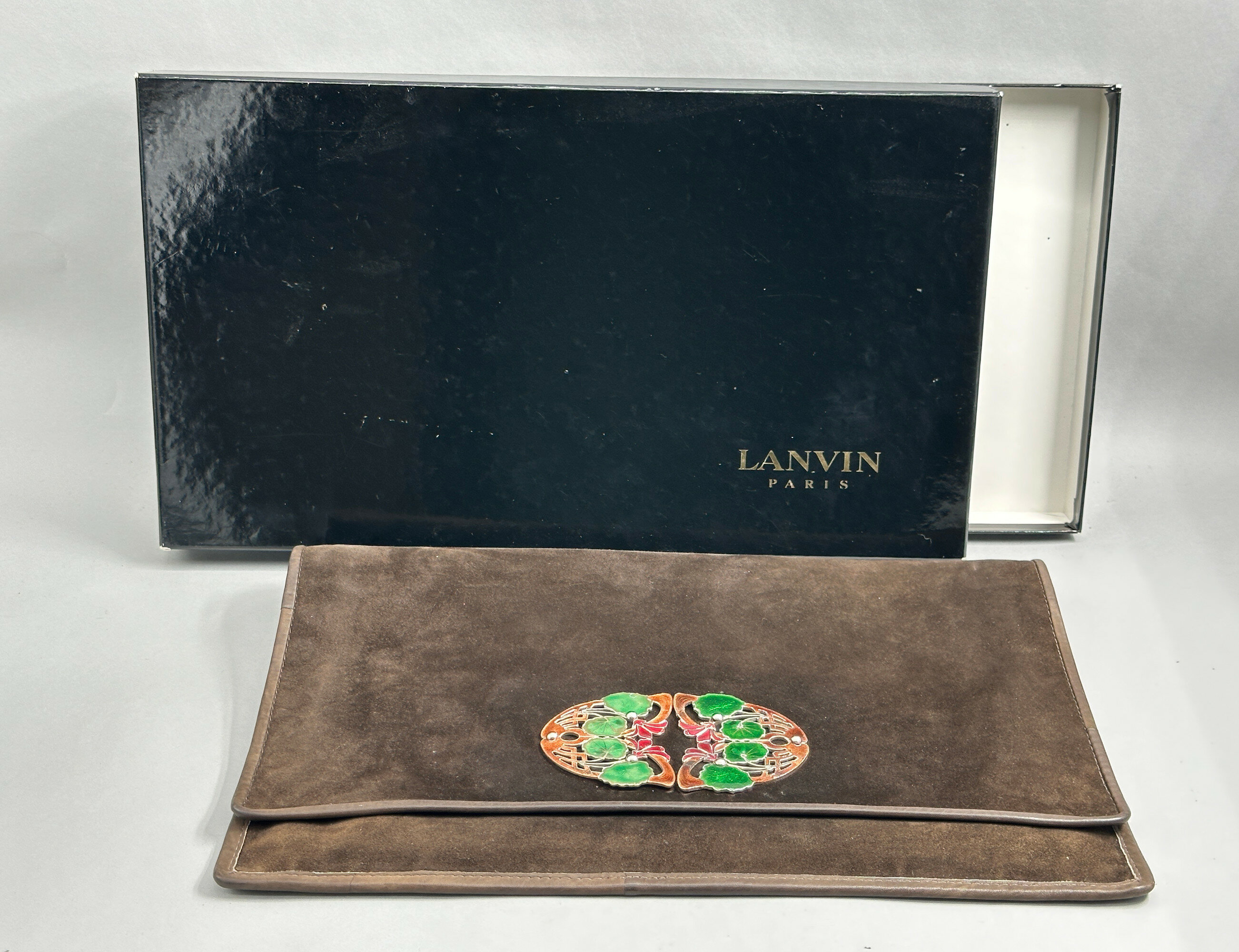
Outstanding Suede Lanvin Clutch in original box 1950s
Price: £250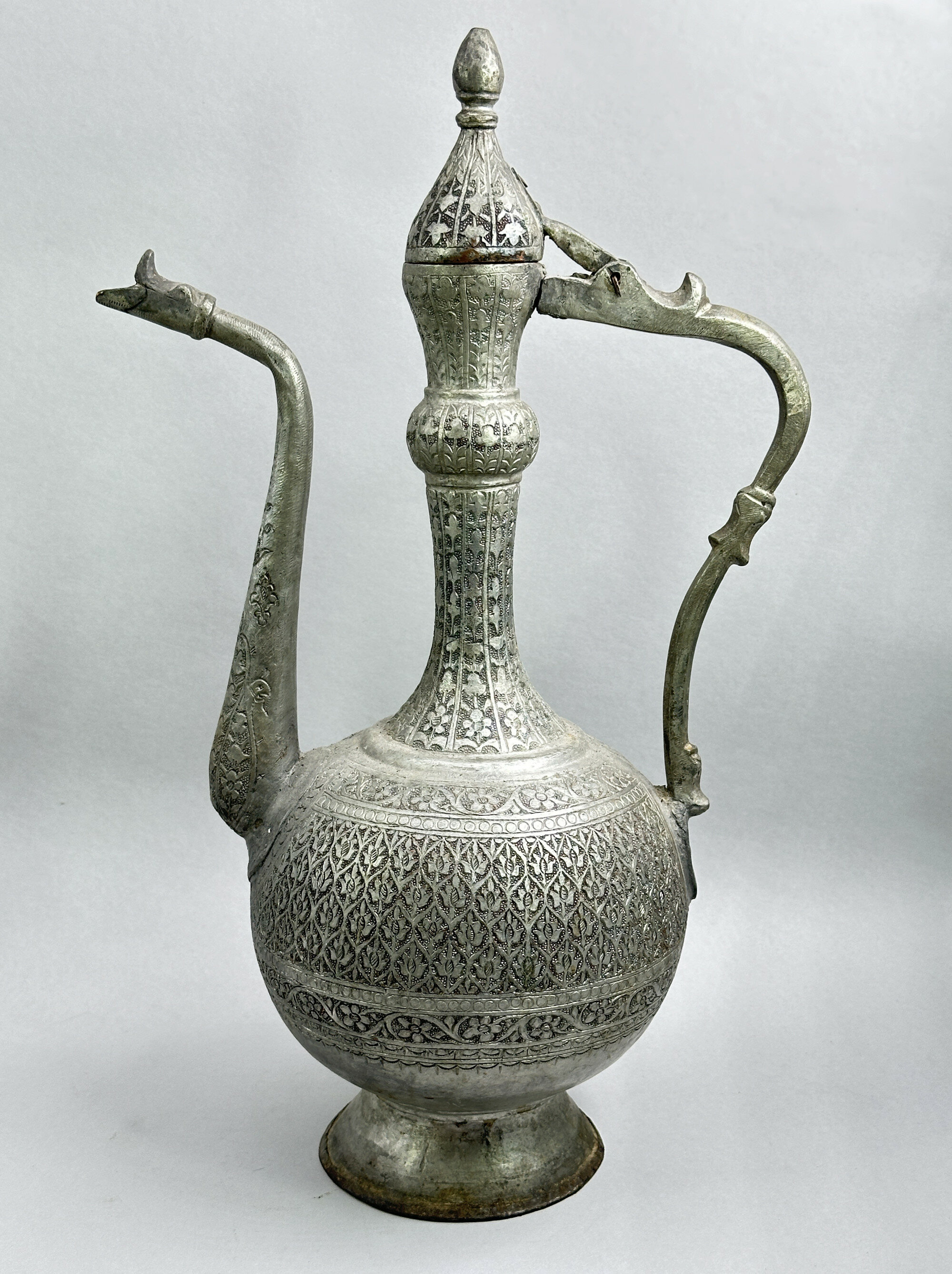
A Large Islamic Pewter Ewer, C20th
Price: £45
Edwardian belt buckle encrusted with marcasite stones
Price: £75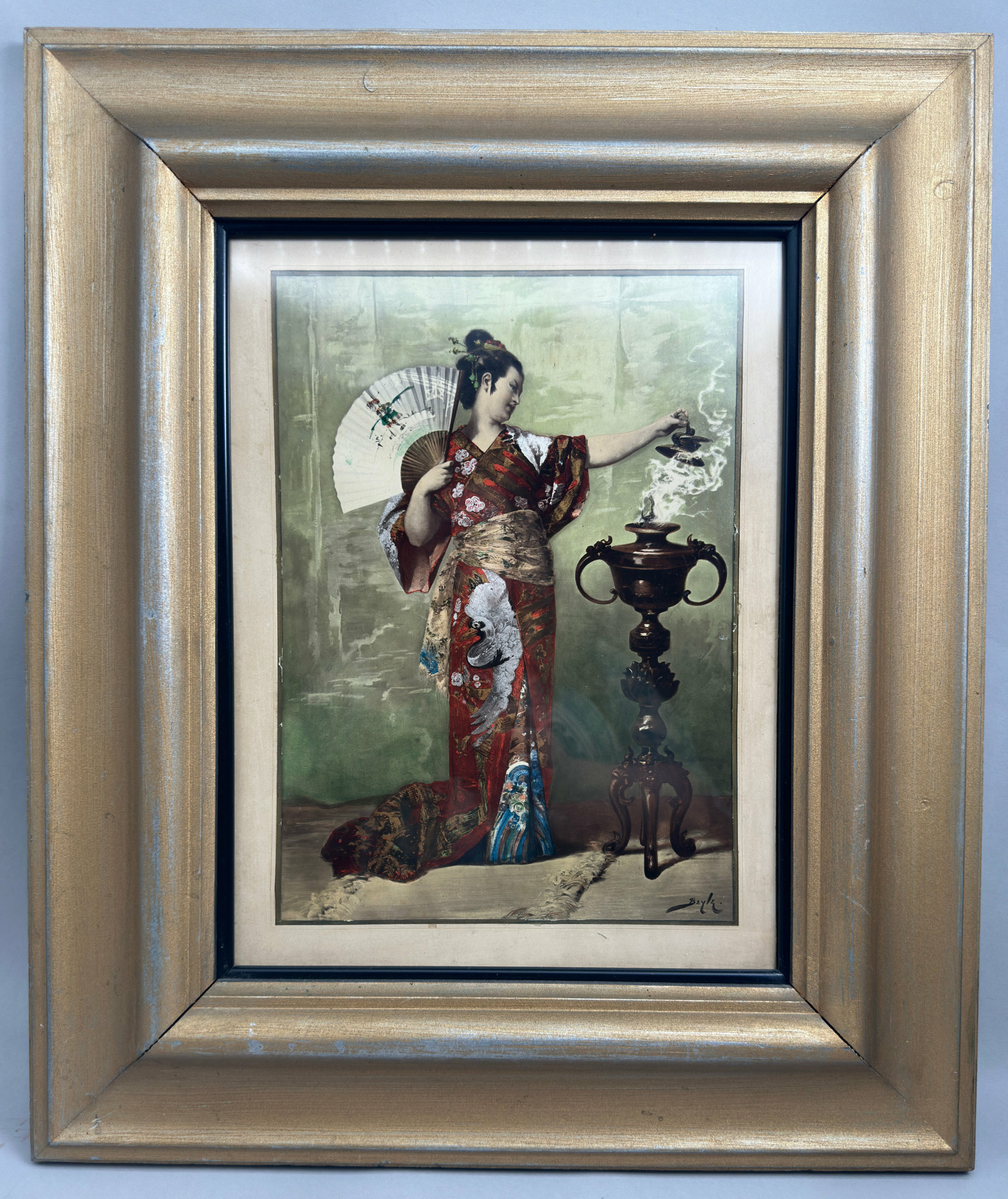
Léon Vidal Photochromie : A Japanese Woman with a Parasol, late C19th
Price: £550...............................................................................................................................................................
Art and artistry combine in this striking photographic reproduction of a painting by the French artist Pierre Marie Beyle (1838-1902) produced by the ‘Photochromie’ printing process invented and perfected by the French photographer Leon Vidal (1834-1906).
Leon Vidal (see image 11) developed the photochrome printing process in the 1870s as a method of accurately colouring photographs for quantity reproduction. From the original negative a number of copy negatives were made, on glass or thin paper. On each negative, those areas which were not to be coloured were blocked out with an opaque medium. For example, on the negative prepared for the colour blue, only those areas to be coloured blue in the final print remained uncovered. Negatives were prepared for as many colours as required, up to twelve, and then used to make lithographic tint plates which were employed to transfer colours in succession to the monochrome photograph from the original negative.
‘Photochromie’, as the photochrome printing process was called, was patented in 1872 and 1874 and refined by Vidal in the studios of the Société Anonymes des Publications Périodiques, whose director he became in 1875. This Société was founded in 1869, initially for a period of 60 years, and its first major publication, published in 1878, was a lavishly illustrated book entitled ‘Le Trésor artistique de la France’ in which the French heritage in the arts was represented by thirty nine specially selected items of particular cultural and artistic merit, each described by an expert in the field and all illustrated, a few in monochrome and the bulk, thirty in all, in colour employing the newly discovered photochromie process. The results were unfortunately uneven and the cost of the volume, three hundred francs, prohibitively high which resulted in the first volume of a proposed series being its last. Individual plates from this publication appear on the market today and are sought by collectors.
Less commonly seen are individual representations of contemporary paintings which Vidal also produced in the studios of the Société at its premises, 13 Quai Voltaire, Paris. Vidal’s printing process was not the only one available to the French public in the late nineteenth century but it was probably the most accomplished and Vidal sought to exploit this by issuing a series of reproductions suitable for interior decoration. Most popular amongst the artists whose work he chose to reproduce seems to have been Pierre Marie Beyle (1838-1902).
Beyle was born in Lyon in 1838 and studied in Paris where he later exhibited regularly at the Salon, from 1867 to 1900. Around 1870, he went to Algiers and the themes of the city are reflected in his paintings of those years (see image 12 for an example). Later he became known for landscape and genre scenes many of which depict the surroundings of Normandy where he used to spend his summers and in addition he followed the contemporary fascination with the Orient producing paintings with themes from the Far East such as we have here. Beyle also worked as a caricaturist in satirical newspapers such as the Petit Journal, the Fun Journal and Bouffon in the 1860s and 1870s. He exhibited at the Grafton Gallery in London in 1881, then went to Scotland where he exhibited at the Institute of Fine Arts in Glasgow. In 1900, he exhibited at the Universal Exhibition. After settling in Chennevieres-sur-Marne towards the end of his life he died in Paris in 1902 and was buried at Montparnasse.
The rich palette of colours employed in Beyle’s paintings were well suited to reproduction by Vidal’s newly invented printing process and he doubtless chose those works which he felt would have a particular popular appeal. The rage for ‘Japonisme’ in the second half of the nineteenth century is well documented and its influence was widely spread, perhaps most famously in David Belasco’s play ‘Madame Butterfly’ which inspired Puccini’s opera of the same name. The Geisha figure here fortunately holds a fan rather than a sword and is seen gazing at an elaborate bronze incense burner. The elaborate colours of her robe are well reproduced by the ‘Photochromie’ technique and the whole composition has a richness of presentation which doubtless reflects the original painting which appears still to be in the private domain. Beyle’s signature is accurately reproduced at the bottom right and Vidal’s invention is proudly announced on the reverse with the sun inspired emblem at the top and the wording below ‘Photochromie’ ‘Photographie en Couleurs’ ‘sans le secours du pinceau’. No hand colouring here! The modern frame acts acts as complement to the image and both combine to present a highly decorative picture of considerable cultural interest.

Brown Alabaster Egg painted with a bird and flowers, fitted wood stand, Chinese C20th
Price: £25
Bay Ceramic Ewer No 268-30, West Germany, 1960s
Price: £55Bay Ceramics was founded by Eduard Bay in the 1930s and based in Ransbach Baumbach, the heart of the main West German pottery producing region. Their productions included vases in a wide variety of shapes and designs which continued in production until the 1980s. Bodo Mans was amongst their most famous designers working in the 1950s and 1960s. He seems to have concentrated on organic semi abstract designs and ewers in this form, with the same pattern number but in a variety of different glazes, are attributed to him. This monochrome mustard glaze seems particularly attractive and complements the design very successfully producing a striking and decorative item which might enhance a wide variety of interior settings.
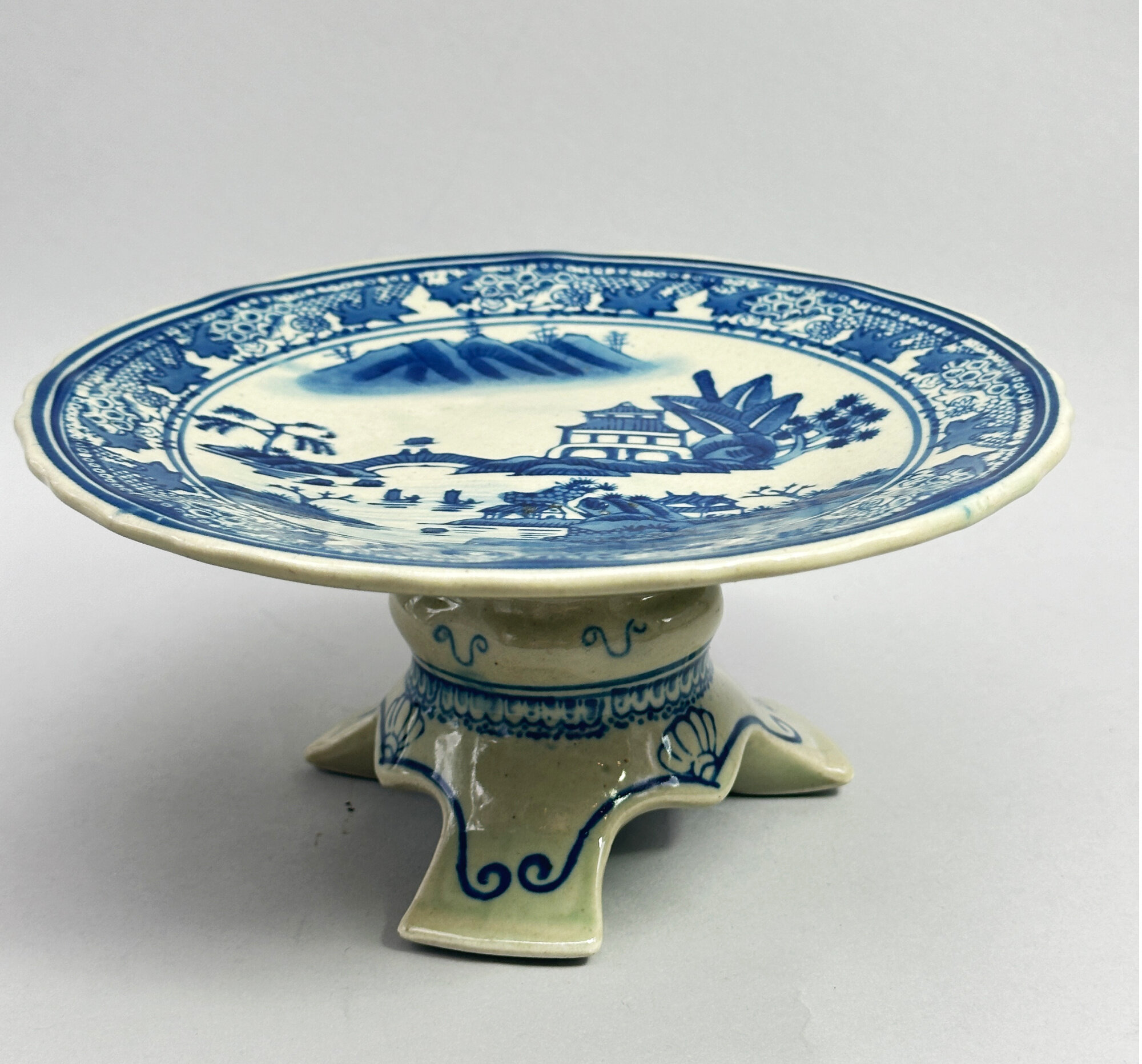
Japanese Celadon Ground Tazza with Chinese Nanking decoration, late C19th
Price: £25
Noritake Vase in the Form of a Pomegranate, marked, Japanese, early 20th Century
Price: £25The Noritake compnay was set up by the Morimura family at Noritake near Nagoya in the early twentieth century. Called at first 'Nippon Toki Kaisha Ltd' on its founding in 1904, the business soon changed its name to 'Noritake' and began the manufacture of porcelains for the domestic and export markets. The mark seen here is interesting. It comprises a 'Komaru' symbol, crowned with "Noritake" and with the mark 'Made In Japan'. The centre symbol said to be taken from the Japanese character "Komaru", meaning "overcoming difficulties". According to the Noritake company tradition this mark was designed when contact with the different culture of the west early in the 20th century caused problems of adaptation. It is also known as the 'tree crest mark' which is the clan crest of the Morimura family. This mark is said to have been registered in London for the UK market by 1908. The curled up ends of the Komaru symbol seen here distinguish this mark from later versions and allow a dating of this piece to the early twentieth century.
Noritake porcelain became synonymous with finely potted tea and breakfast services made in great quantities for export. This vase is a rather more unusual production and shows the factory capable of producing high quality pieces.

Sold silver and enamel Panda pendant necklace c1980
Price: £55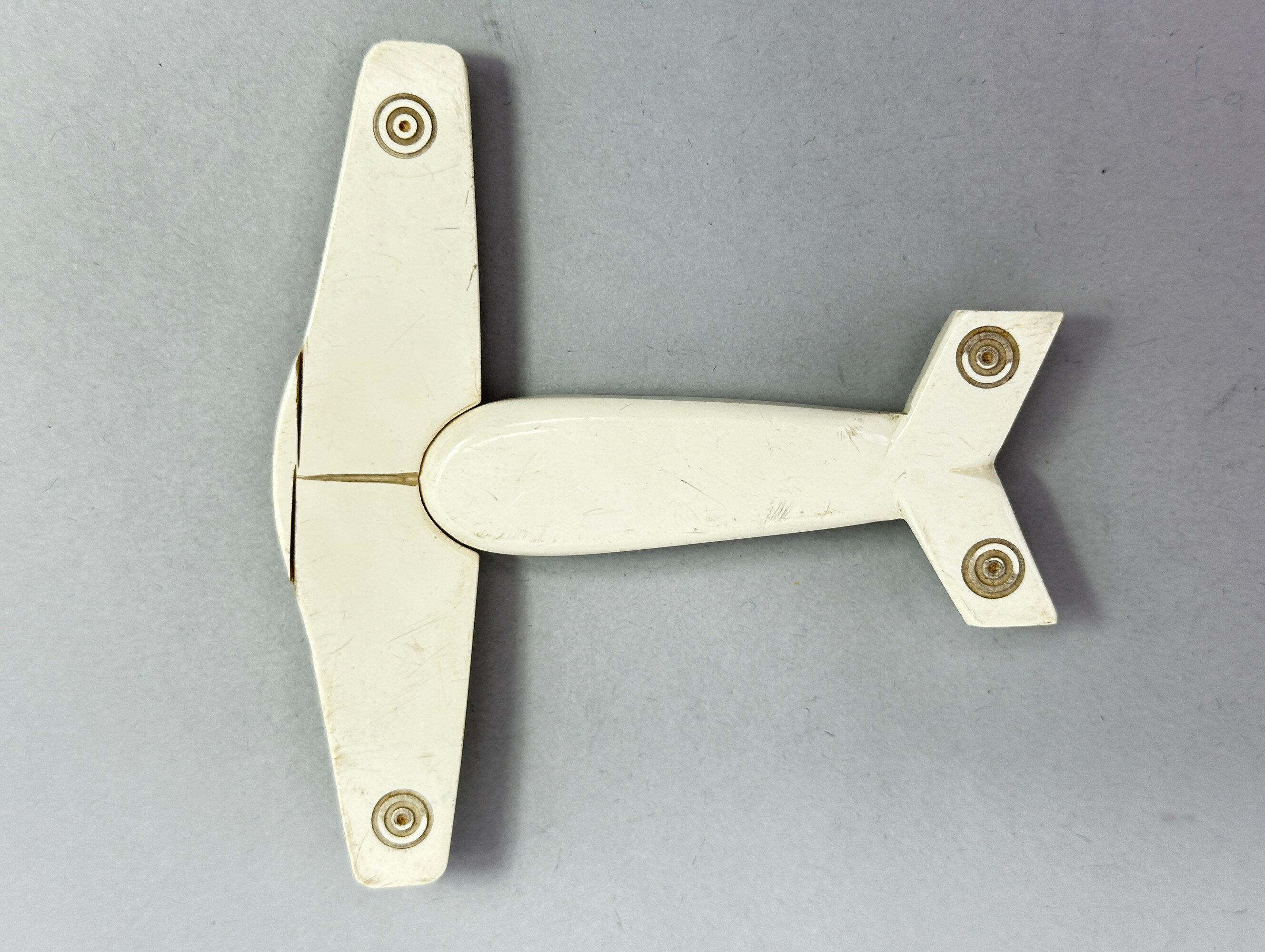
Striking Bakelite buckle in the shape of an airplane, American 1930s
Price: £45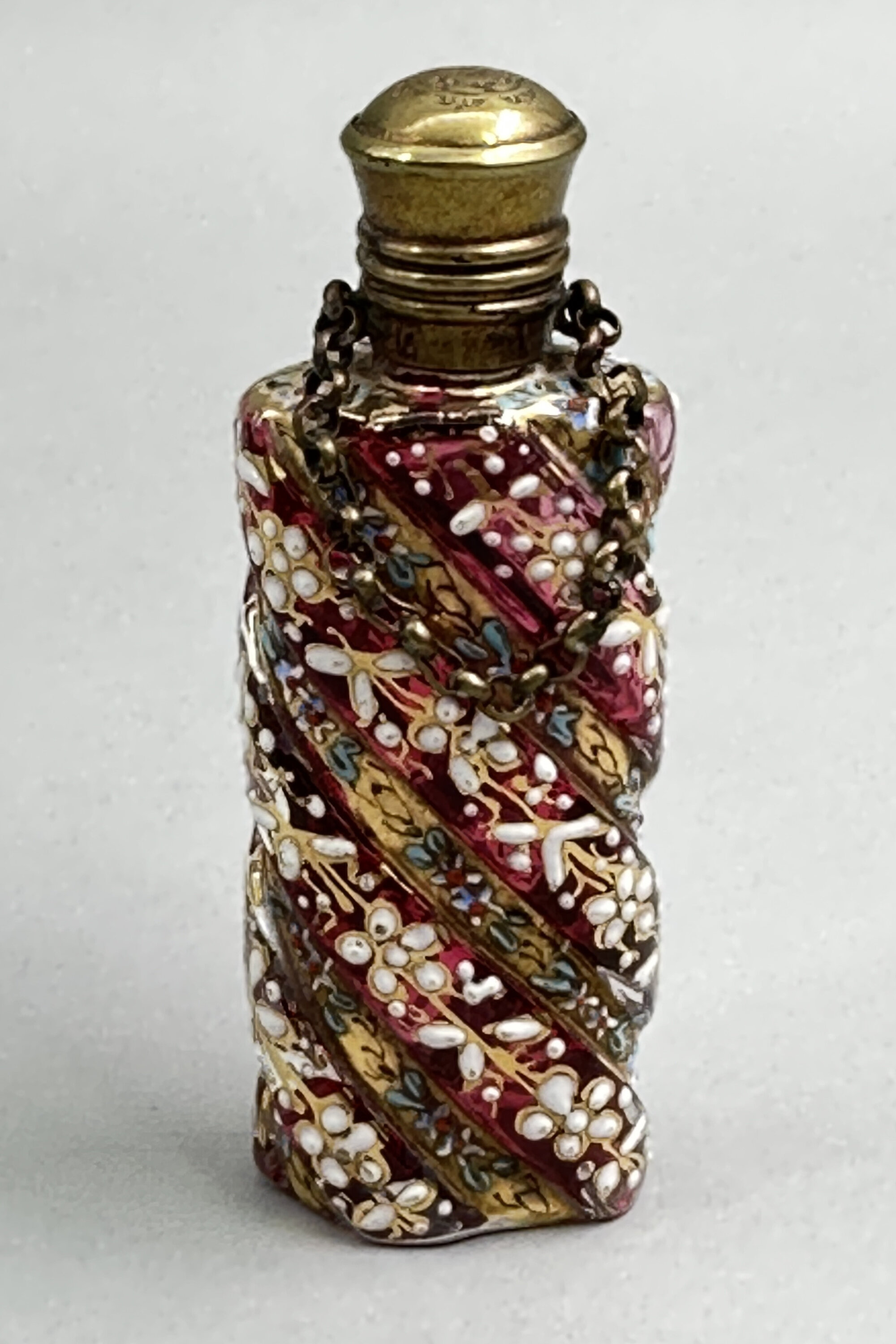
Beautiful Victorian ruby glass scent bottle, circa 1880
Price: £350
Chinese Export Nanking Pattern Saucer, Qianlong period (1736-1795)
Price: £75
Egyptian Revival necklace depicting Tutankhamun c1980
Price: £45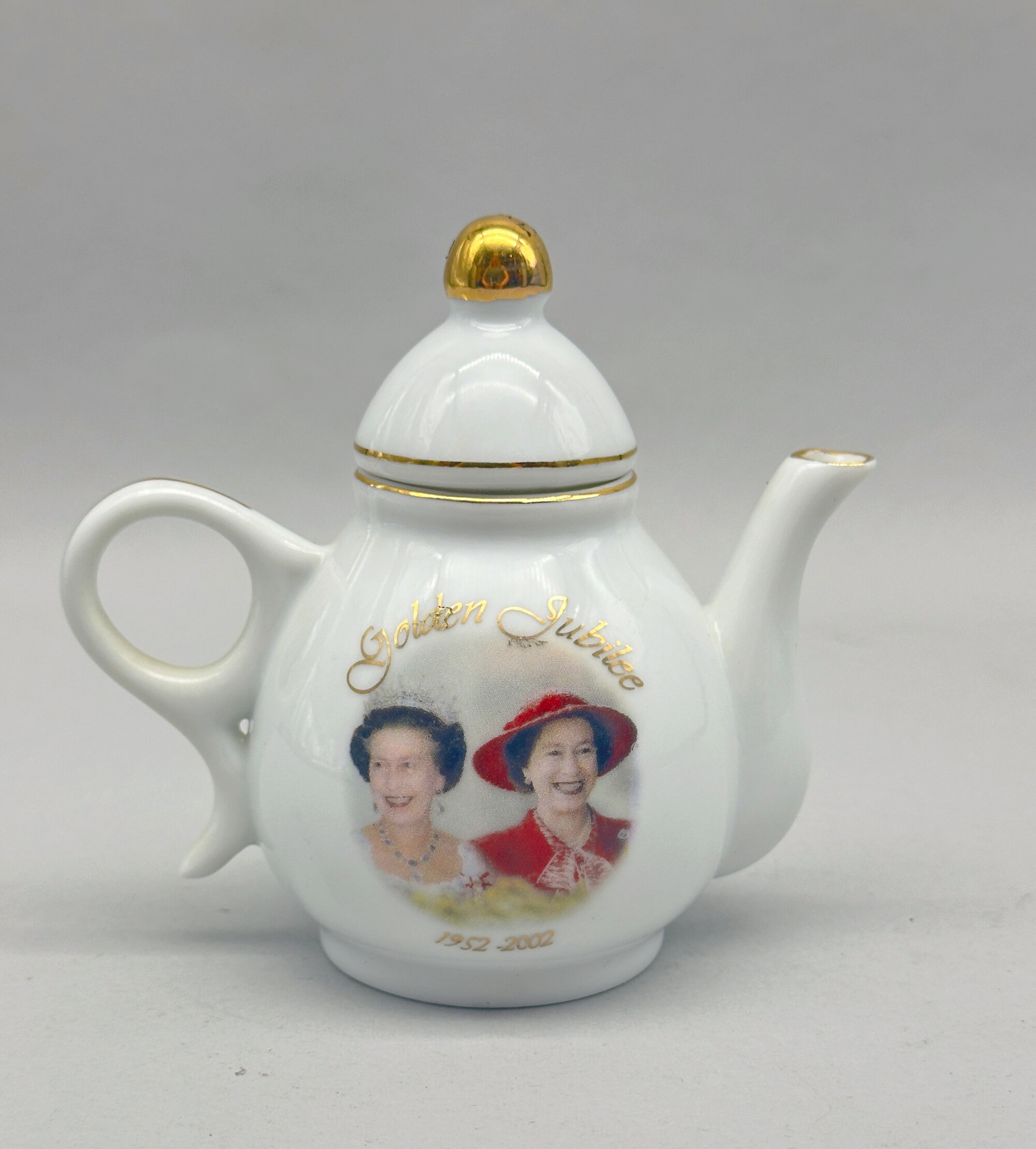
Teapot and Cover : Golden Jubilee Queen Elizabeth II, 2002
Price: £10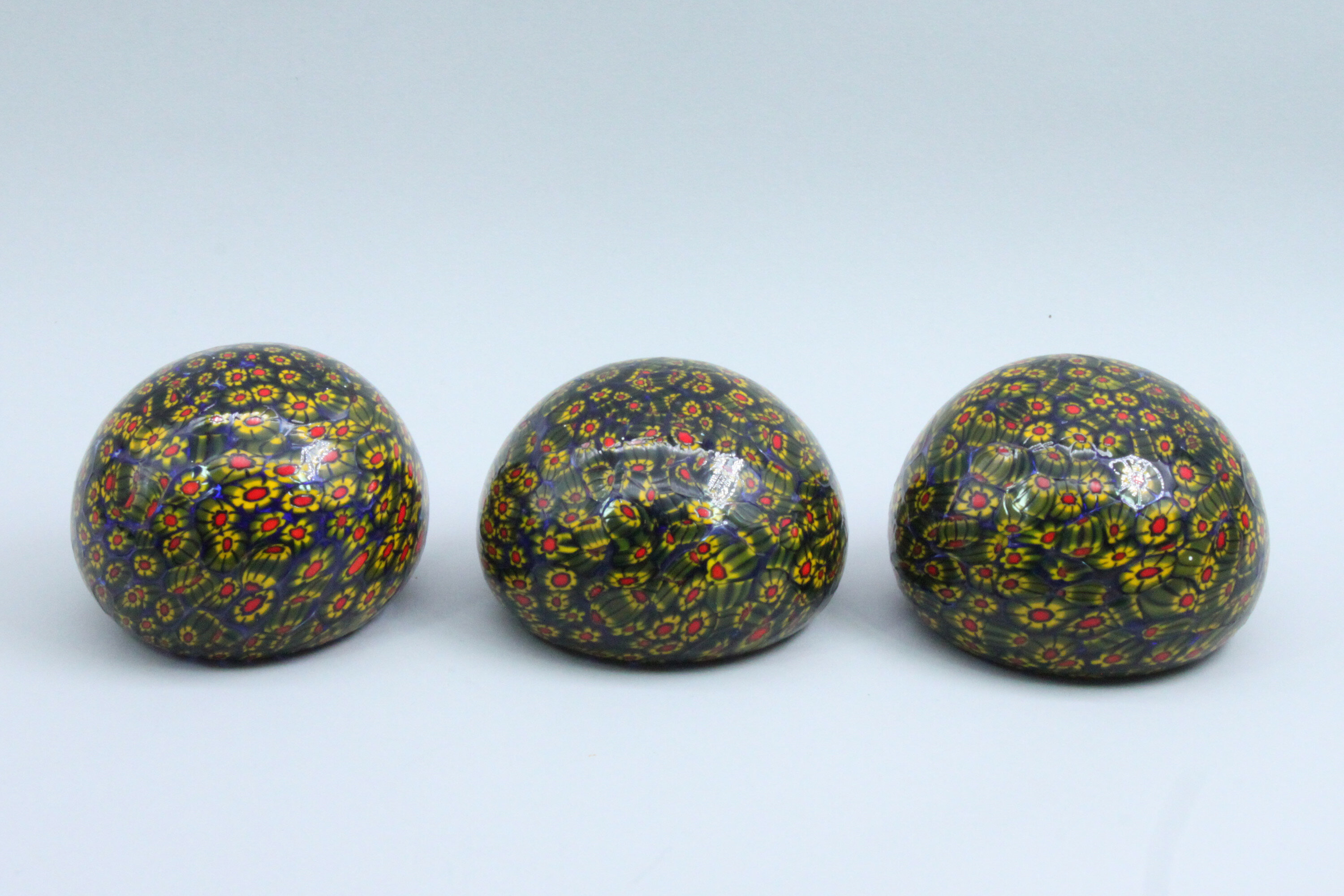
A set of three Millefiori Glass Paperweights, possibly Italian Murano, late C20th
Price: £75This set is sold with matching contemporary illuminated stands which enhance the decorative effect considerably and provide a modest light display installation for the home (see illustrations 5 and 6).
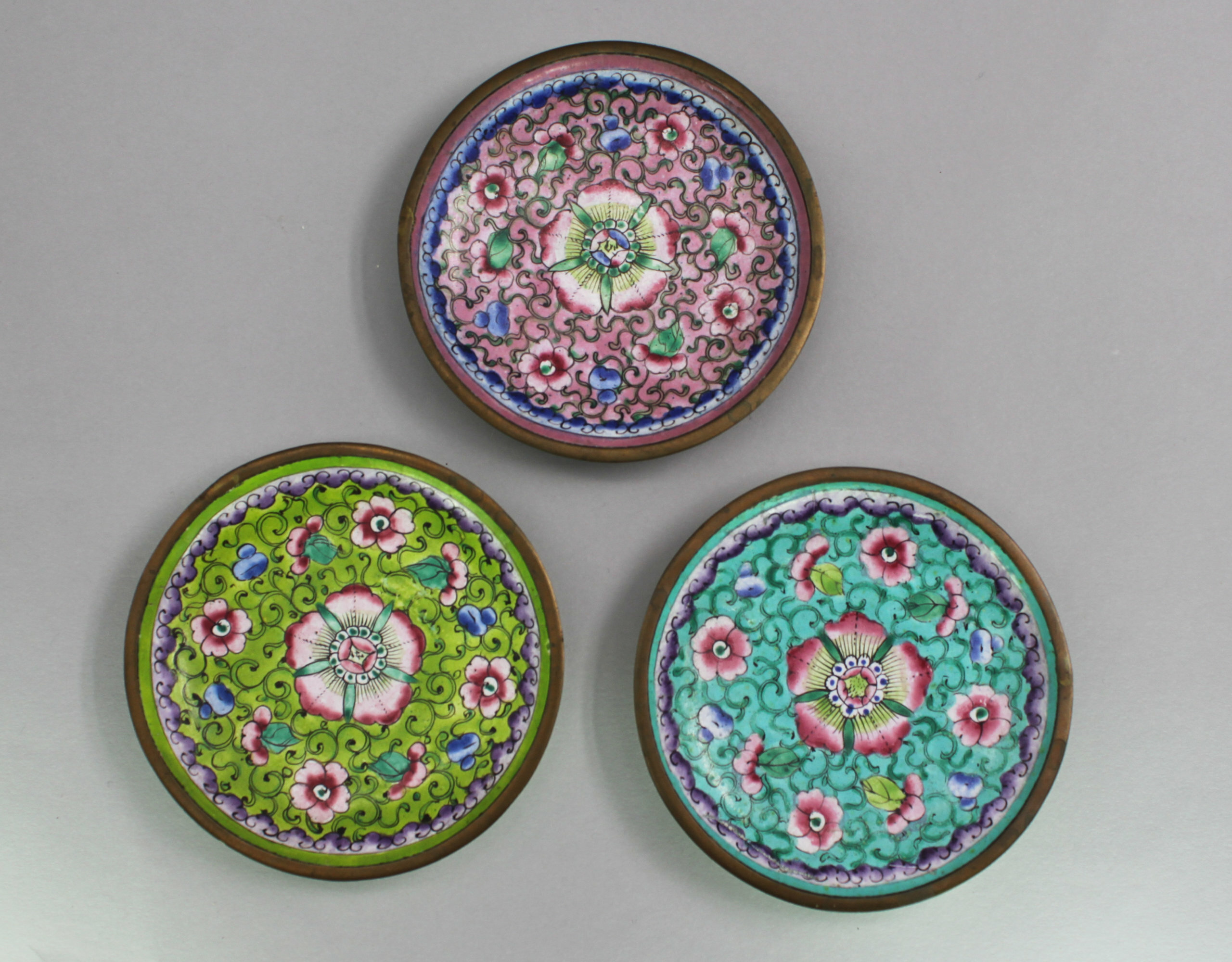
Three Chinese Canton Enamel Dishes, Nineteenth Century
Price: £45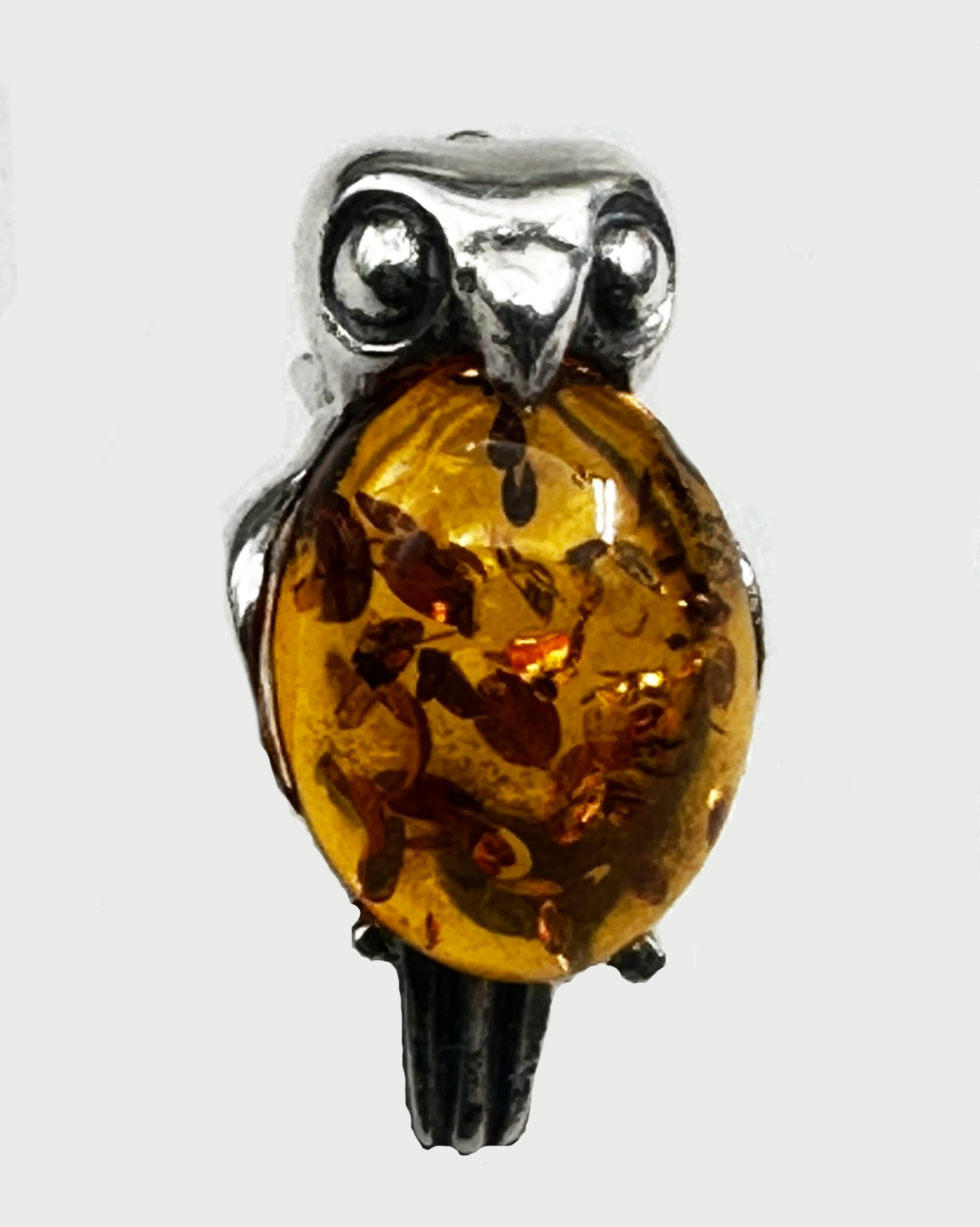
Charming small amber pendant brooch set as an owl c2000
Price: £15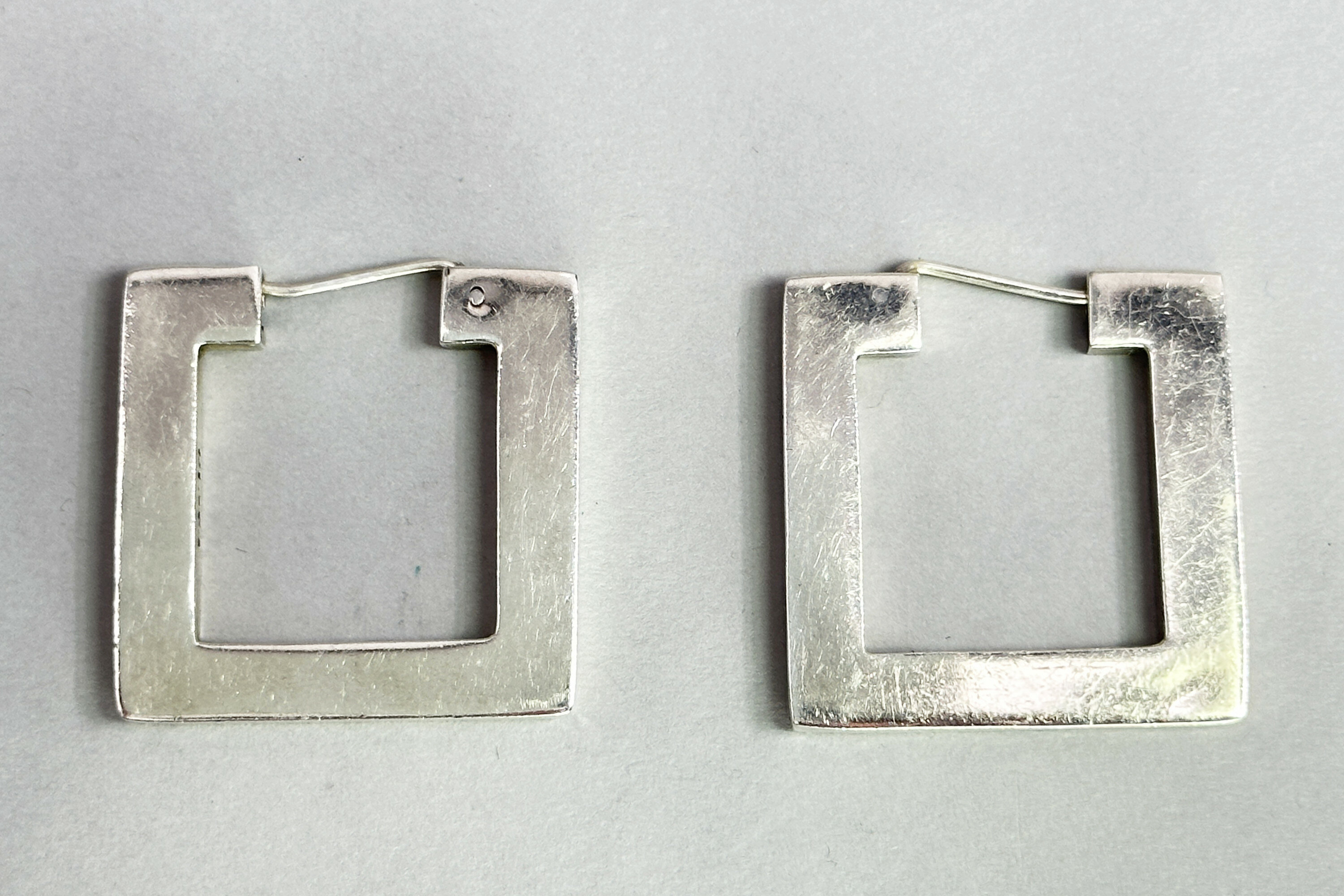
Pair of Modernist Taxco earrings, c1980
Price: £45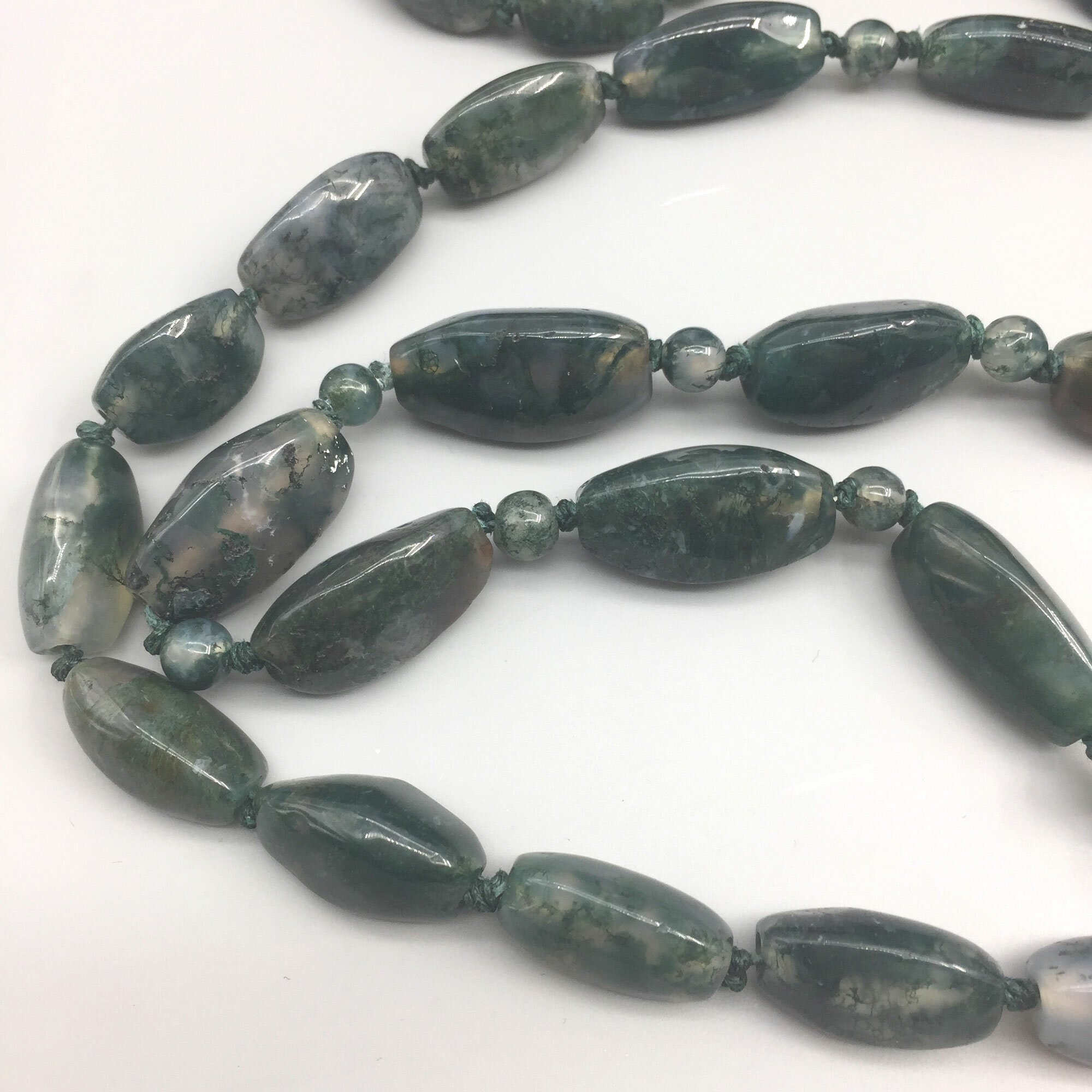
Opera length strand of beautiful moss agate beads 1960s
Price: £65
African Carved Wood Figure of a Lady, probably mid C20th
Price: £25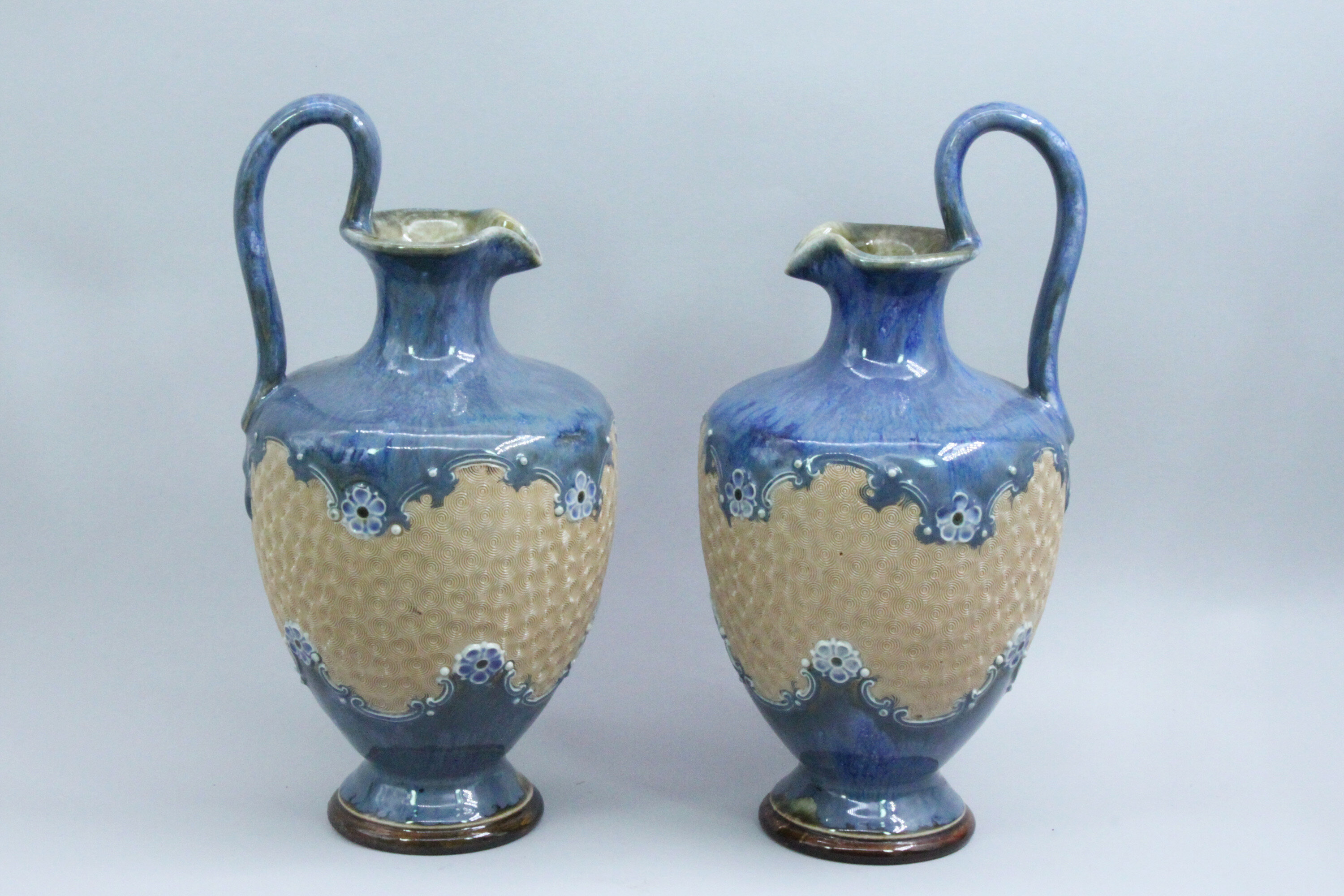
A Pair of Royal Doulton Ewers, marked, early C20th
Price: £150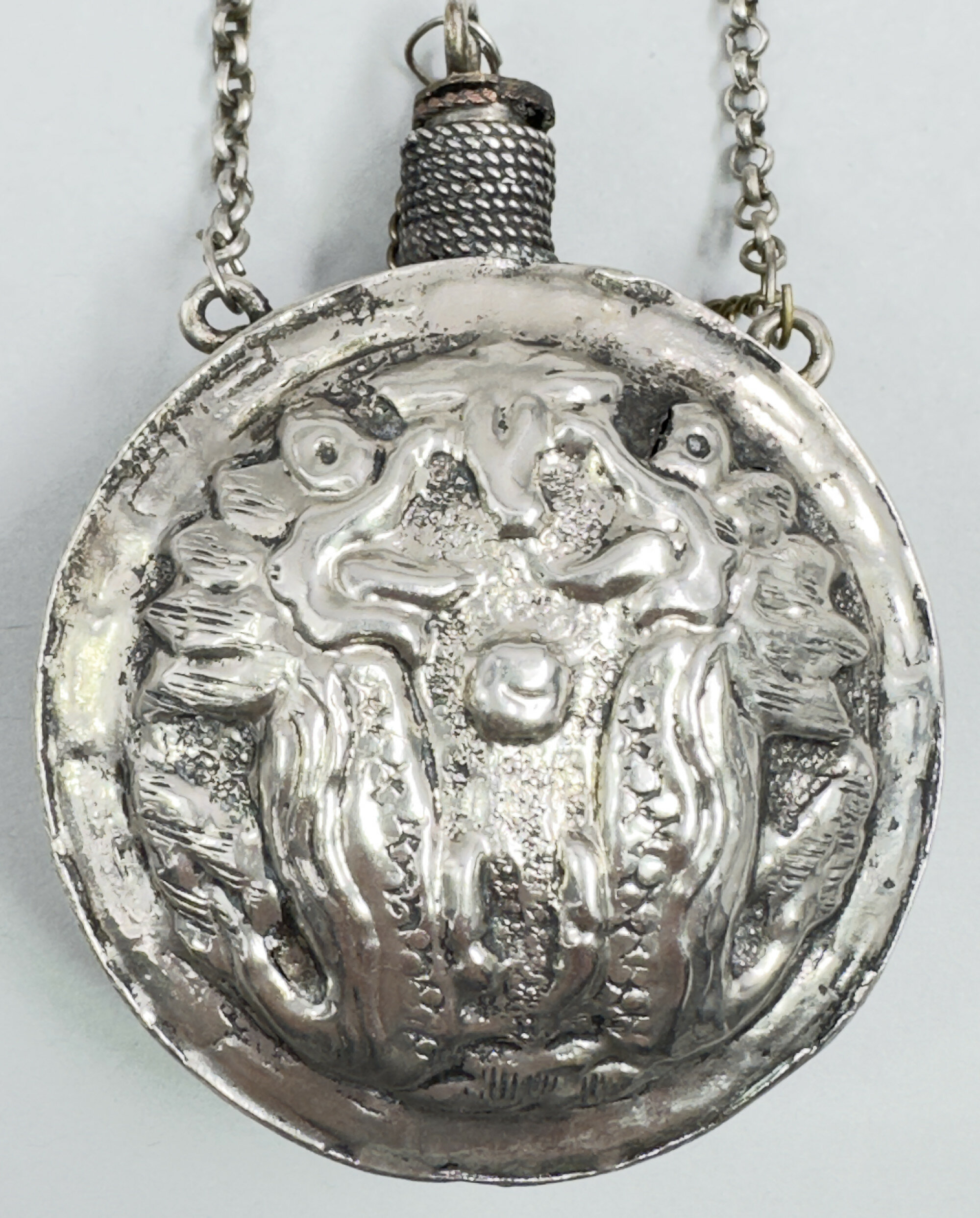
Silver plate Perfume Bottle with attached Stopper and Chain, Burmese late C19th
Price: £45
A green glass paperweight, Tweedsmuir Glass, Chris Dodds, late C20th
Price: £25It is sold with a matching contemporary illuminated stand which enhance the decorative effect considerably and provides a modest light display installation for the home (see image 6).
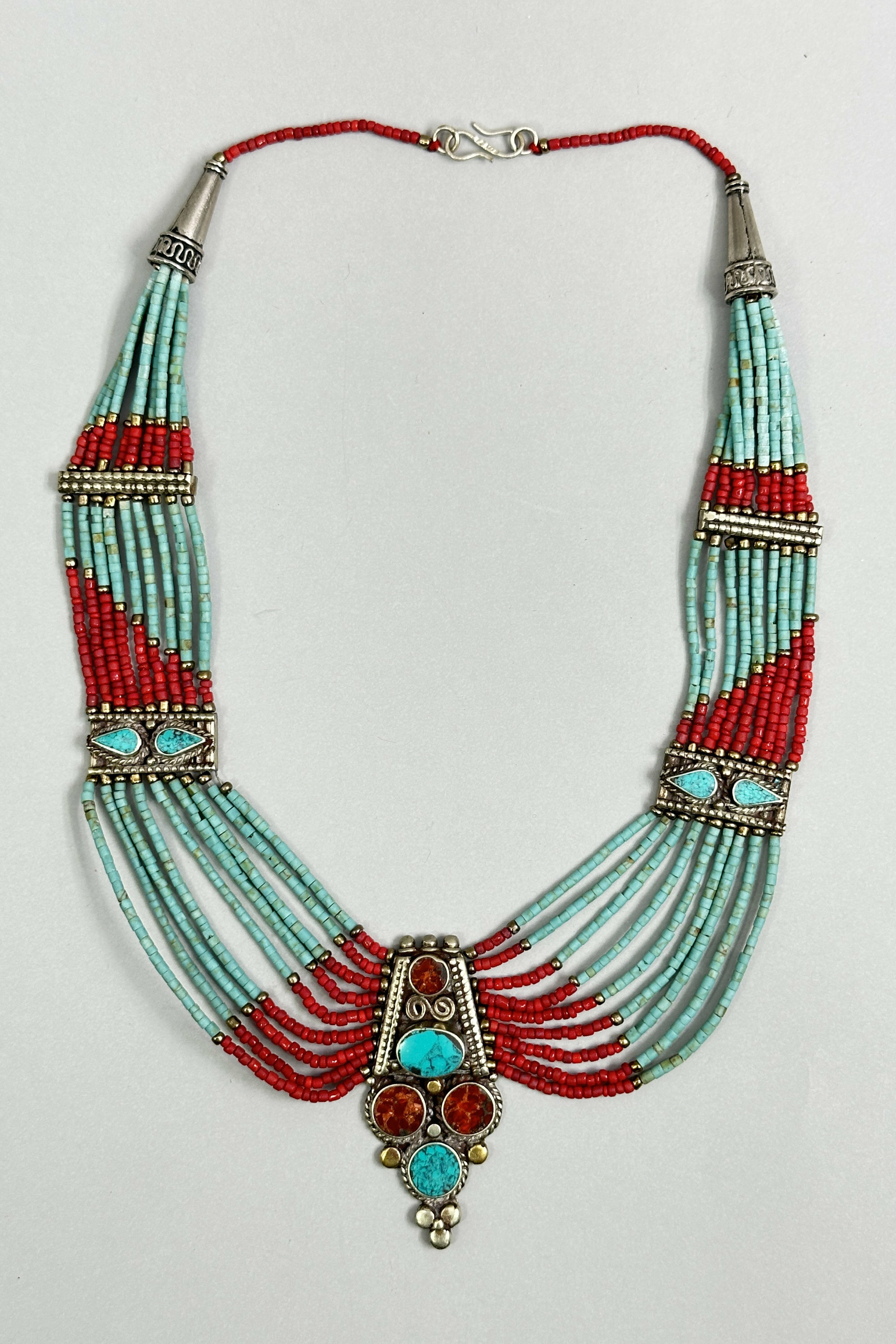
Very fine Berber North African necklace c1950
Price: £45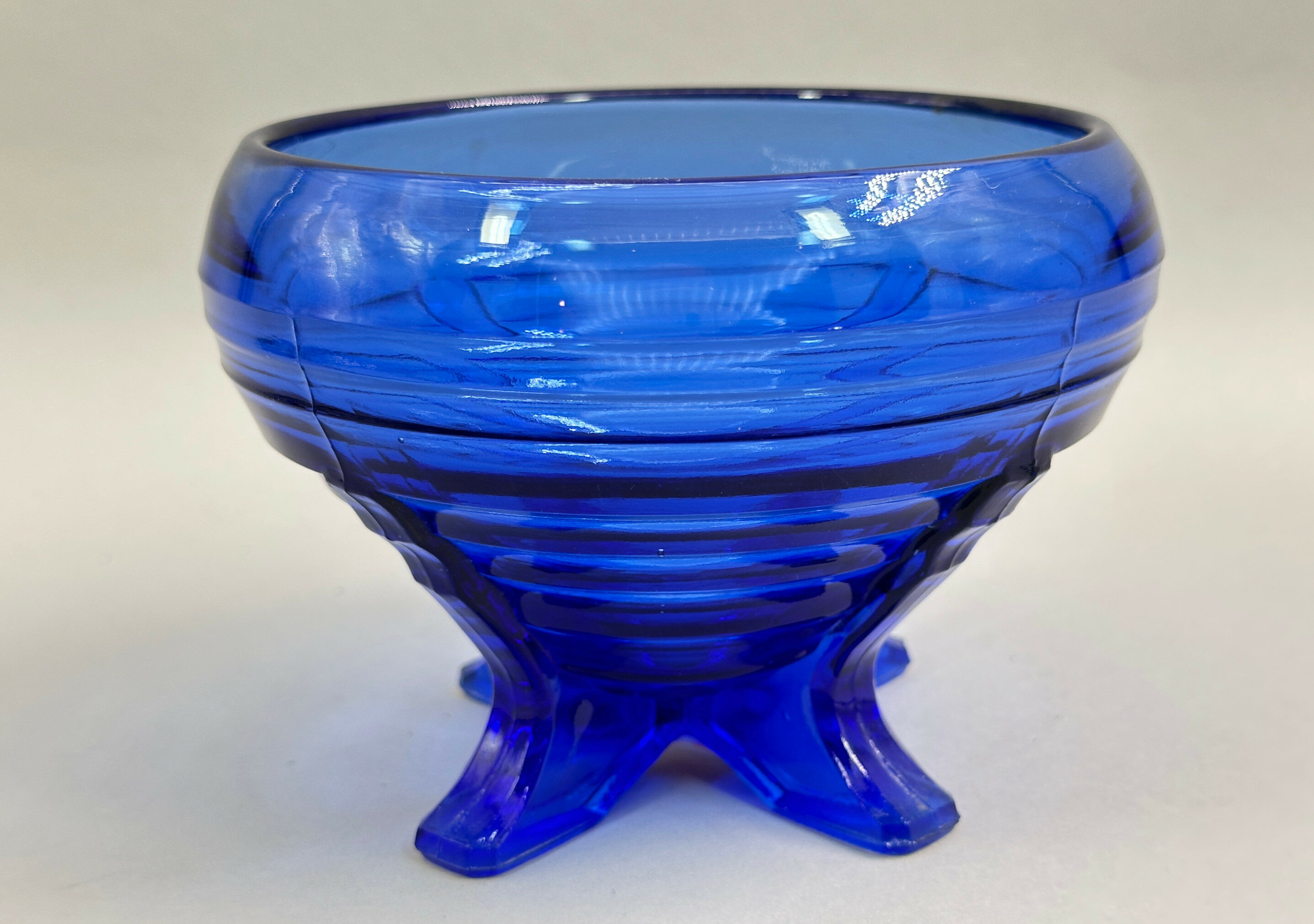
Sowerby Blue Glass Footed Bowl, 1930s/1940s
Price: £25The Sowerby family came from the North West of England near Carlisle and settled in Gateshead in the late eighteenth century. The firm Sowerby Glassworks is known from 1807 onwards and continued production until 1972, concentrating on pressed glass. Catalogues of their wares still exist and they produced pieces in a wide variety of styles and shapes which retain their popularity today.
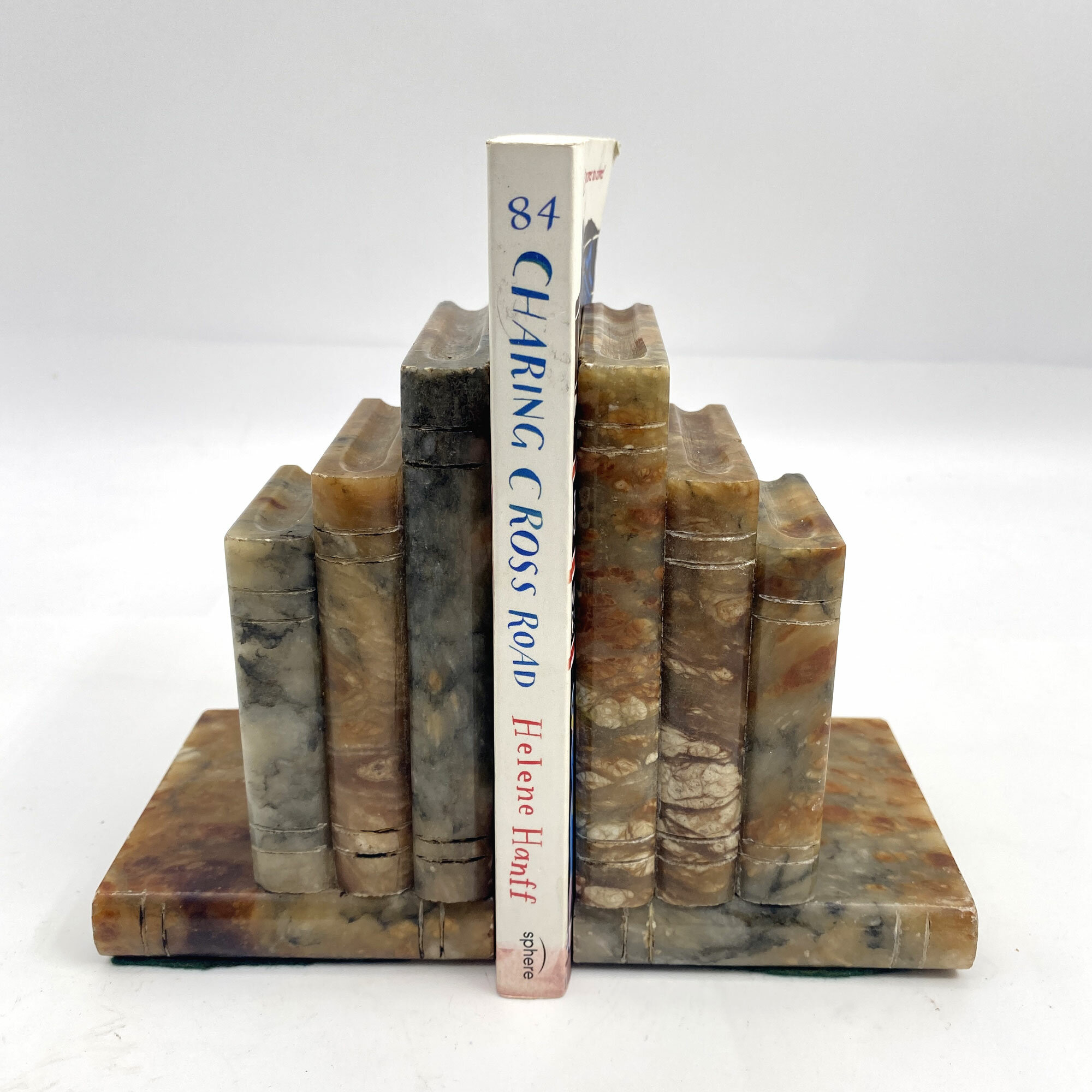
Pair of Italian Art Deco style alabaster Bookends in the shape of books, first half C20th
Price: £75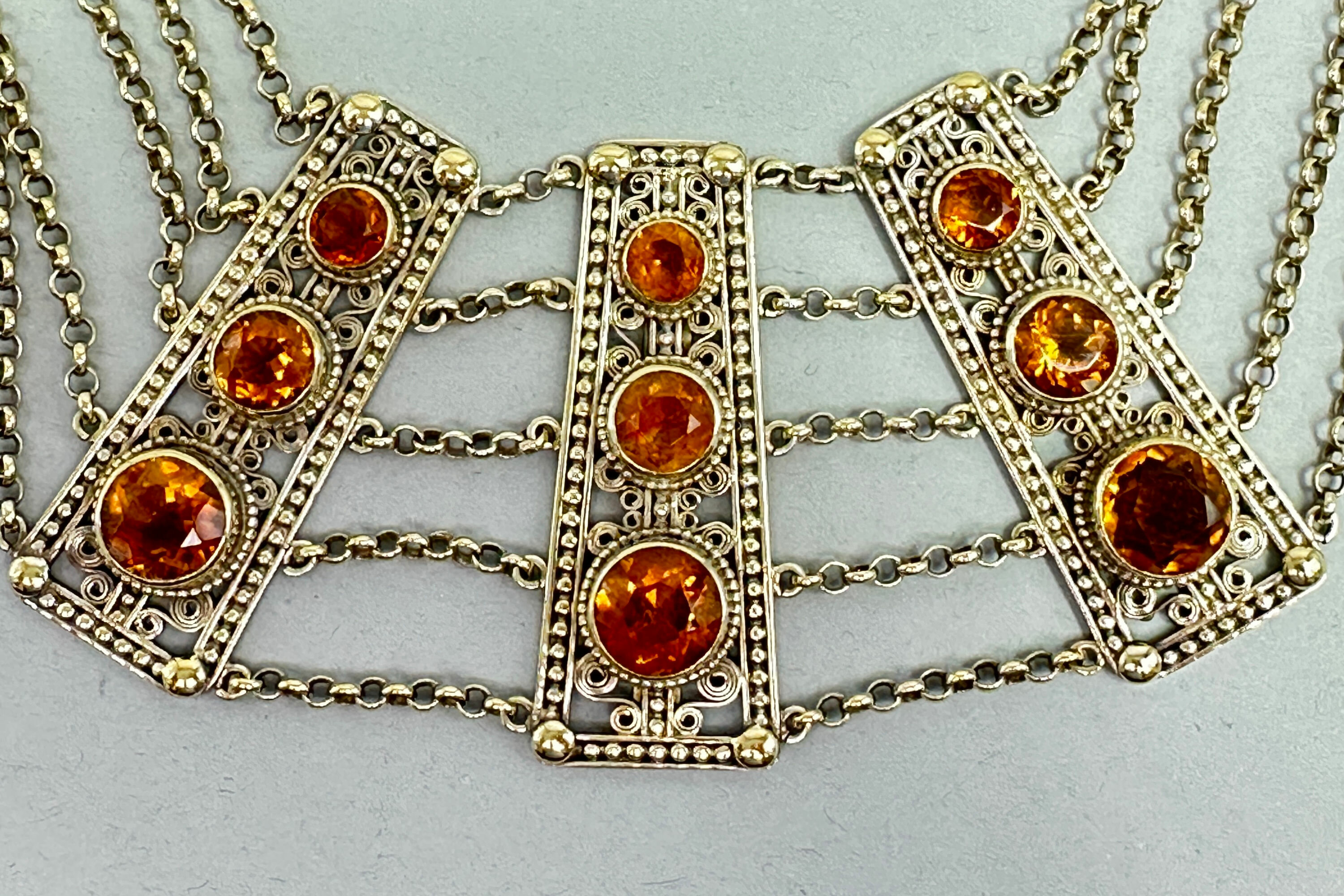
Edwardian Egyptian Revival necklace, inscribed and dated 1910
Price: £250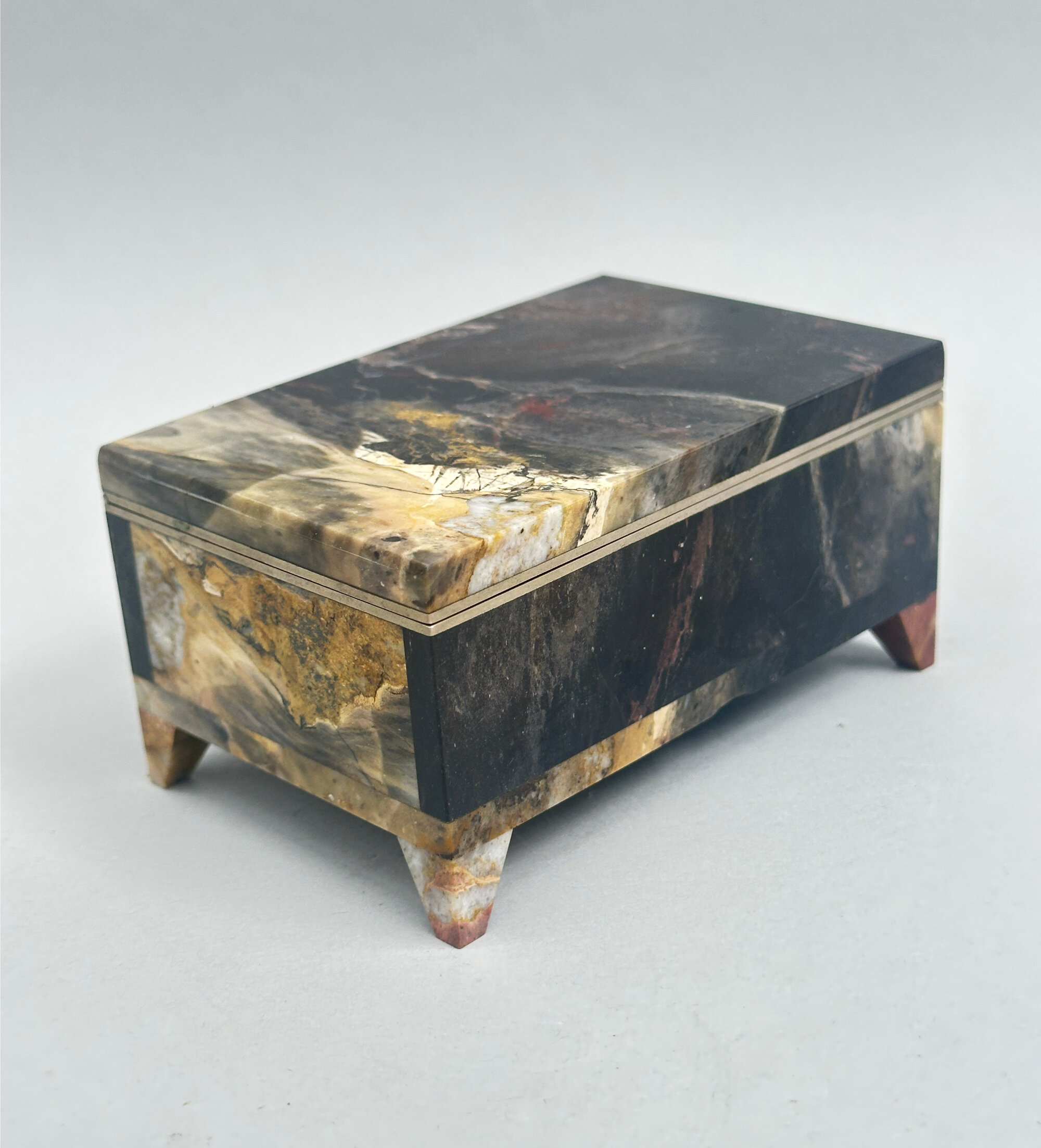
Rectangular Box and Cover, Basanite Jasper, C20th
Price: £95
Art Deco paste bracelet by Schreiber & Hiller c1930
Price: £75
Three Indian Brass hanging plates, Thanjavur, C20th
Price: £55The style of decoration here is typical of the art brass hanging plaques produced by the metalworkers of Thanjavur, formerly known as Tanjore, from the late eighteenth century onwards. A Tanjore Art Plate consists of three components: the base plate (brass), a circular central relief panel of a deity worked in silver surrounded by relief panels in copper and silver often depicting flowers. Various deities are depicted here including the well known many armed Shiva. All the reliefs have milled borders but the wells are finished differently, some with engraved designs and one with circular bosses. Dating is probably to the mid C20th but the style of these pieces was continuous and relatively unchanging so an earlier period of manufacture is quite possible.
NB Stands for display purposes only and not included
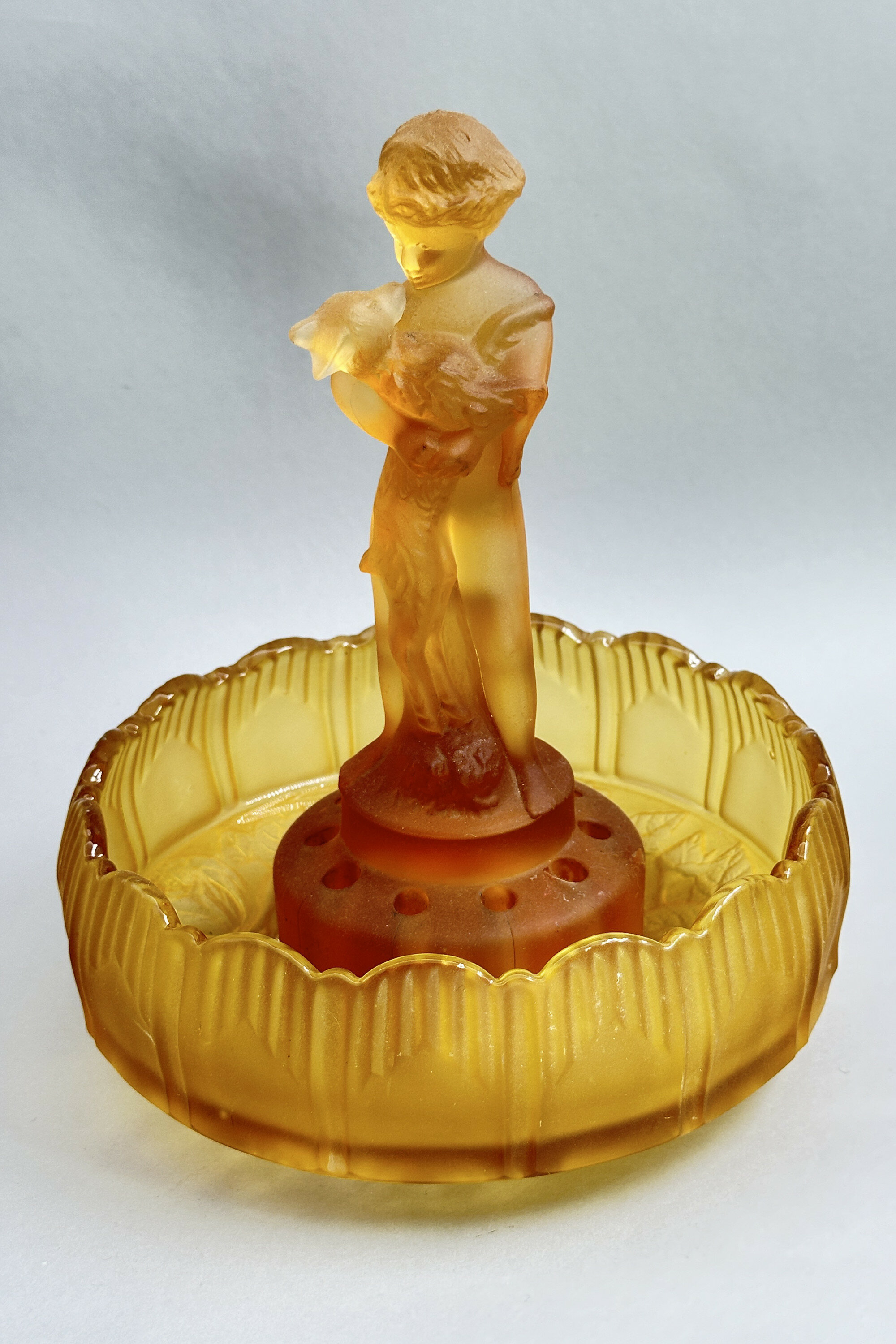
Sowerby Amber Glass Centrepiece circa 1930
Price: £75The Sowerby family came from the North West of England near Carlisle and settled in Gateshead in the late eighteenth century. The firm Sowerby Glassworks is known from 1807 onwards and continued production until 1972, concentrating on pressed glass. Catalogues of their wares still exist and they produced pieces in a wide variety of styles and shapes which retain their popularity today.
The centrpiece figurine, which was intended as a flower holder or ‘frog’, is rather unusual; normally the figures are female but the style of the modelling is identical. Similar designs to the bowl can be found in a 1936 catalogue but versions of it even appear in another catalogue from 1882. Many centrepiece/bowl combinations are found and some of them are not always original. This may possibly be the case here but if so the ‘match’ is extremely pleasing to the eye and the two elements set one another off perfectly to produce a striking example of Art Deco decorative design.
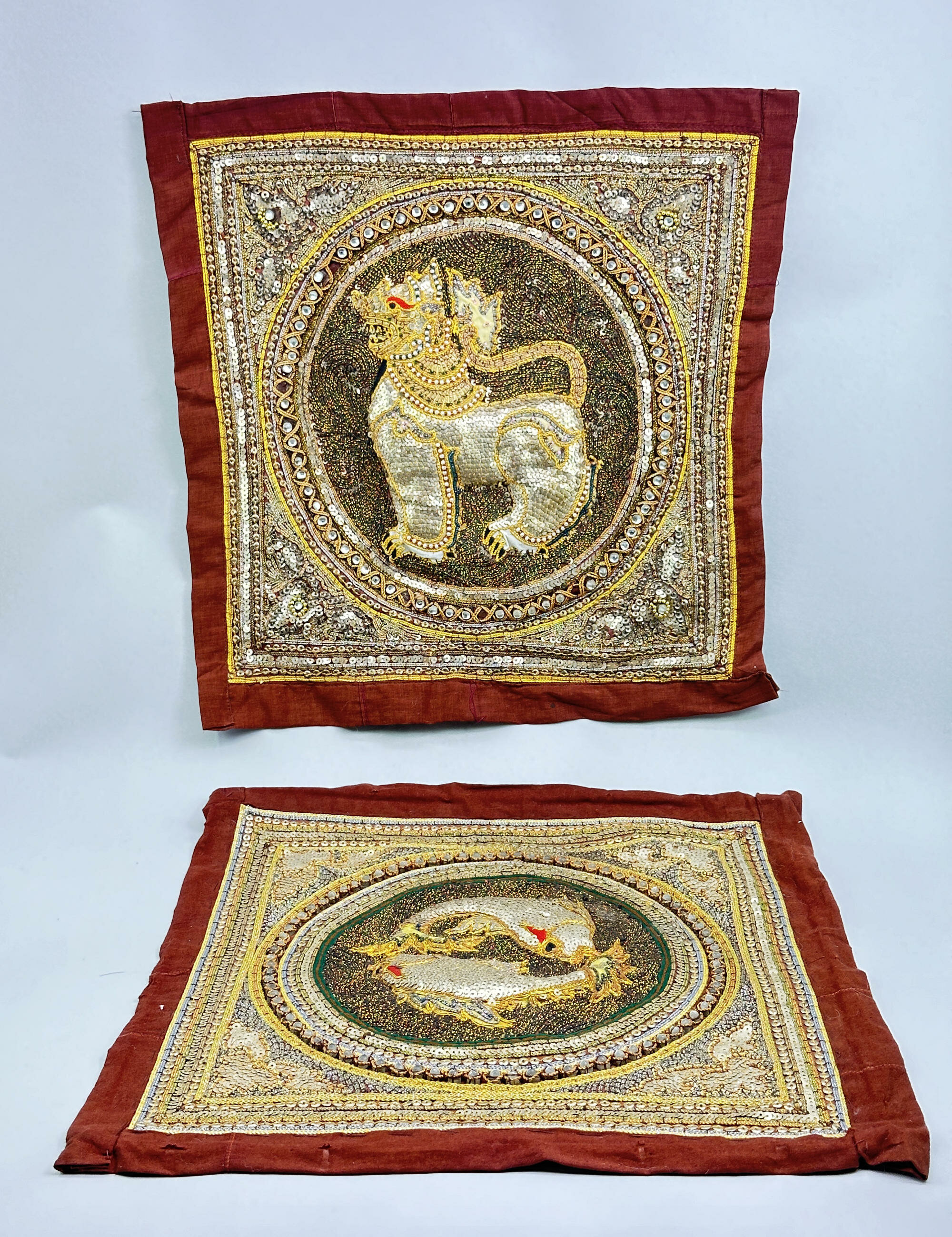
Two Burmese Textiles, mid C20th
Price: £55The distinctive style of embroidery and applied work here is typical of Burmese work known as ‘Kalaga’ which means ‘curtain’ in Burmese and is used to refer to heavily embroidered appliqué tapestry sewn with a technique called ‘shwe gyi do’. First produced around 150 years ago, Kalagas are generally linen, silk, cotton or velvet background fabrics embellished with sequins, embroidery, beads, coloured stones, tiny pearls, coral, braids and metal threads, the choice of materials depending in part on the client’s budget. Cotton padding was used to produce the ‘3D’ effect seen here and on many other examples of the work. The elaborate decoration meant that some of the larger pieces could take many months to produce. These two panels are an excellent example of the genre with the lavish use of gold thread. They have survived in excellent condition and can decorate an interior today in the same way that they graced the interiors of the makers’ contemporaries. Dating is difficult and a mid C20th attribution is probably sensible but an earlier period of manufacture is quite possible.
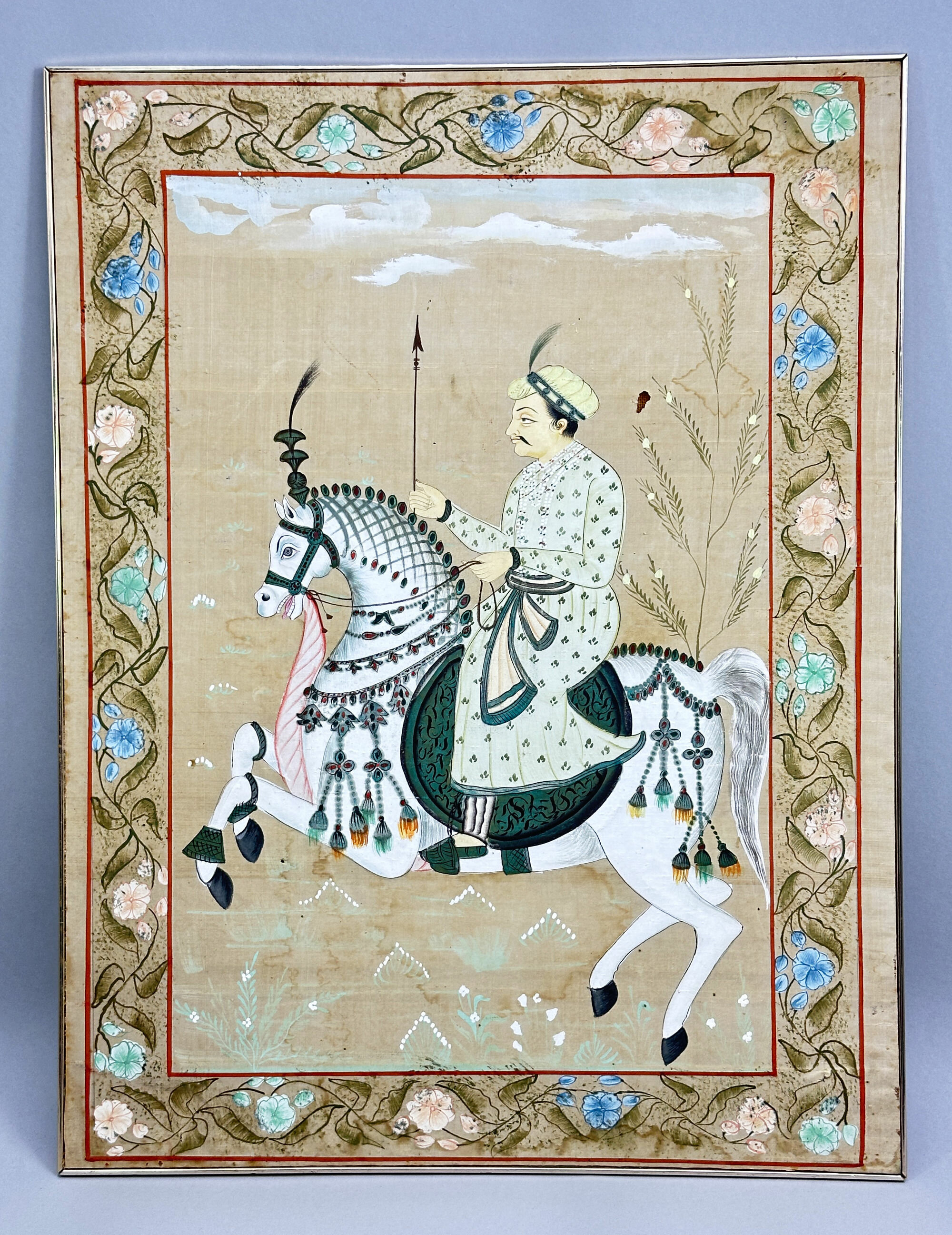
Persian Gouache painting on silk of a horseman, C 19th
Price: £25The style of painting here and the use of silk as the medium are typical of Persian work, and the detail of the brushwork, notably the man’s hair and the horse’s head suggest nineteenth rather than twentieth century workmanship and while a little age worn, this is a striking example of the genre.
Please note that the silk is glued to the hardboard backing at the reverse (see image 10); the simple gilt frame is just fitted to the edge and the piece is not glazed.
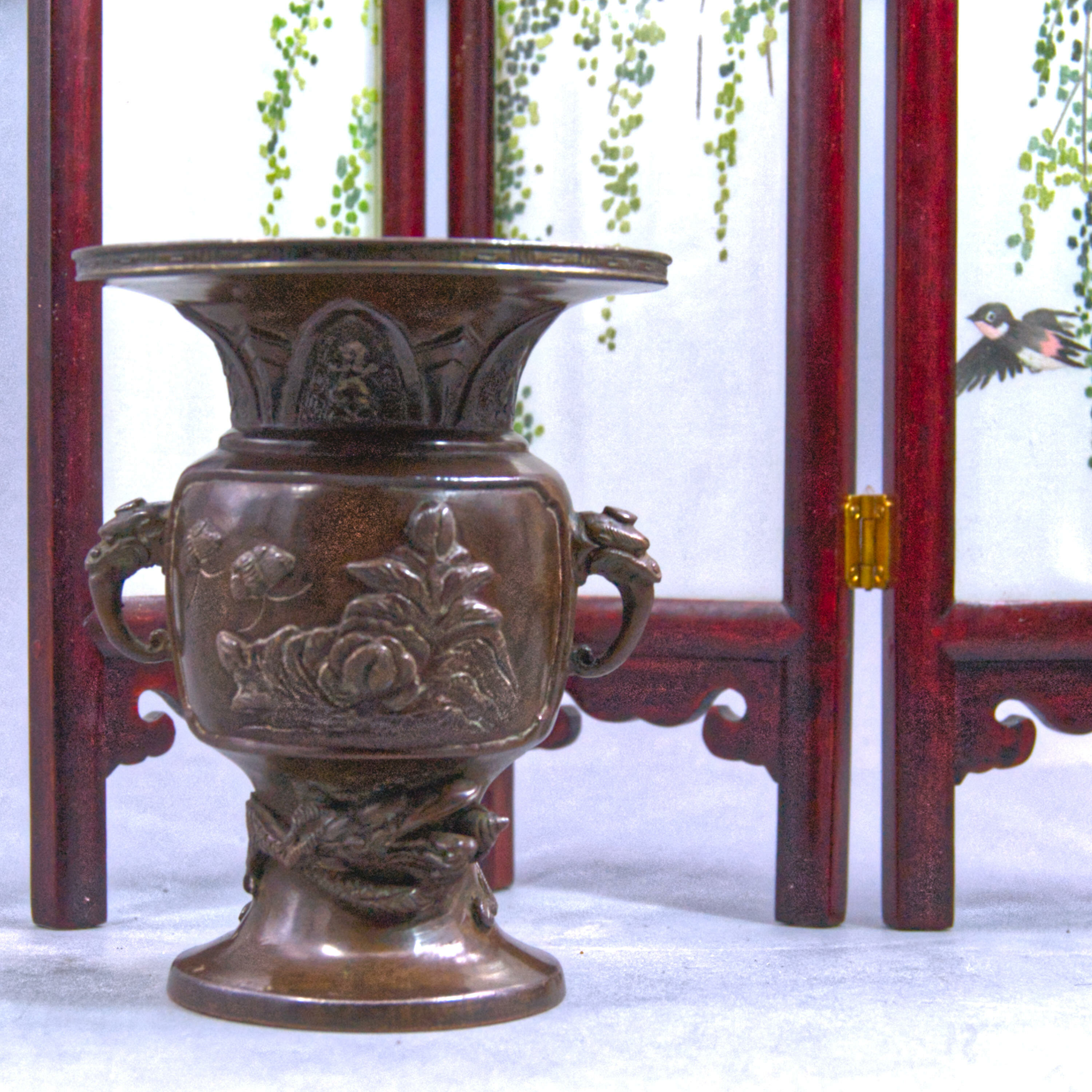
Small Chinese Bronze Vase of Ku Form with Elephant Head Handles, Qing Dynasty circa 1800
Price: £75
Unusual Chinese Bowl decorated in the Japanese Kutani Style, early 20th Century
Price: £45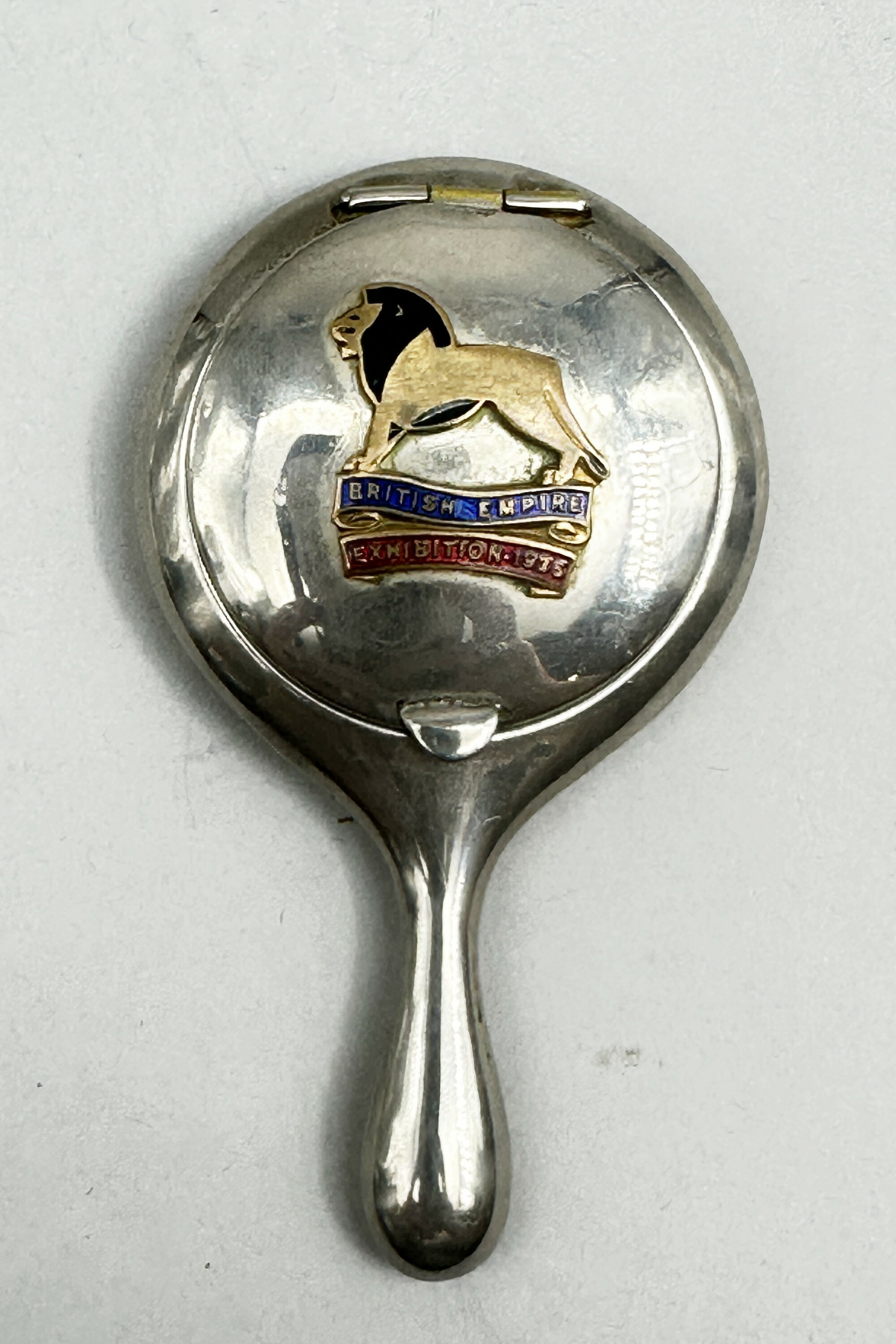
Powder Compact, British Empire Exhibition (1924-1925), dated 1925
Price: £45Souvenirs and medals were produced, amongst which were silver plated powder compacts as here. The round container for the powder has a hinged lid revealing the powder well below, originally fitted with a mauve ribbon tasseled powder puff, and a mirror above. On the surface of the lid, which has a tab for lifting, is a stylised brass lion, a symbol of the British Empire, vitreous enameled in black, red and blue with the wording ‘British Empire Exhibition 1925 ’ There is a short rounded handle and the back has an engraved mark ‘Rd [registered] 689177’ for the patent number. While many were doubtless made (and there is another version with a more slender handle, with a ring at the end, and the background colourings of the lettering reversed) few of these compacts seem to have survived making this a desirable addition to a collection of British memorabilia.

Tigers Eye bracelet with a large central carved dragon bead, certificate for 2012
Price: £15PLEASE NOTE THAT THERE IS FREE UK SHIPPING ON THIS ITEM. For international buyers the shipping cost will be reduced by the UK shipping cost, so don't worry if you are outside the UK, you still receive this benefit!
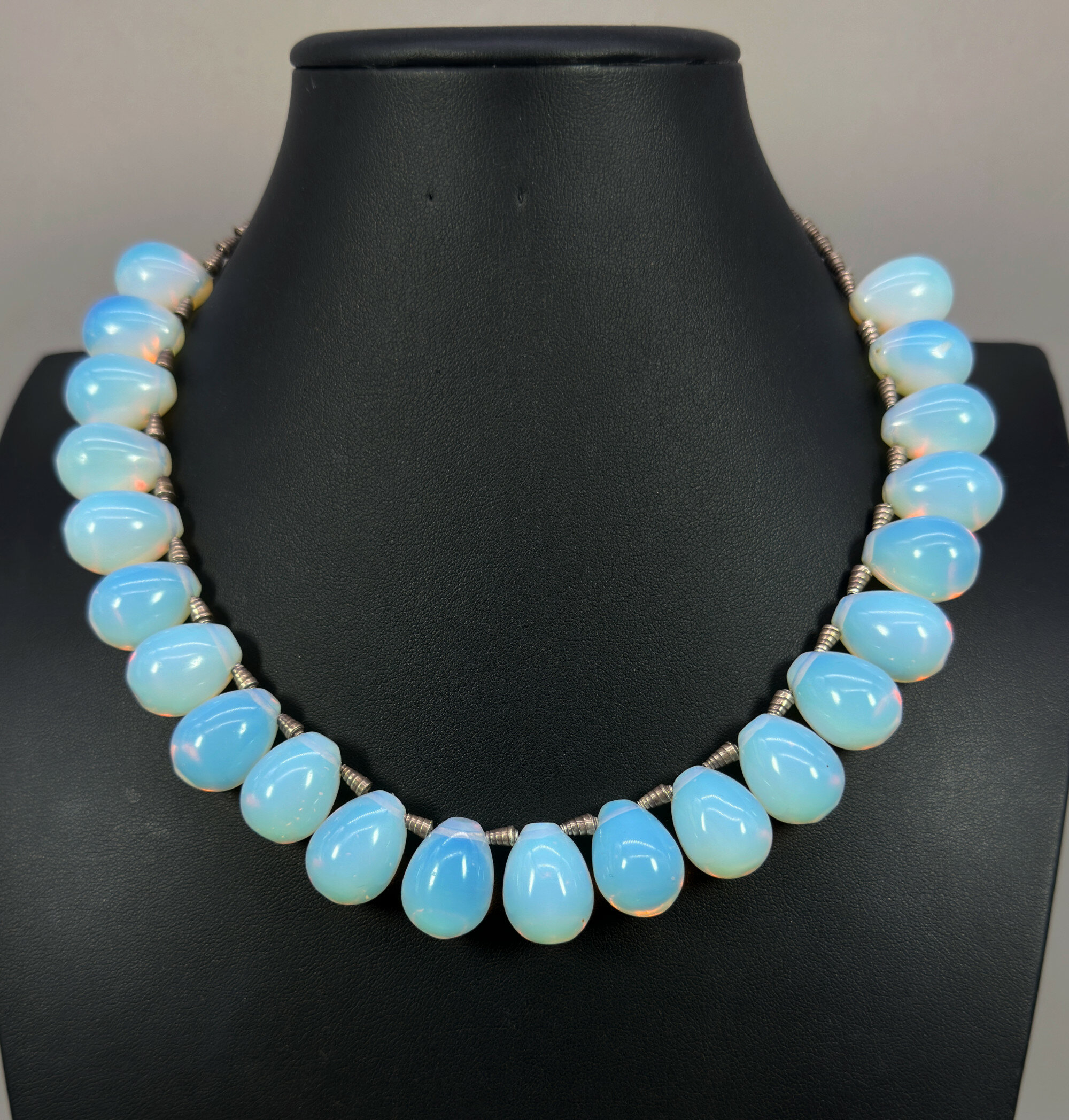
Art Deco opaline glass necklace 1930s
Price: £125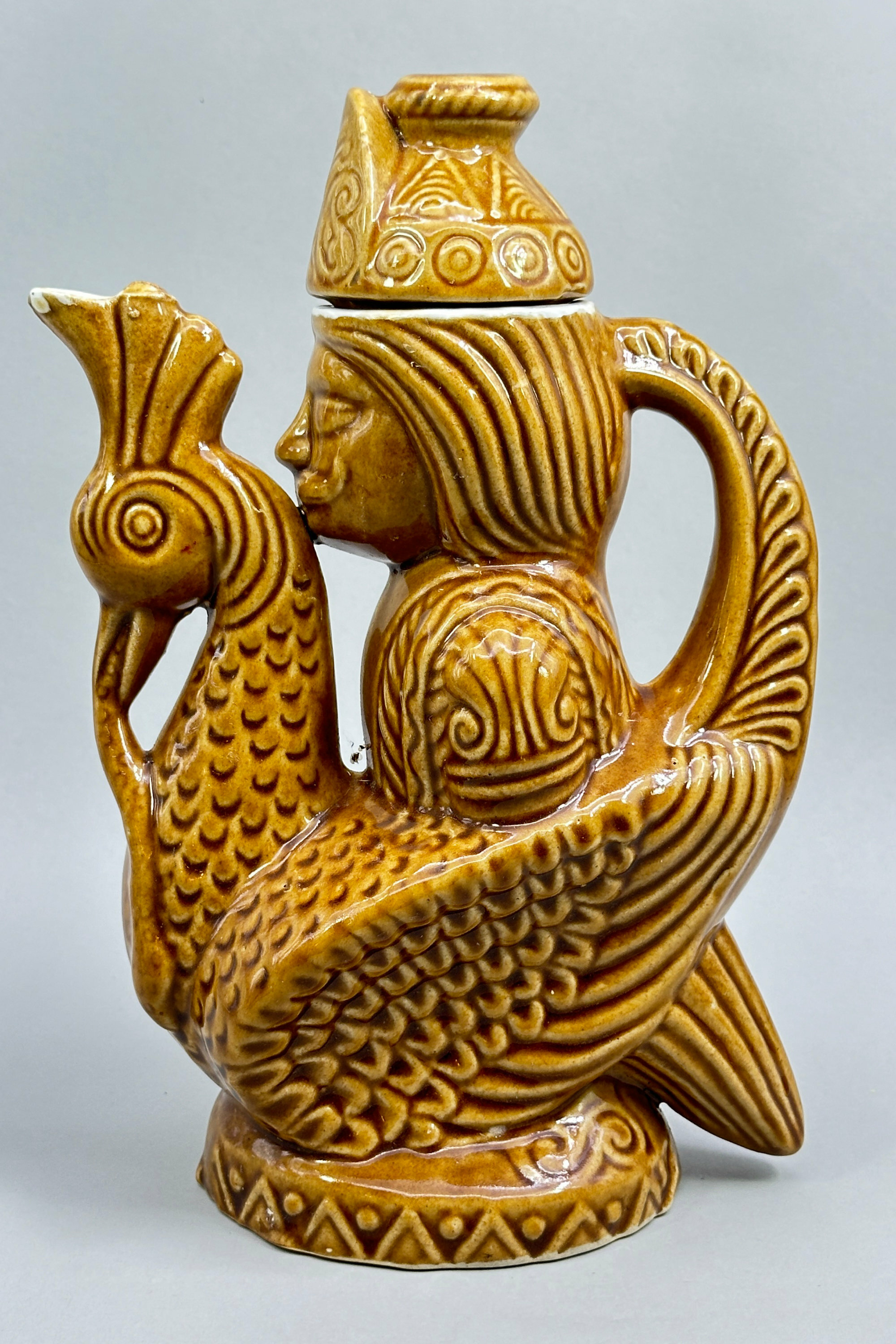
Bird form ewer with cover, possibly Russian c1960
Price: £45
Arts and Crafts Brass and Cobalt Glass Salt and Pepper, early C20th
Price: £55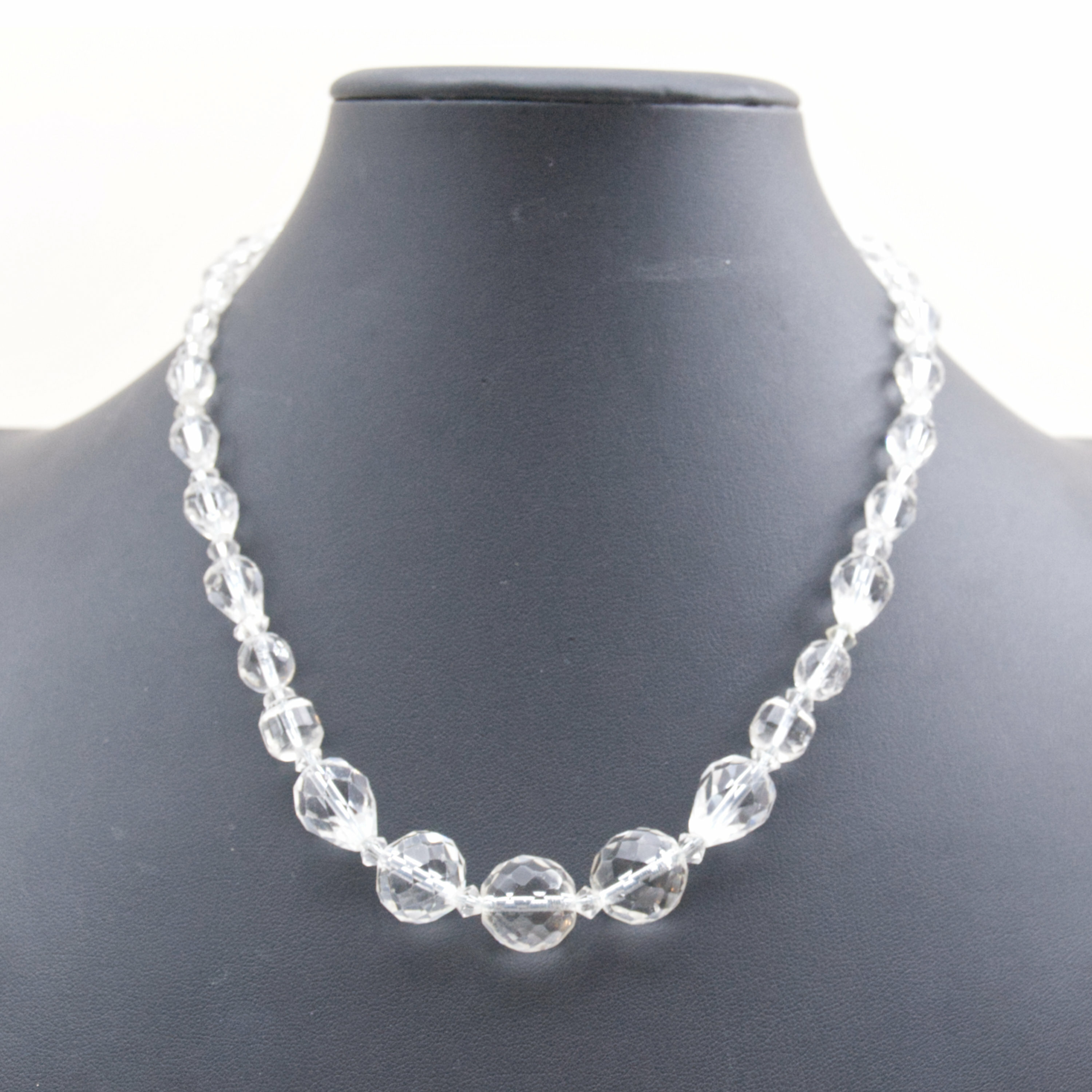
Art Deco rock crystal bead necklace
Price: £25
Victorian leather bound photo album made by Mechi and Bazin c.1870
Price: £110
Beautiful small daguerreotype in a frame c. 1850
Price: £25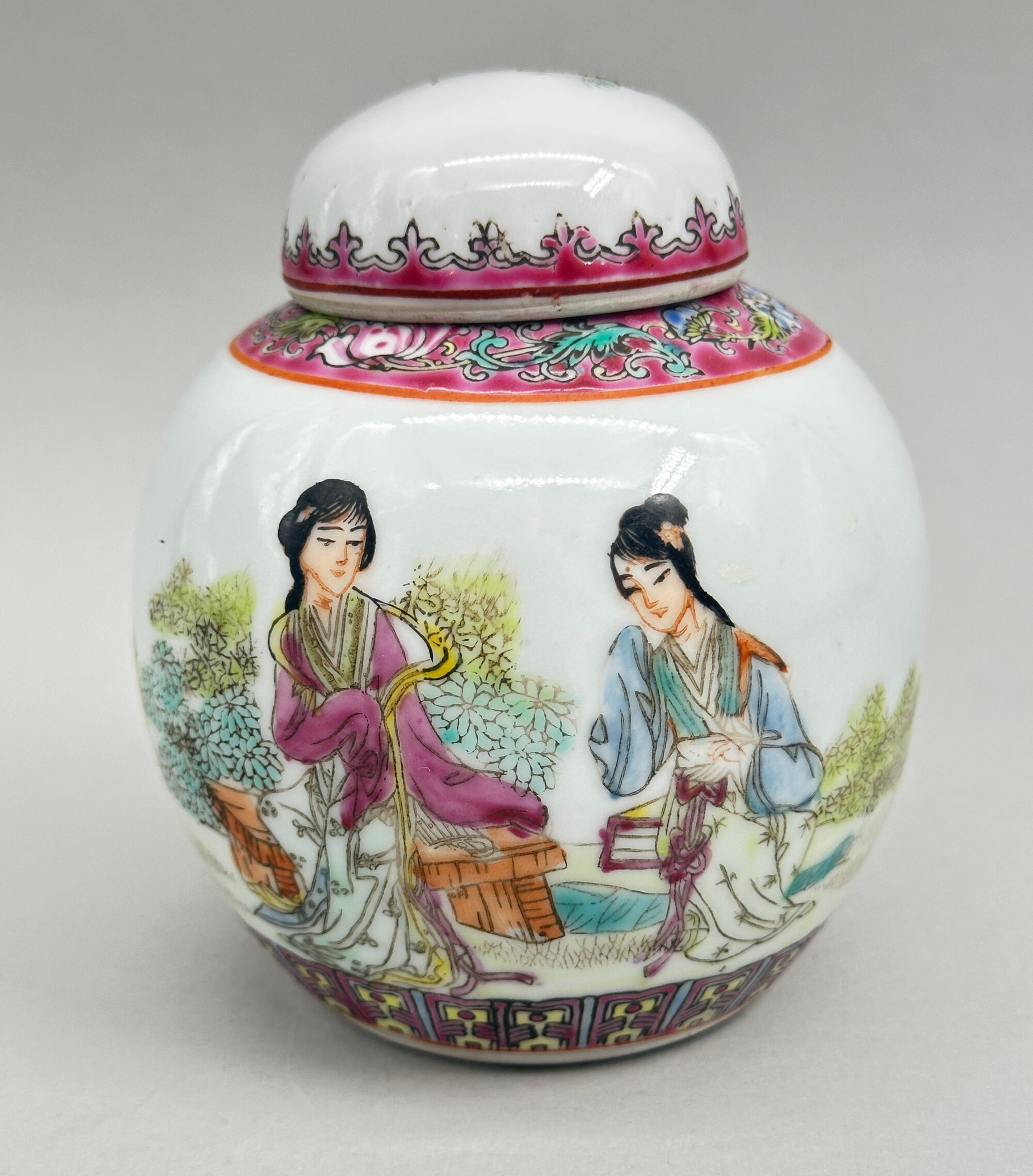
Chinese Republican Style small Famille Rose Ginger Jar and Cover, late c20th
Price: £20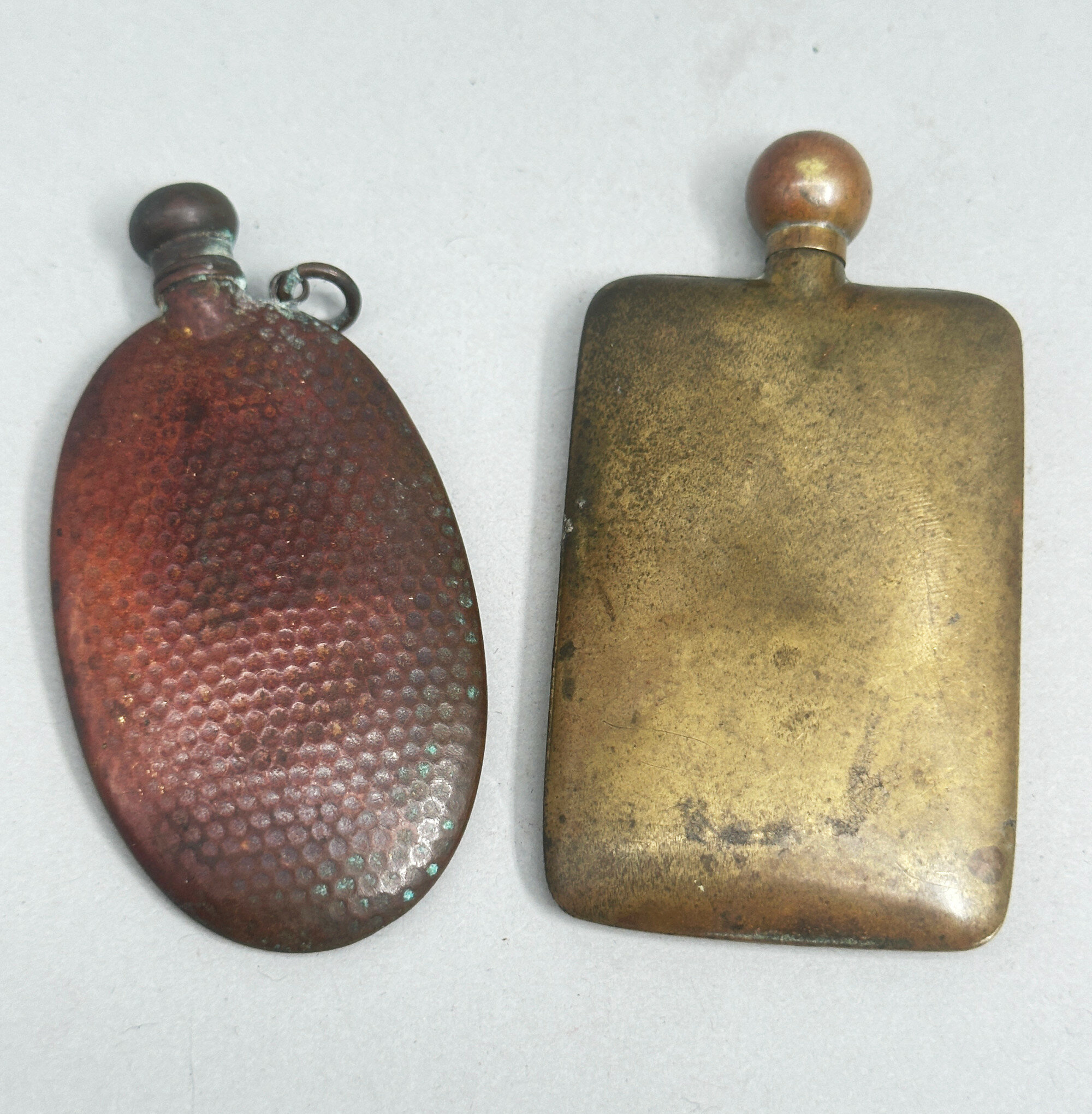
Two small metal perfume Flasks and Stoppers, 1920s
Price: £35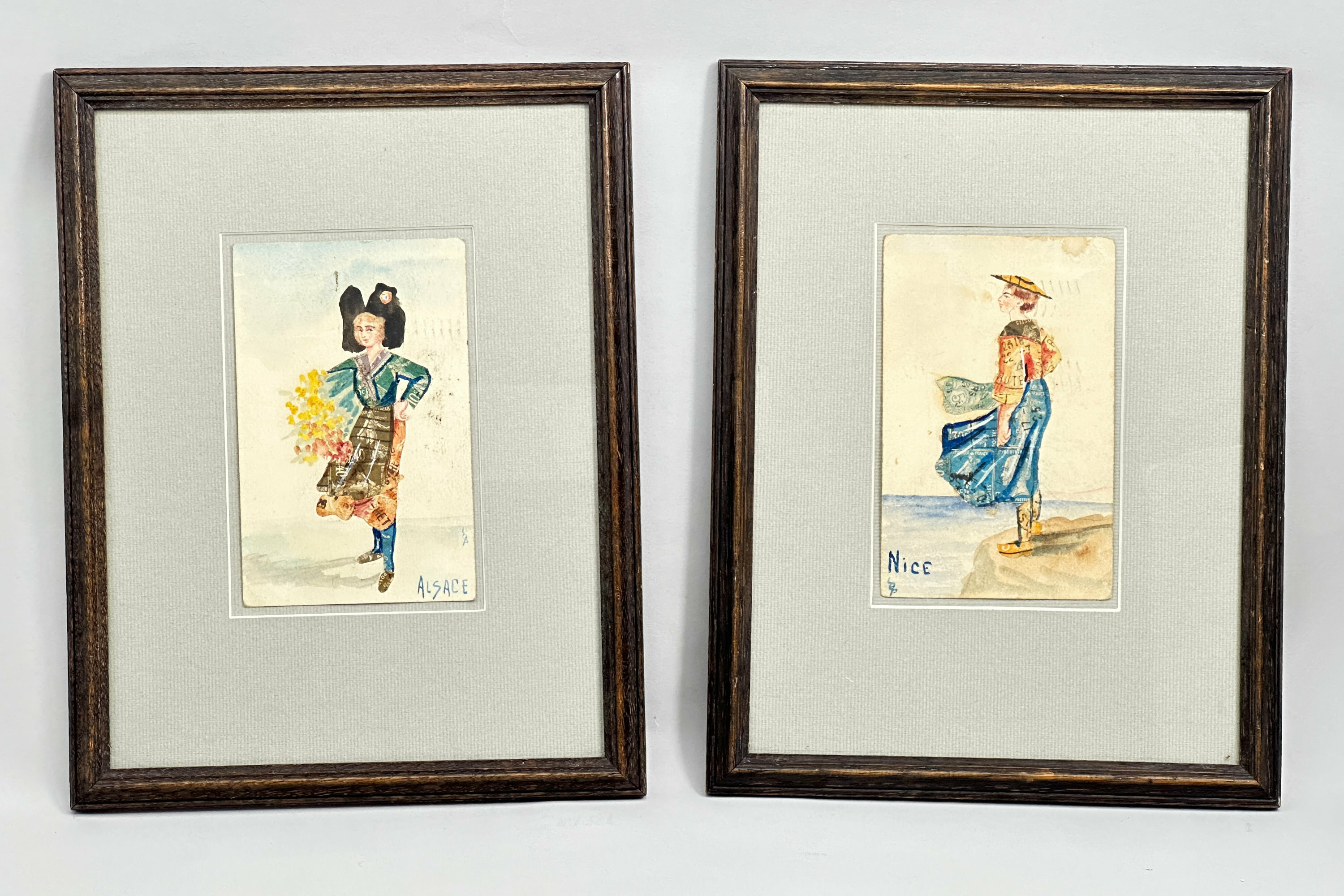
A pair of stamp collage Postcards, Alsace and Nice, framed, early C20th
Price: £45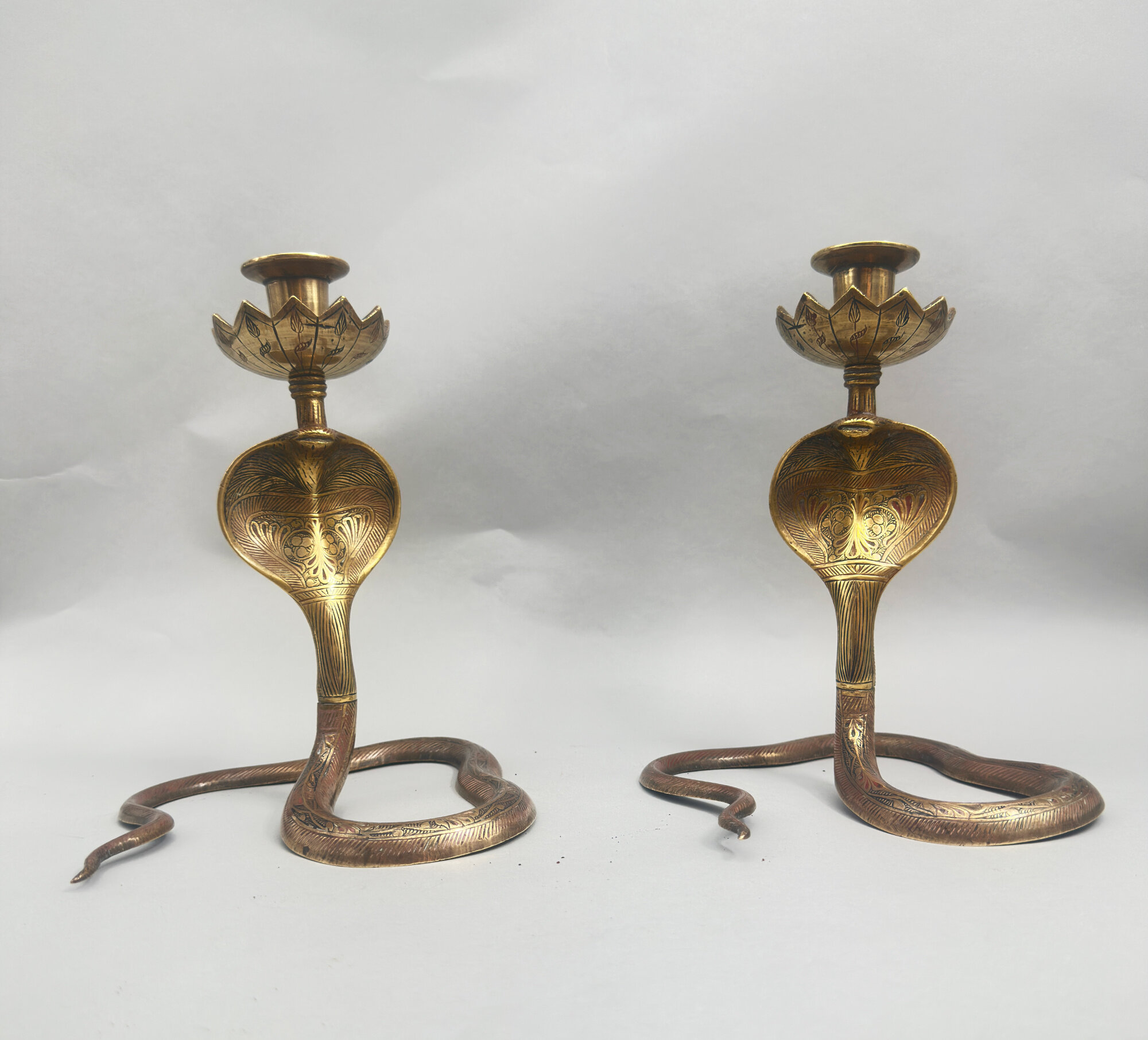
Pair of Indian brass candlesticks c1900
Price: £175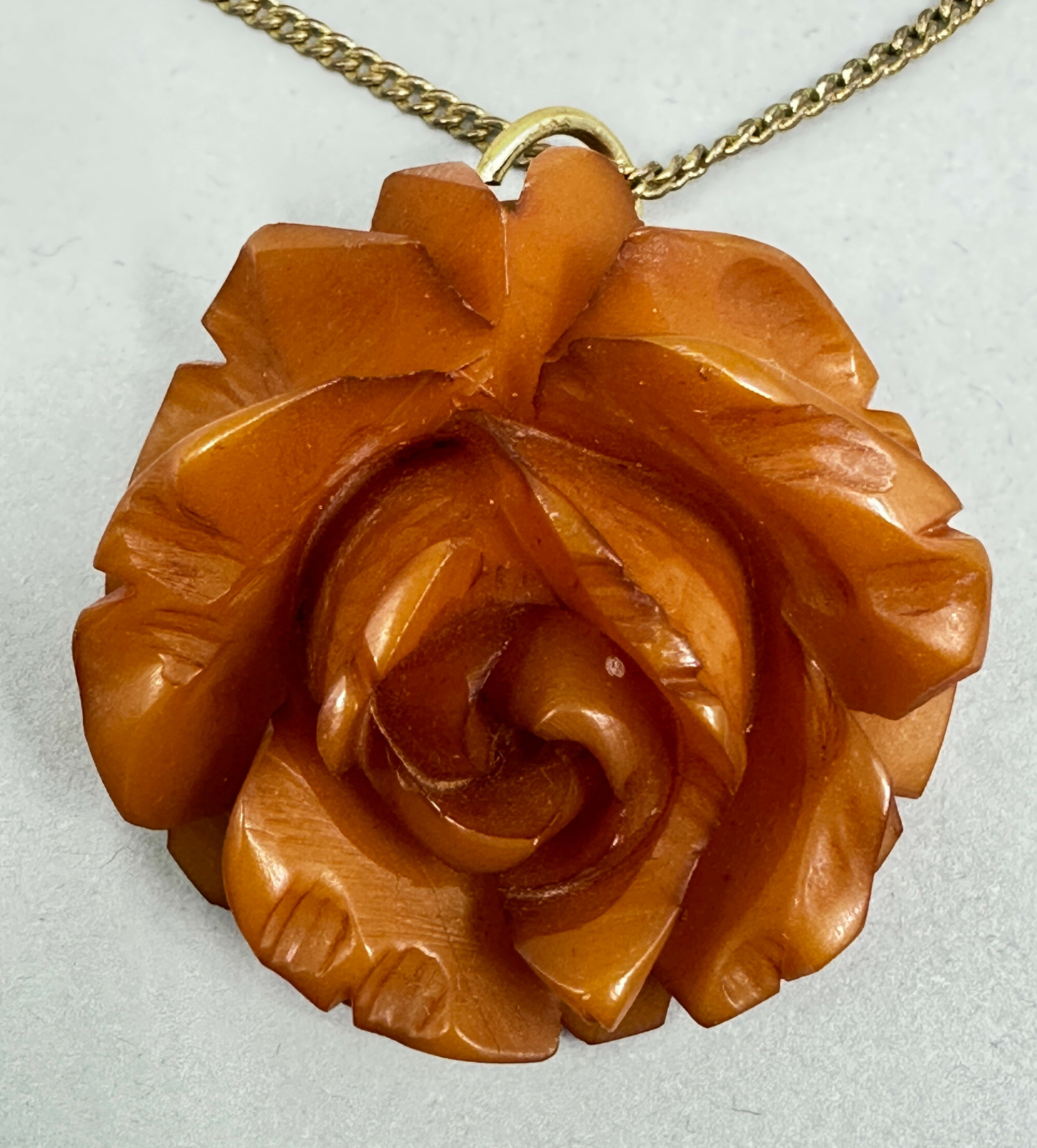
Attractive carved Orange Bakelite Bloom Pendant on modern gold tone chain, British 1930s
Price: £15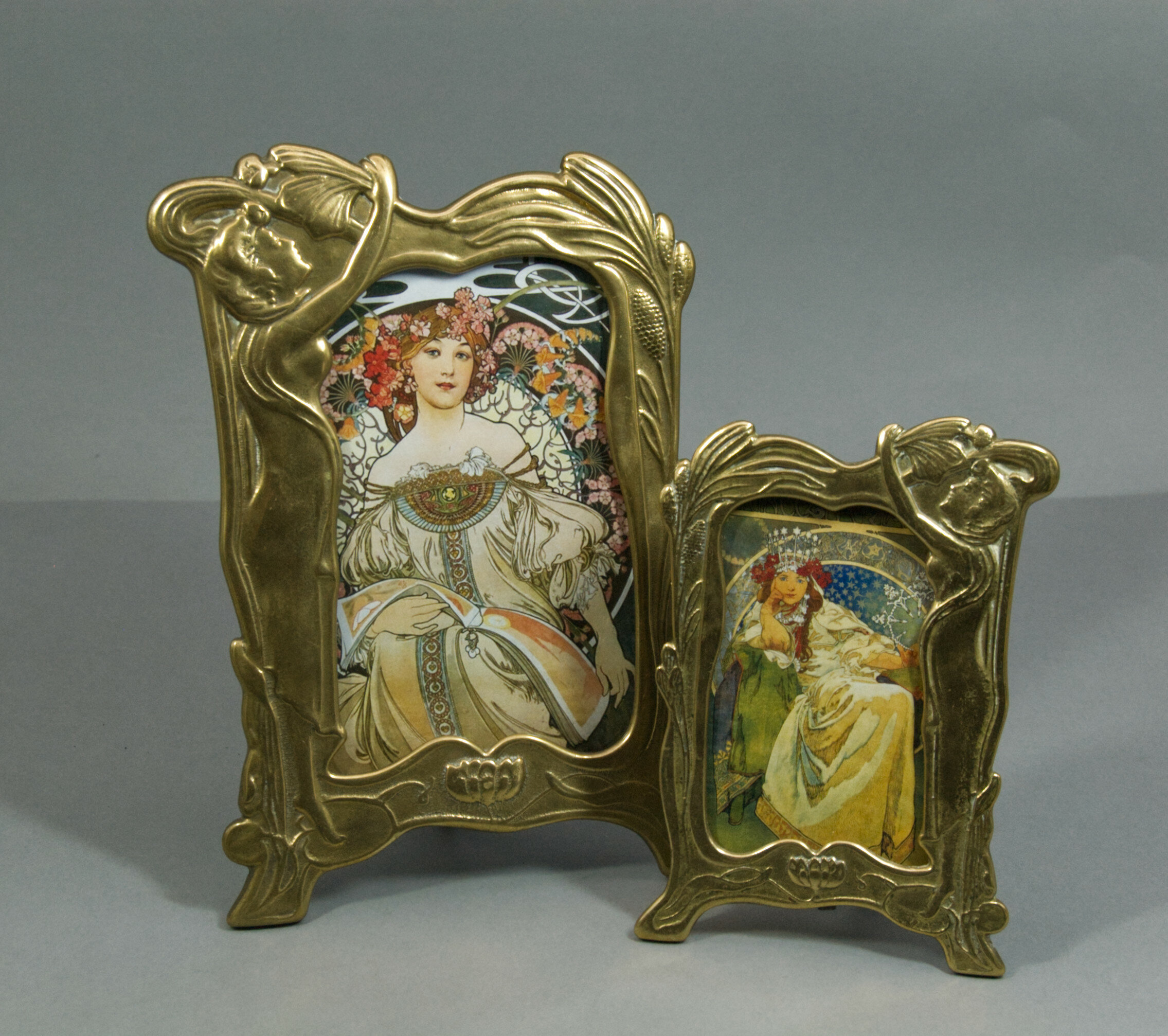
A Complementary Pair of Gilt Metal Art Nouveau style picture frames, 20th Century
Price: £45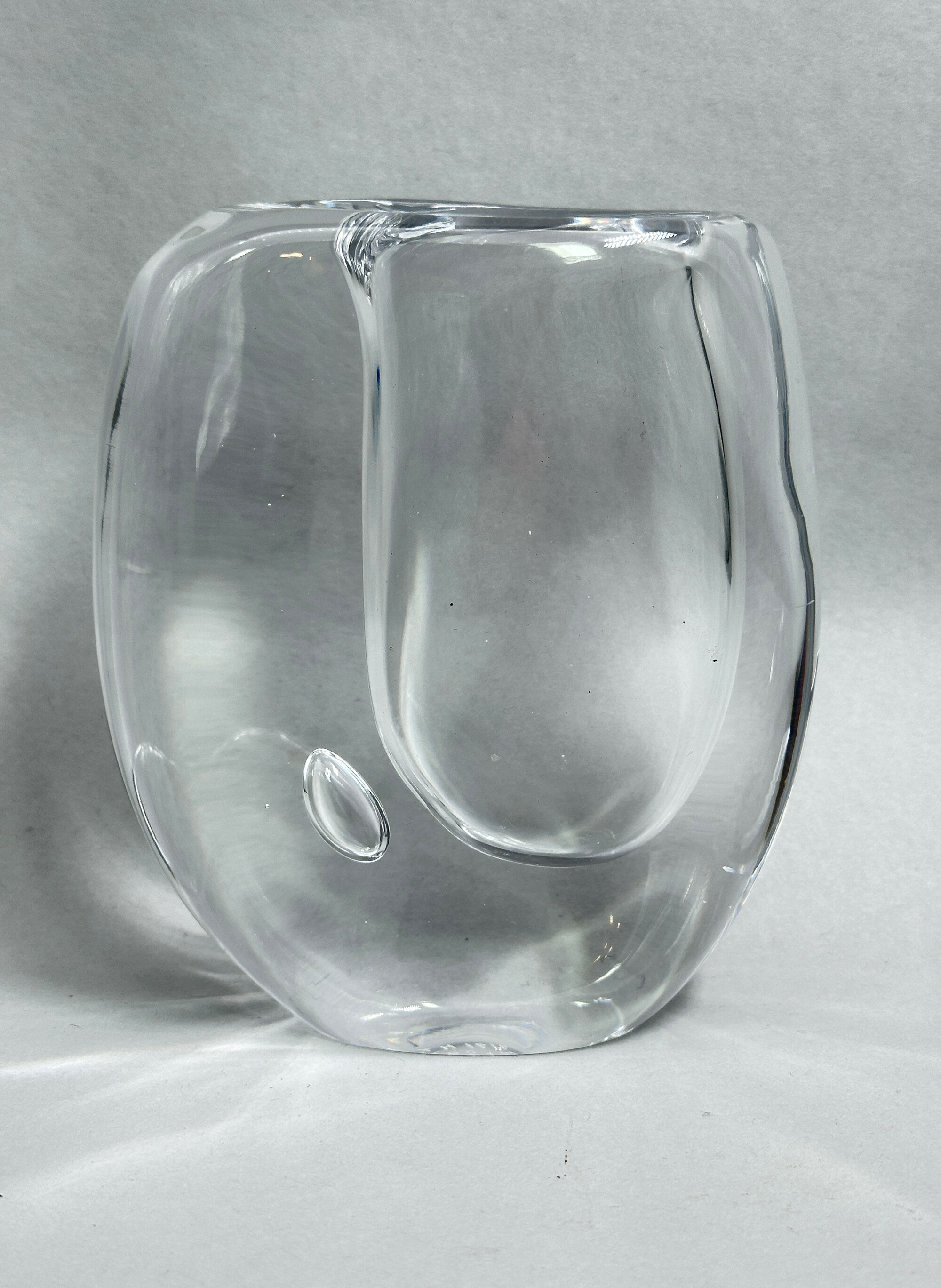
Swedish Kosta Glass Vase designed by Vicke Lindstrand circa 1960
Price: £95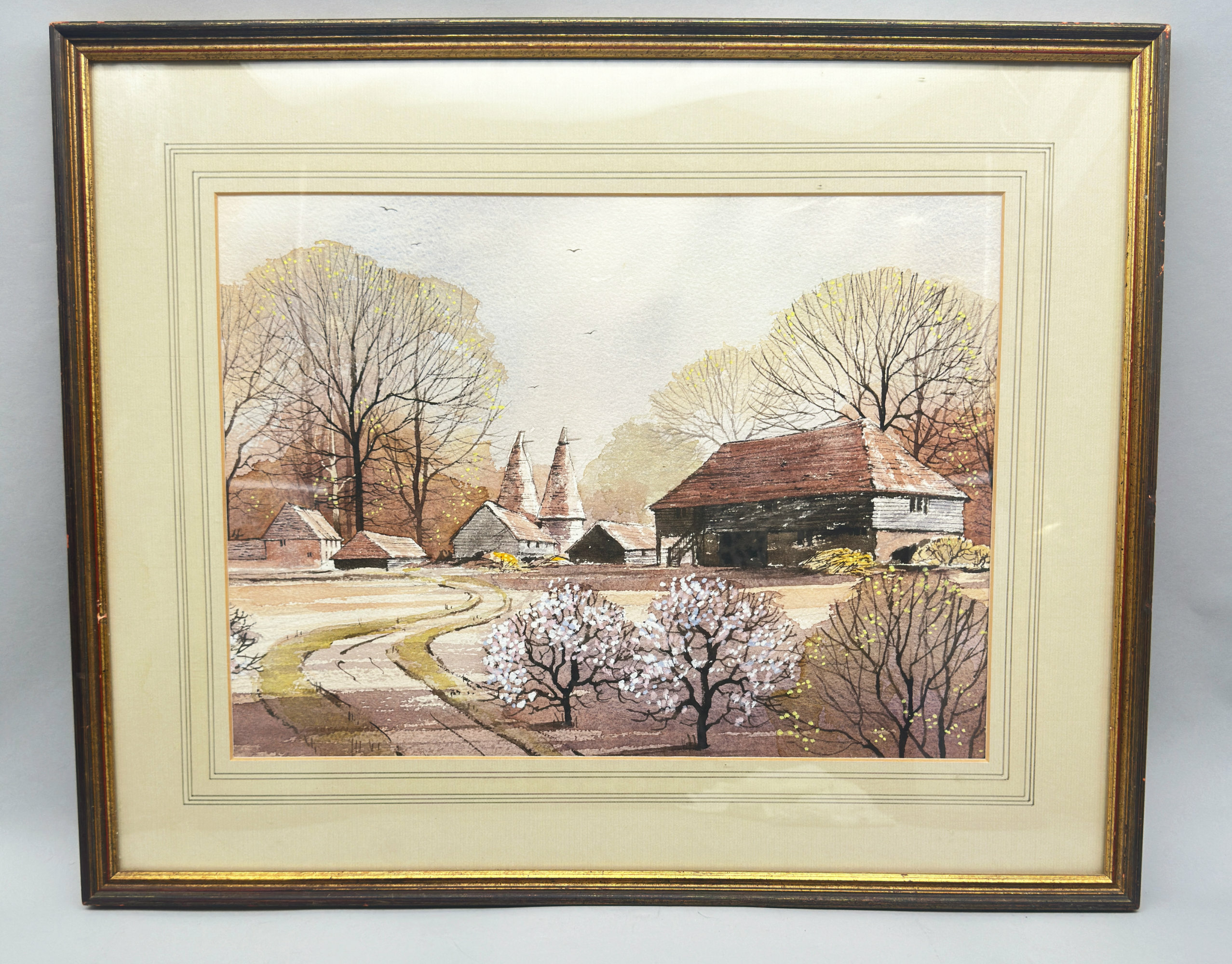
Watercolour by Elisabeth Castle, Kent Landscape Scene, framed, late C20th
Price: £45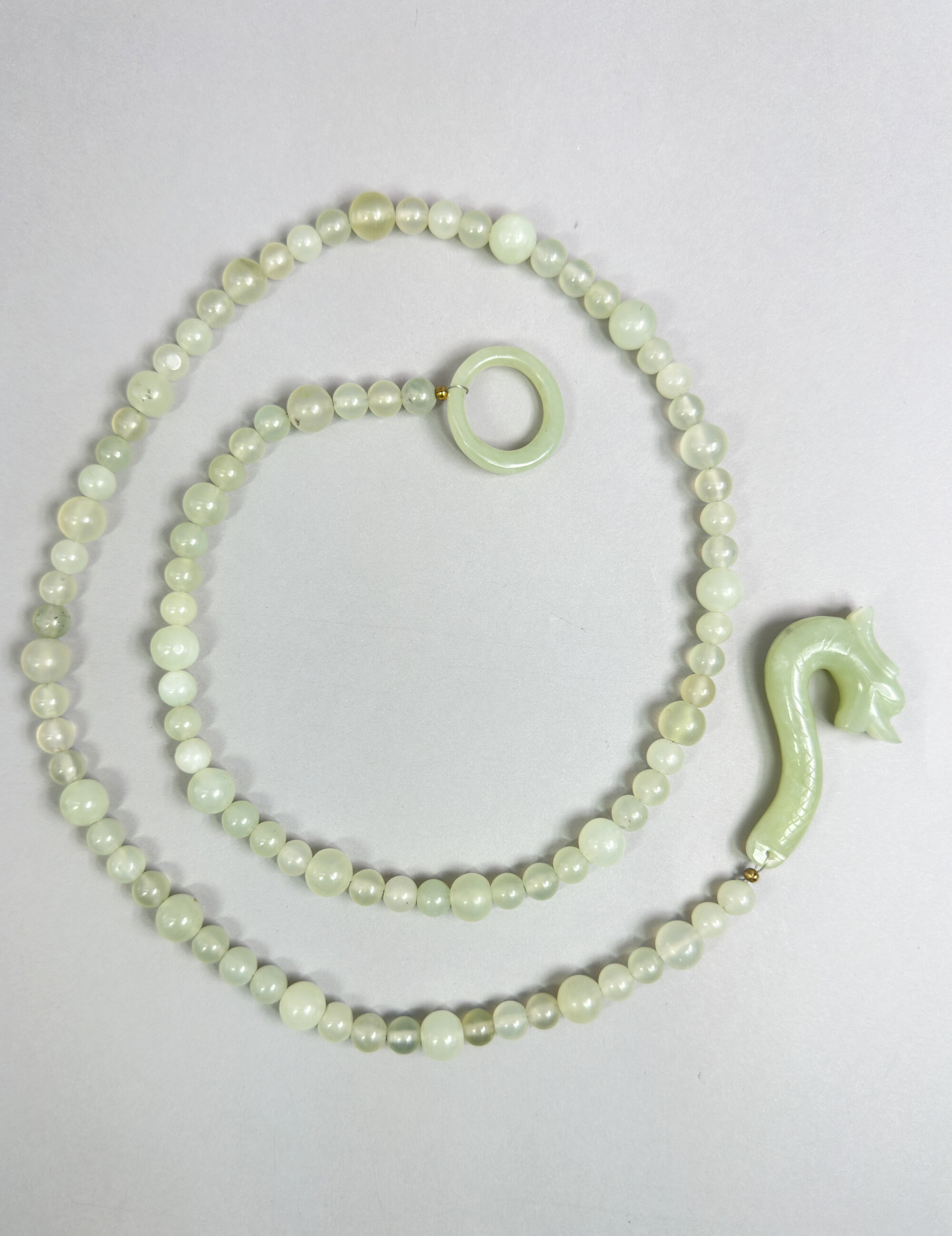
Fun vintage jade necklace with hook and ring closure c1980
Price: £25
Japanese Ceramic Figural Group of two Geisha, late C19th
Price: £25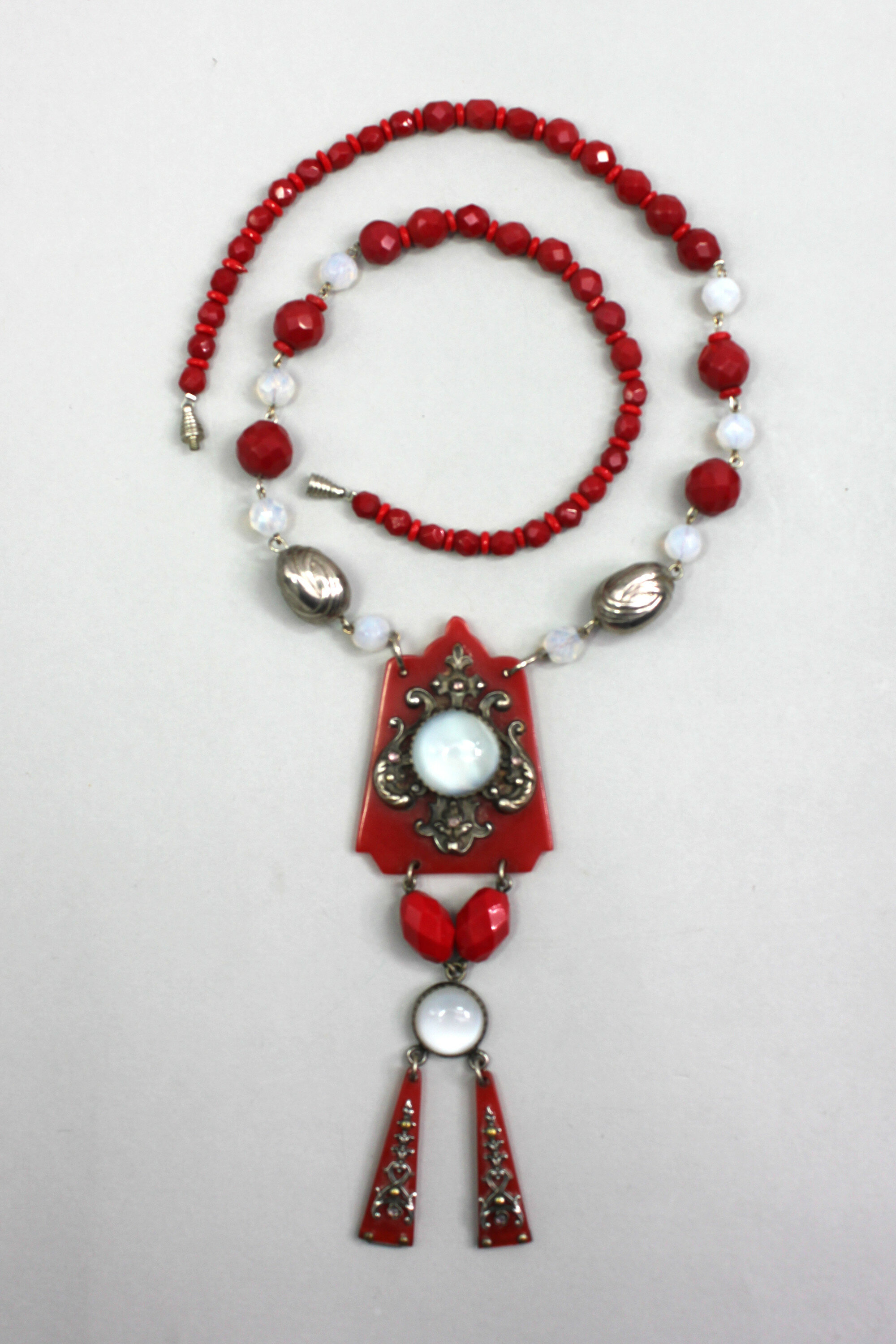
Art Deco Galalith Necklace and Pendant with Coral Red plaques, 1930s
Price: £75Galalith is a a synthetic plastic made out of the interaction of casein and formaldehyde and was introduced to the fashion world by Coco Chanel in 1926. The commercial name is derived from the Ancient Greek words 'gala' (milk) and 'lithos' (stone).

Art Deco Scottish moss agate ring
Price: £35
Framed poster for Victor Bicycles, Overman Wheel Company, C20th
Price: £55Will H. Bradley (1868-1962) was an American artist and illustrator whose work enjoyed enormous popularity in the late nineteenth and early twentieth centuries, indeed he became America’s highest paid artist. Some of his most elaborate and original poster and advertisement designs were produced in the last years of the nineteenth century and he was an apt choice for Albert Overman’s then thriving business. His style was quintessentially Art Nouveau and is often compared to that of the English artist, Aubrey Beardsley, indeed he was sometimes dubbed as the ‘American Beardsley'. This poster design for Overman has been much copied and reproduced over the years with original examples residing in museum collections. The dating of this particular printing is not wholly certain; the reproduction is certainly way superior to that of more modern versions and the accompanying frame also indicates some age, perhaps to the 1960s or through to the 1980s. We have, then, both an elegant decorative item and an excellent addition to a collection important poster art.

Large Art Deco green Bakelite Buckle with a label for Harlem Adler, American 1930s
Price: £35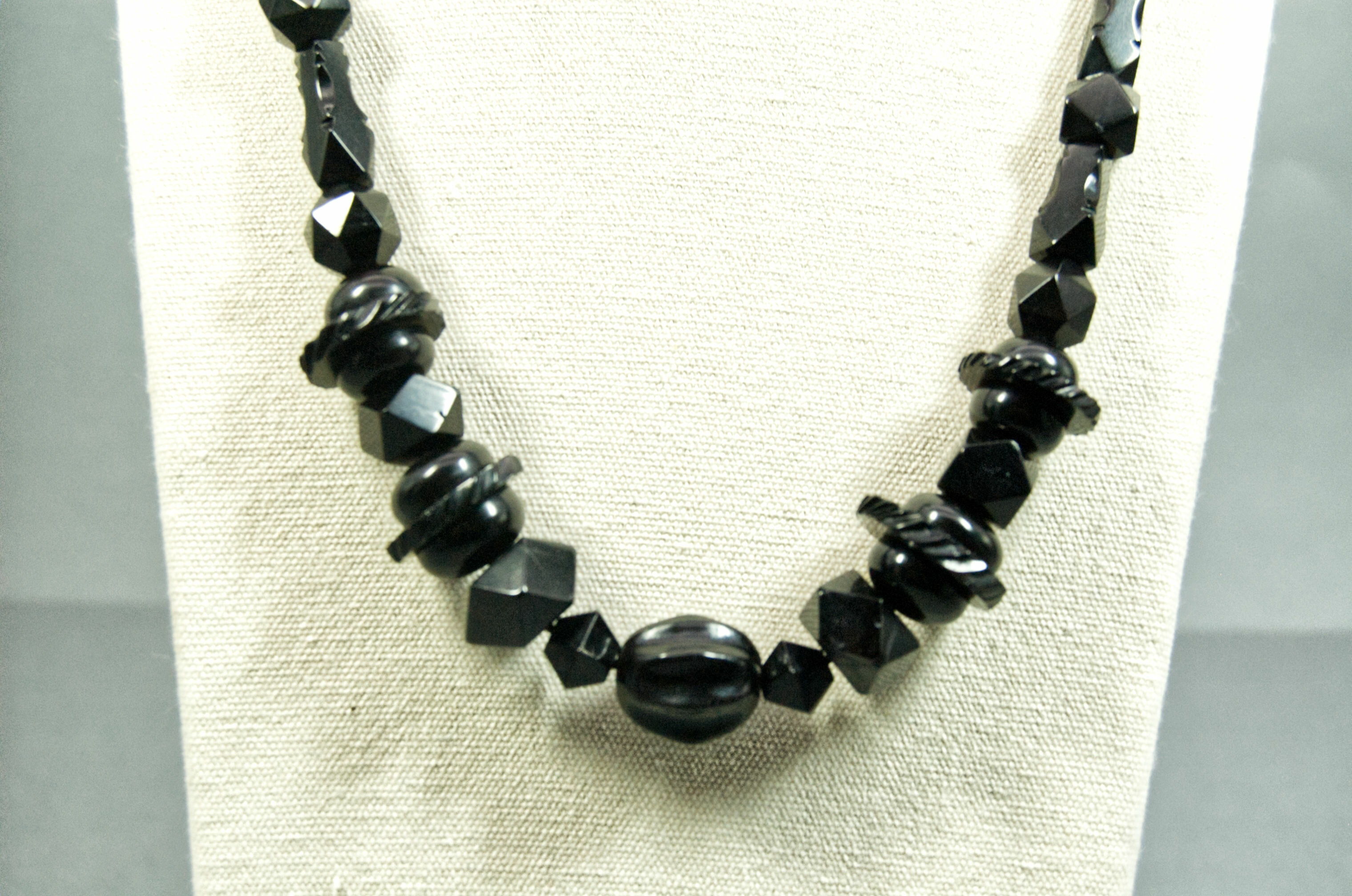
Art Deco Whitby Jet Necklace
Price: £50
Art glass feather design Vase, probably German second half C20th
Estimate: £30 – 40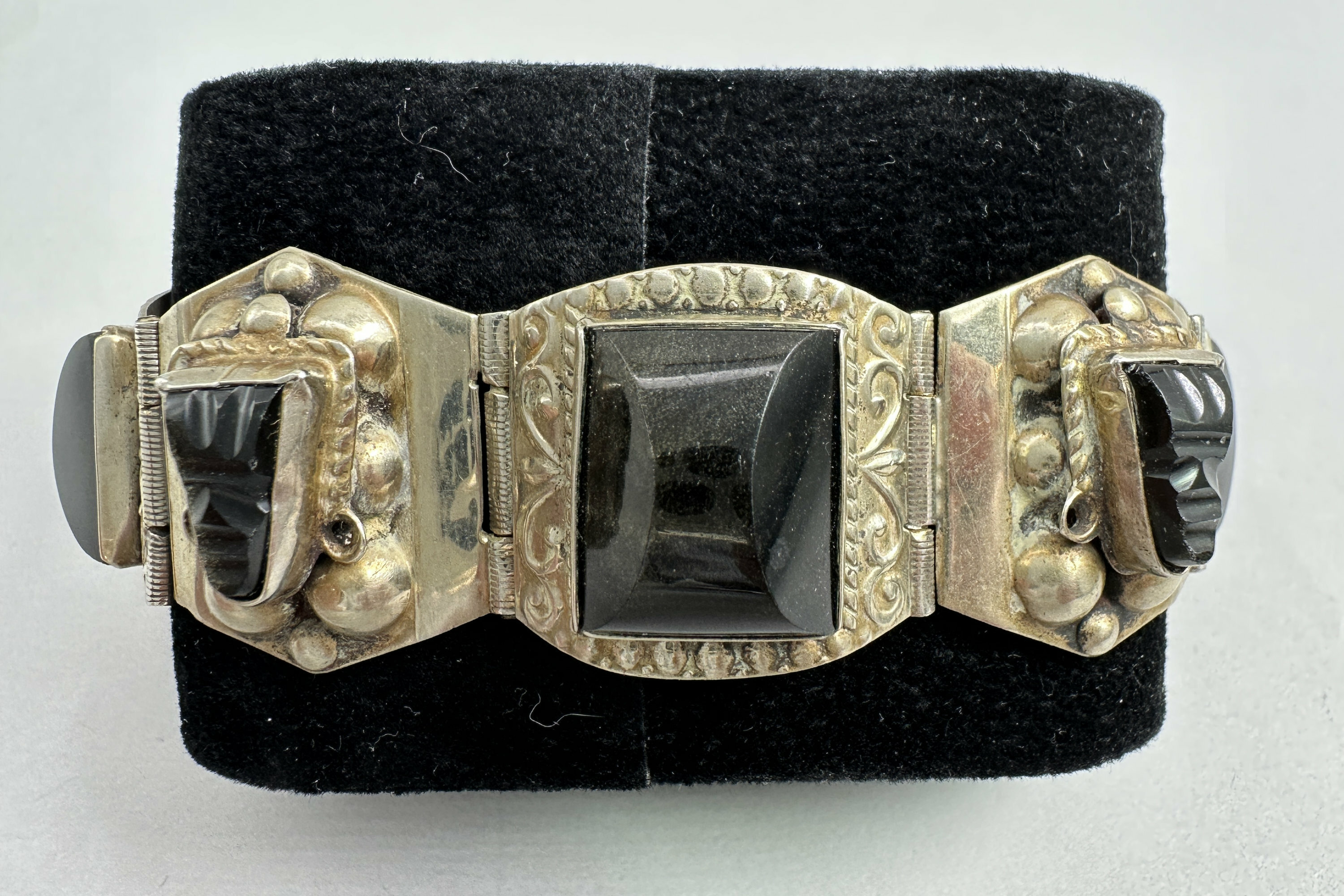
Taxco bracelet set with carved obsidian stones c1950
Price: £55
Chinese Soapstone Brushwasher with flowering lotus, early C20th
Price: £95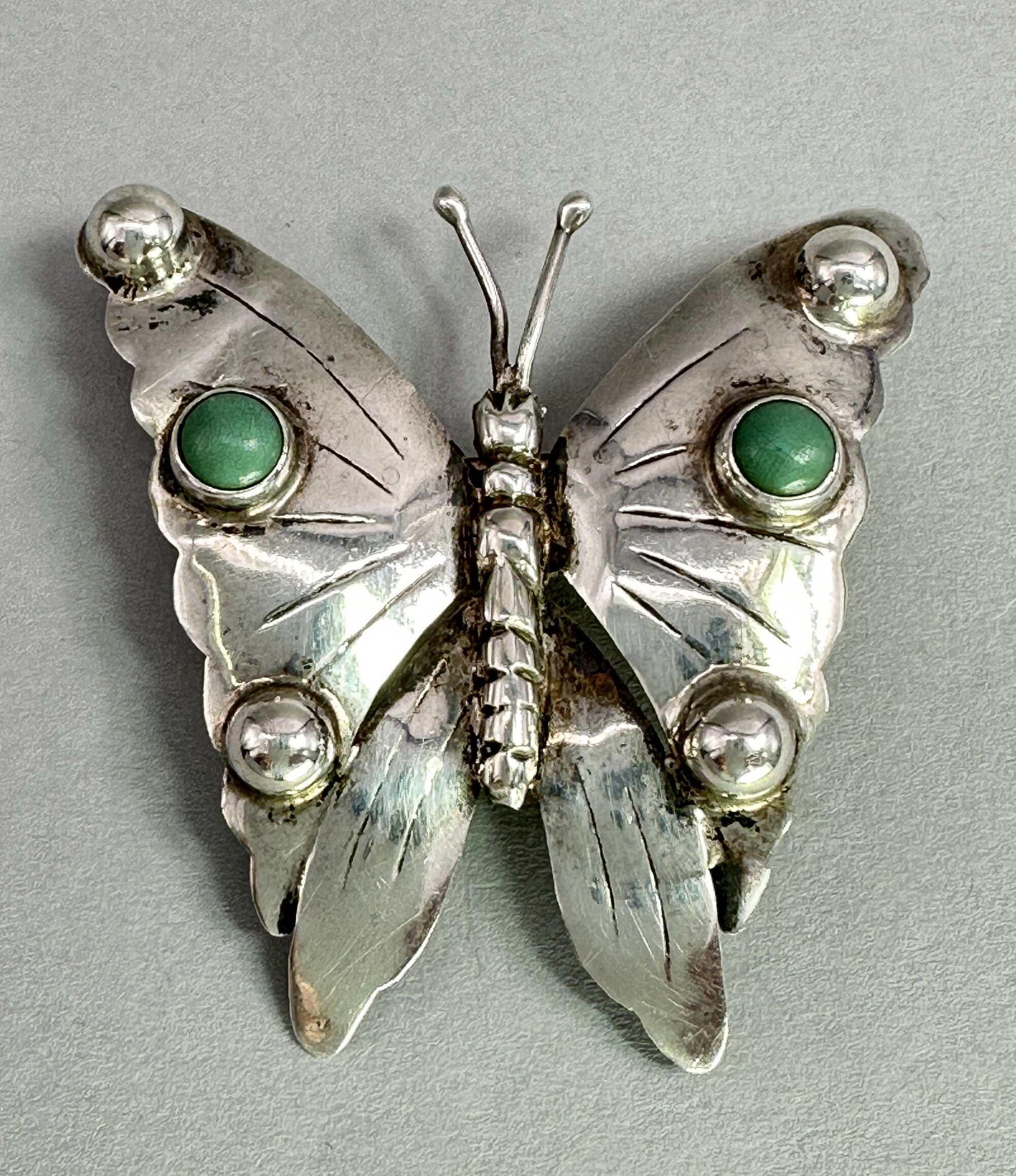
Silver Brooch in the form of a Butterfly, Taxco 1940s
Price: £65
Victorian Grand Tour Wedding Cake glass necklace
Price: £125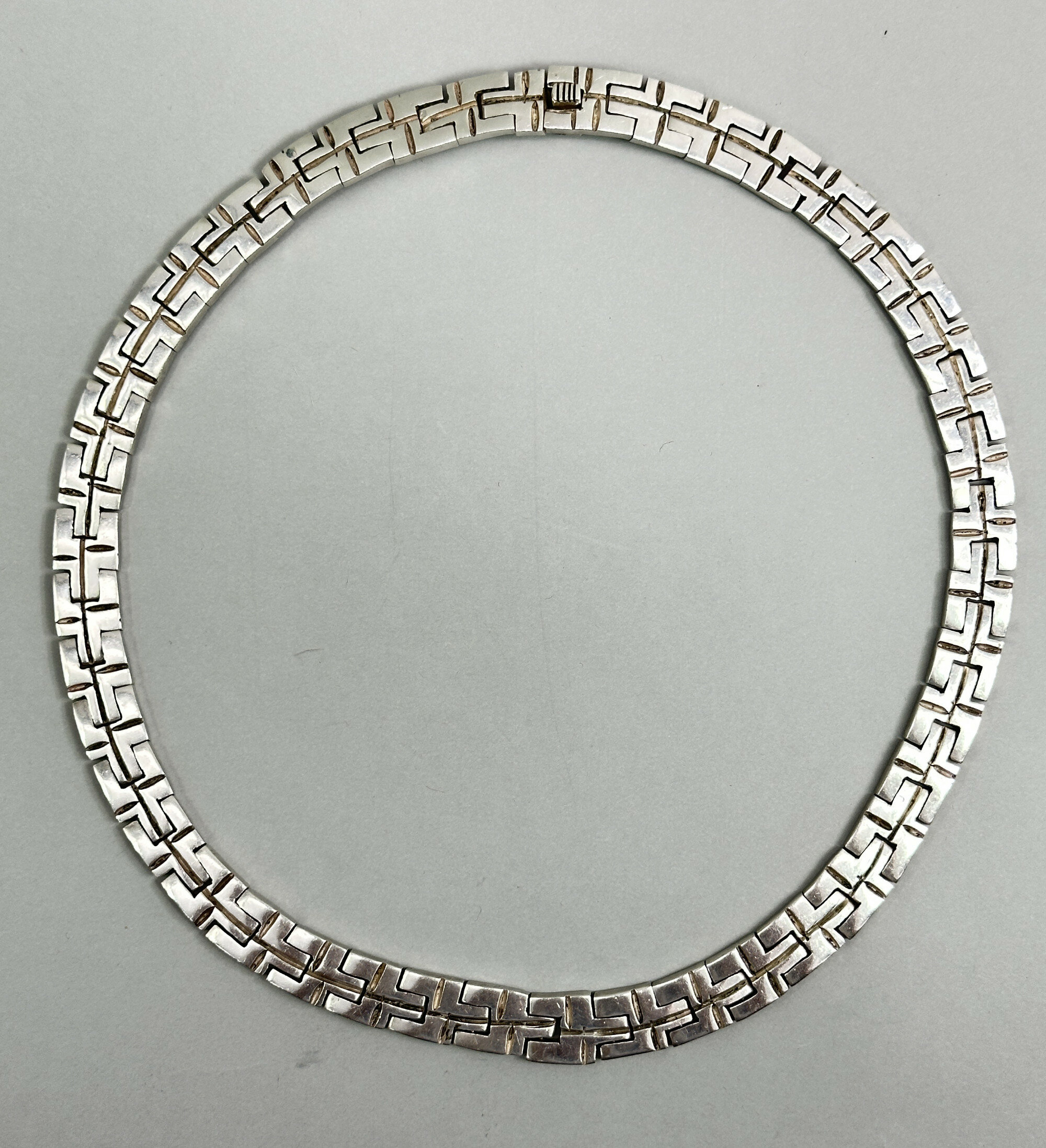
Taxco collar necklace by Rubi Ramirez c1950
Price: £350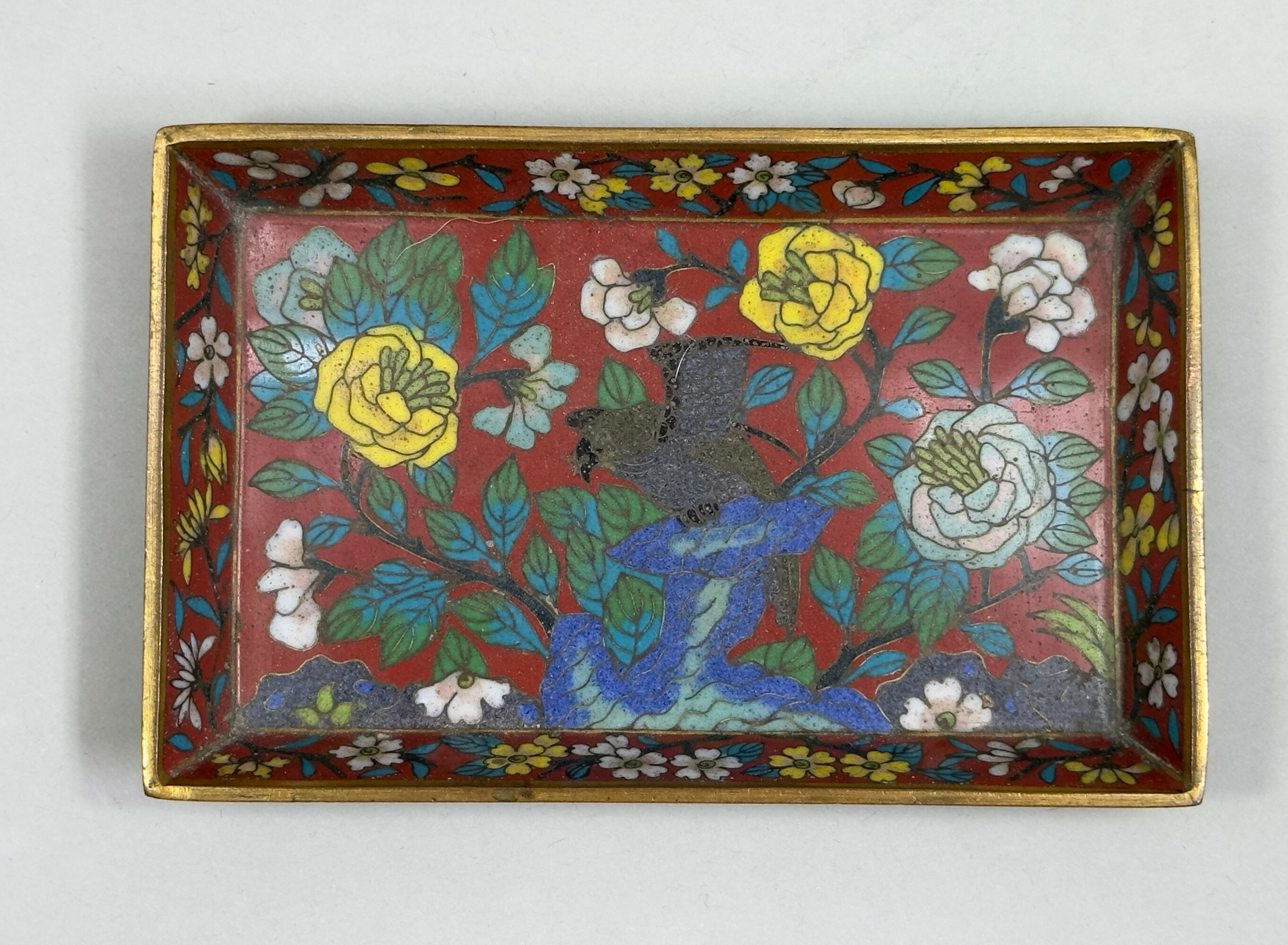
Chinese Cloisonne Small Tray decorated with Flowers and Rocks, 19th Century
Price: £150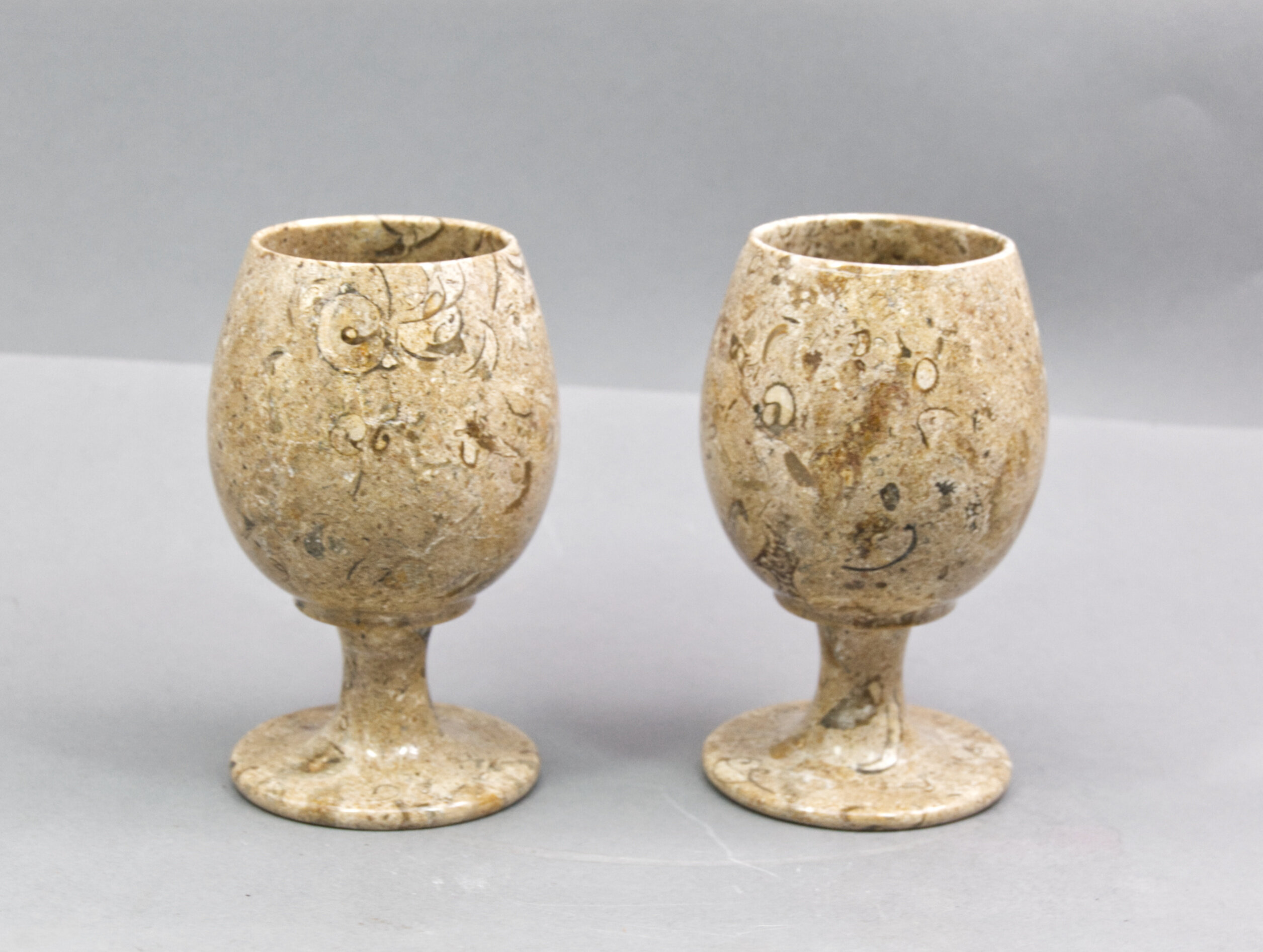
Pair of Dorset Fossil limestone goblets in presentation box
Price: £35
Pink porcelain powder box, Radnor Bone China, English Staffordshire, 1950s
Price: £15Radnor was the trade name used by Hall Bros (Longton) Ltd. Hall Brothers was a China manufacturer based at the Radnor Works, Longton, Stoke-on-Trent, England which traded from 1947 until its liquidation in 1972. It produced figures, birds, toby jugs and floral ware, mainly small porcelain boxes which were distinguished by their decoration of finely modelled flowers (see image XX for an advert from the 1960s). This box is a typical example and survives in excellent condition with just a very small amount of near inevitable damage to the petals.

Chinese Bone Netsuke carving of a man holding a musical instrument, early C20th
Price: £25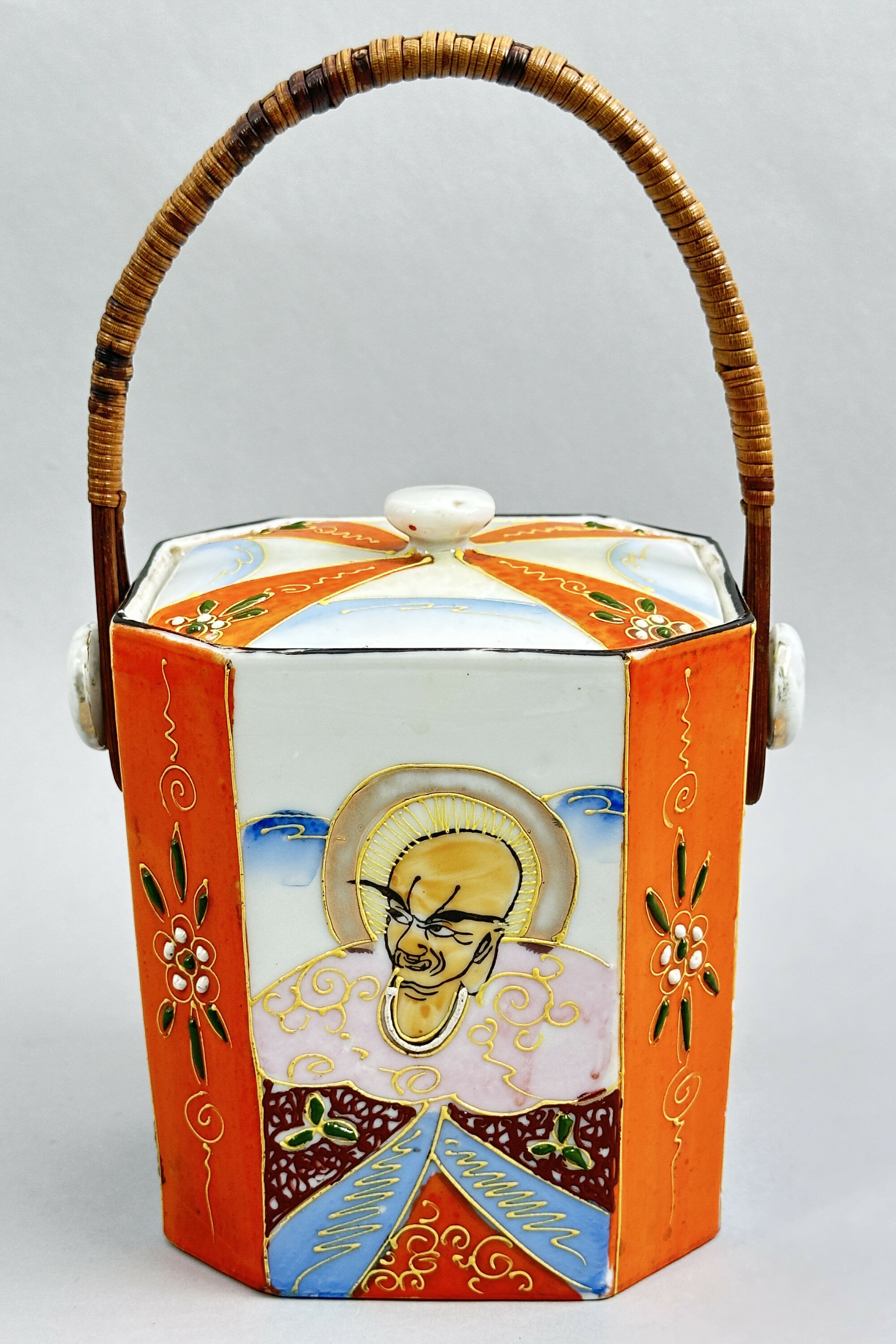
Japanese Samurai China Biscuit Box and Cover, C20th
Price: £25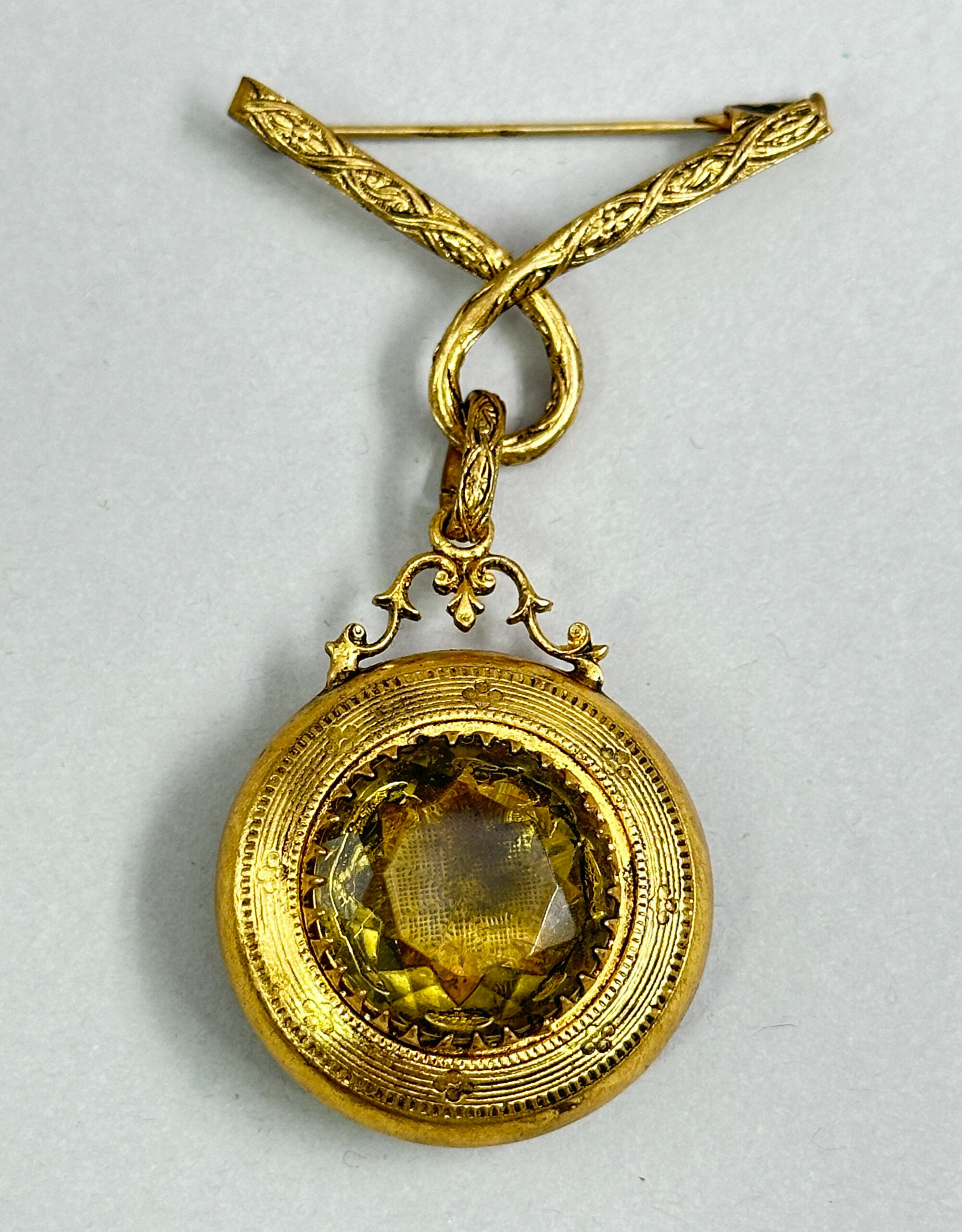
Statement fob brooch with large faux citrine drop c1950
Price: £15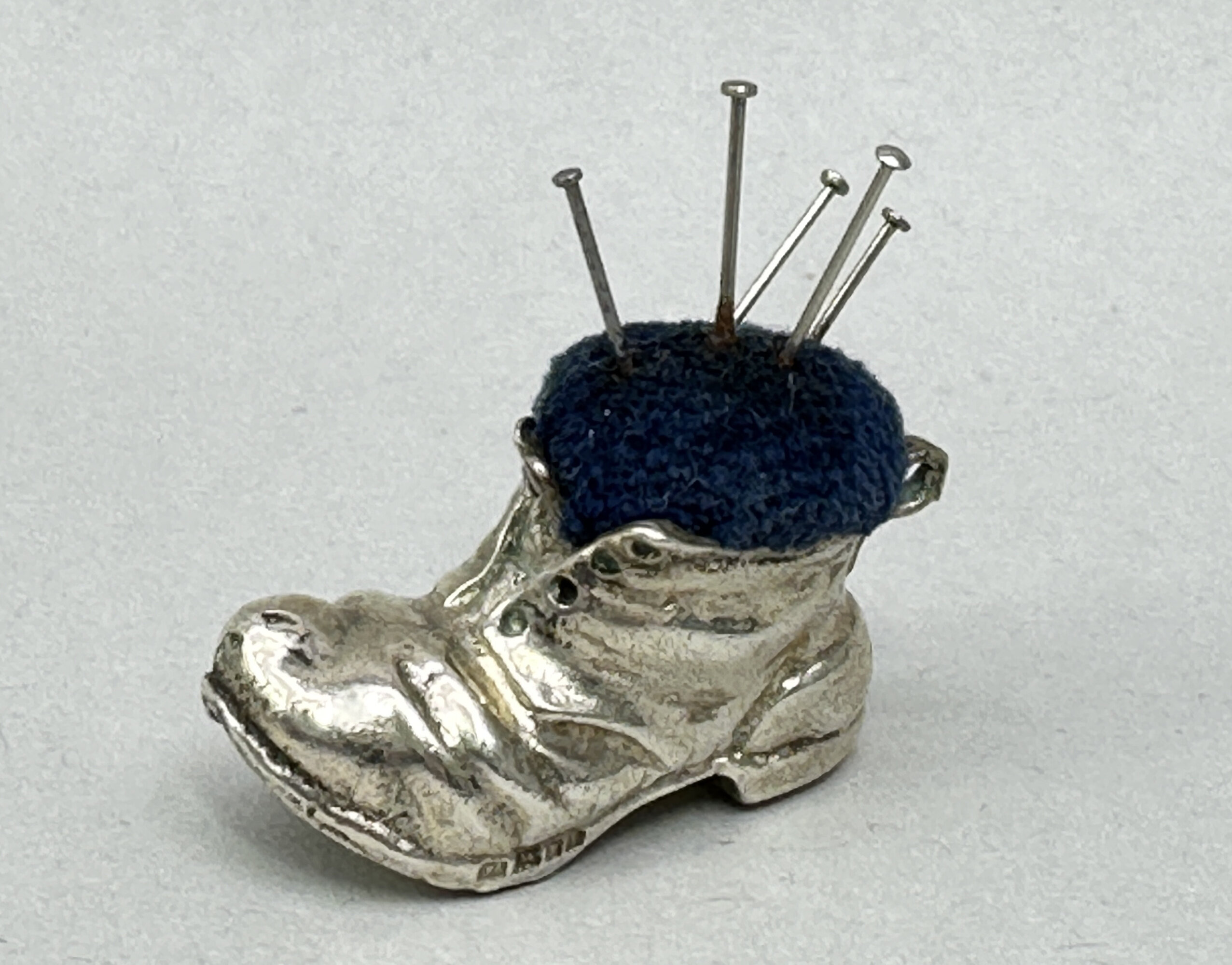
English Silver pin cushion in the form of a boot, London 1991
Price: £75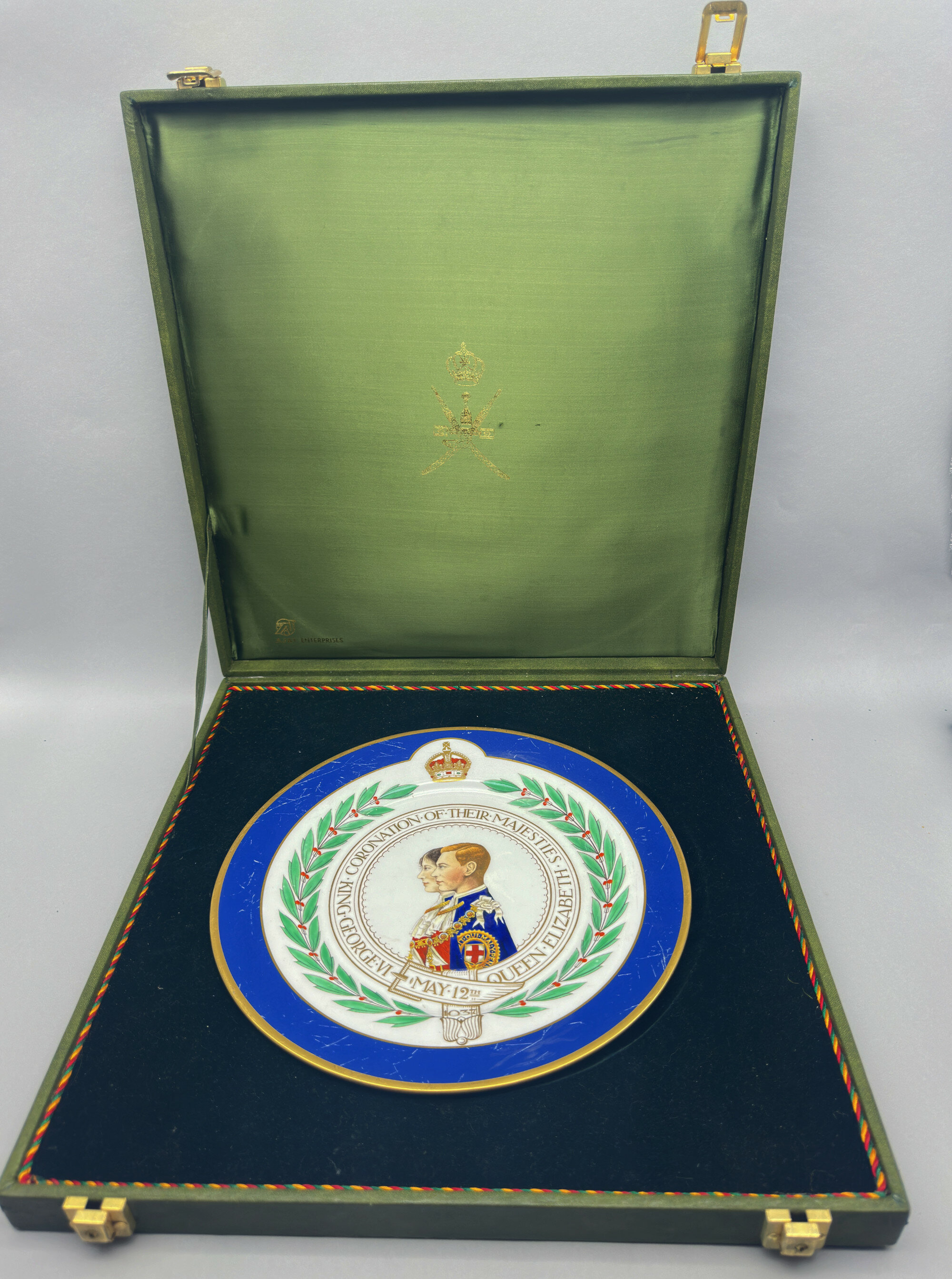
Mintons Coronation Plate, King George VI and Queen Elizabeth 1937, boxed
Price: £25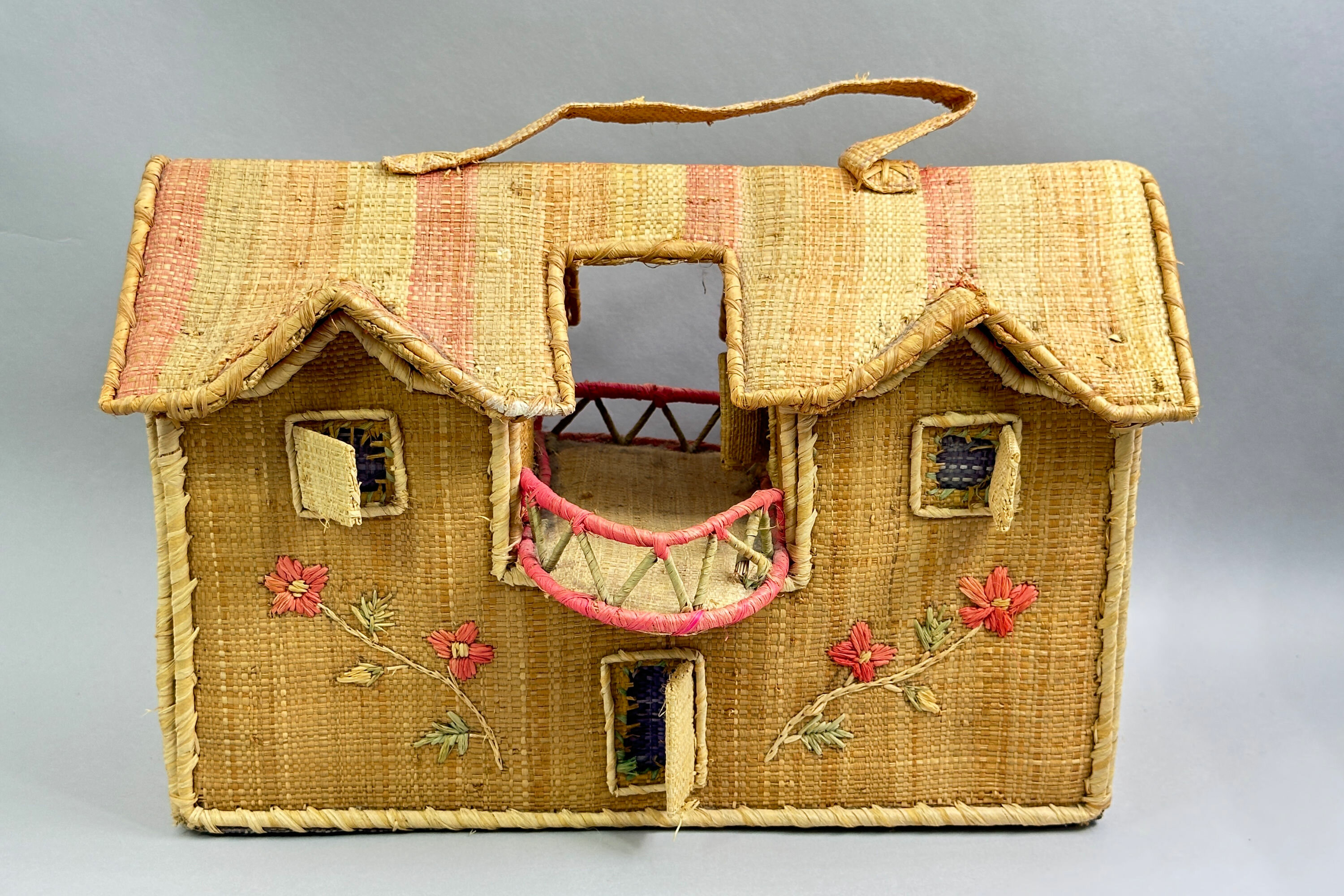
Charming Novelty handbag, Thailand 1950s
Price: £45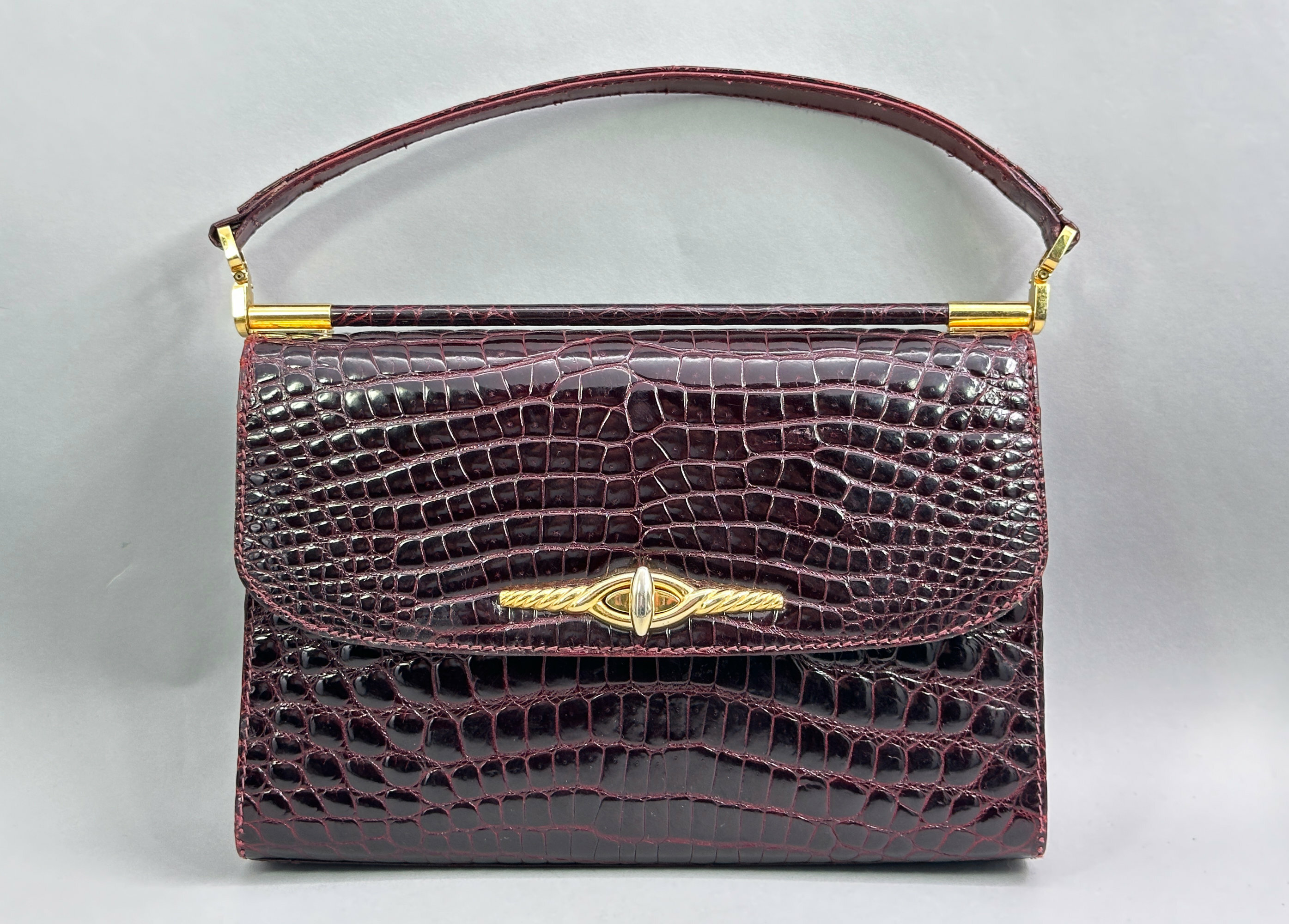
Patent Crocodile Handbag, Italian 1970s
Price: £75Please note that the original double strap handle has been recently remodelled to a simple loop as being more practical and consistent with the overall design of the piece.


